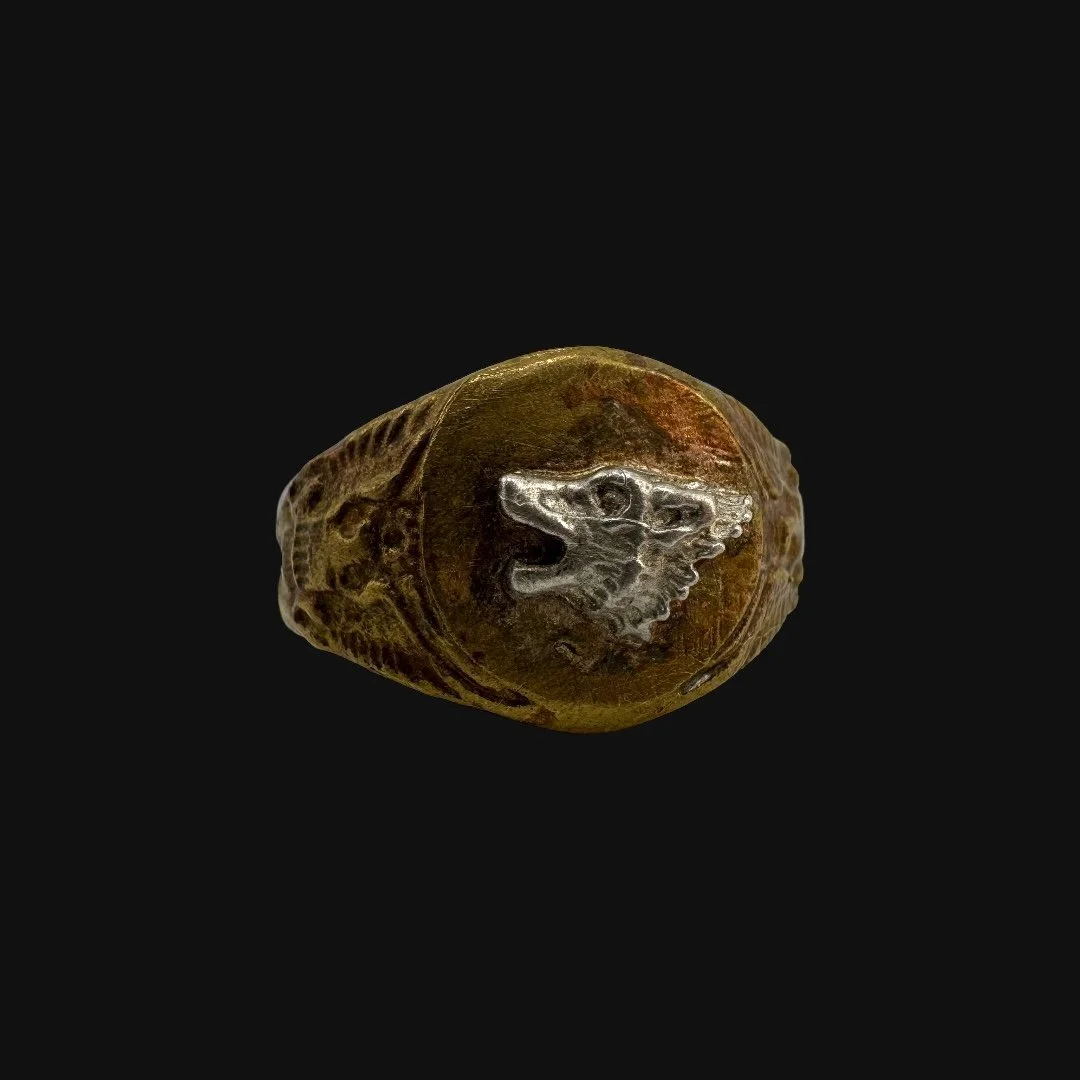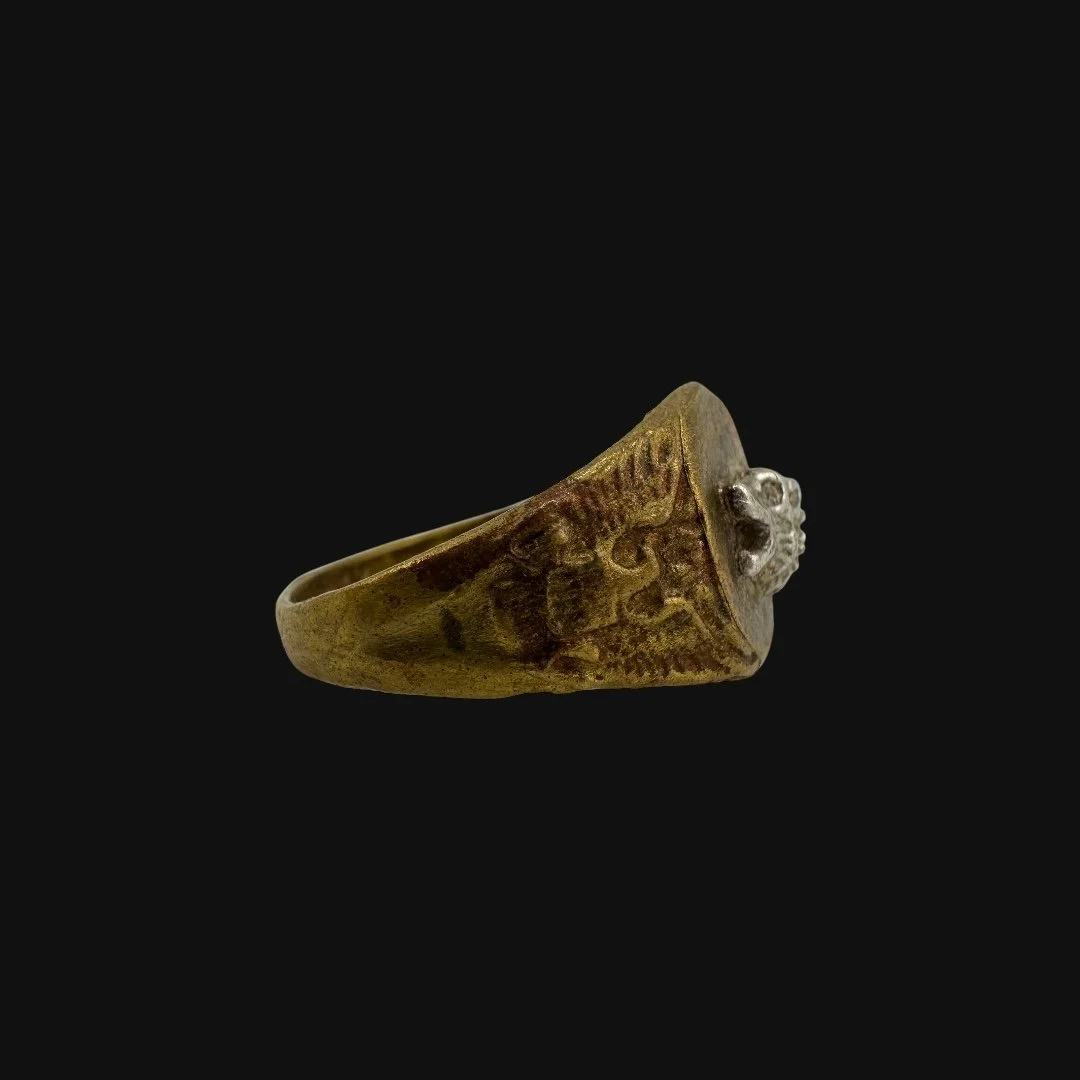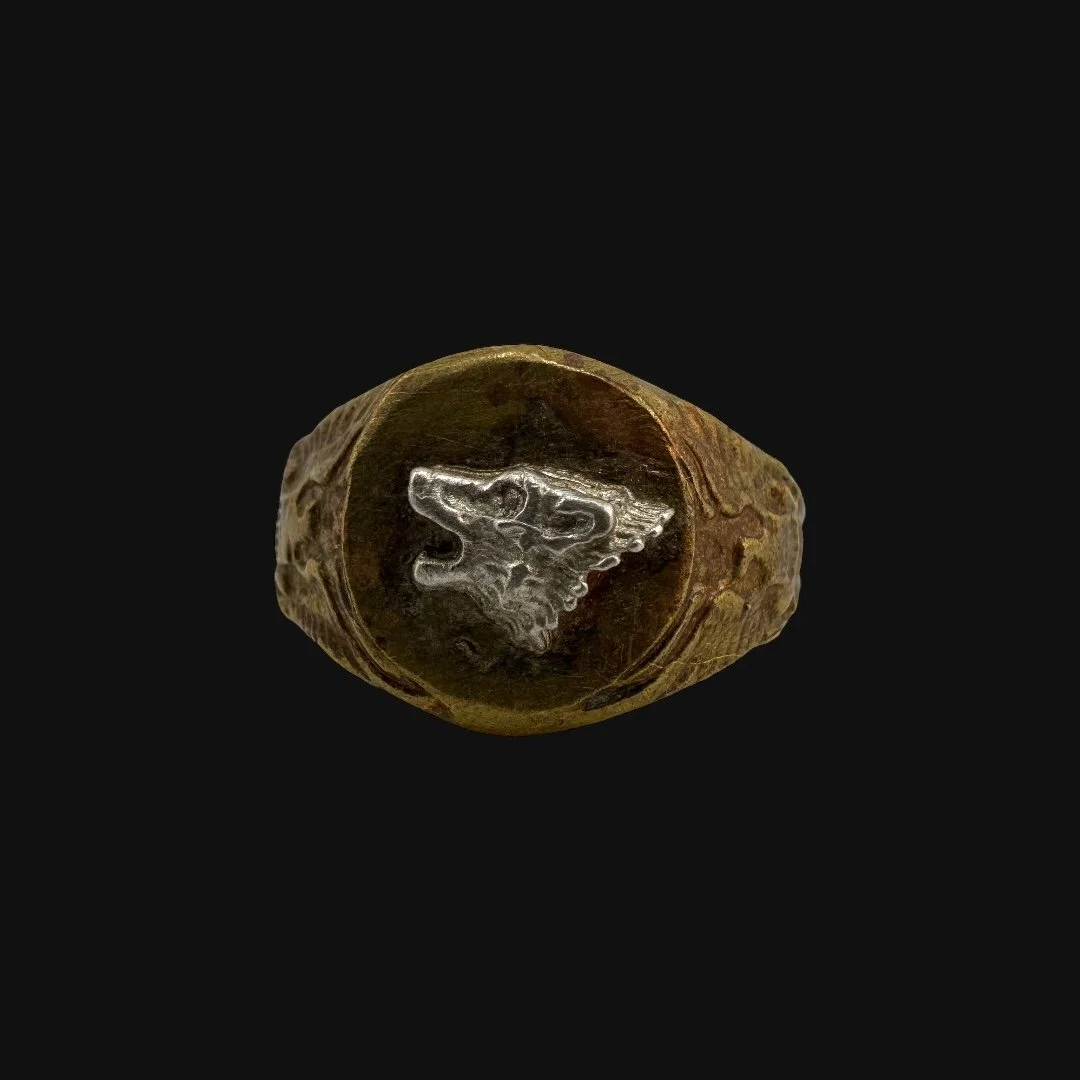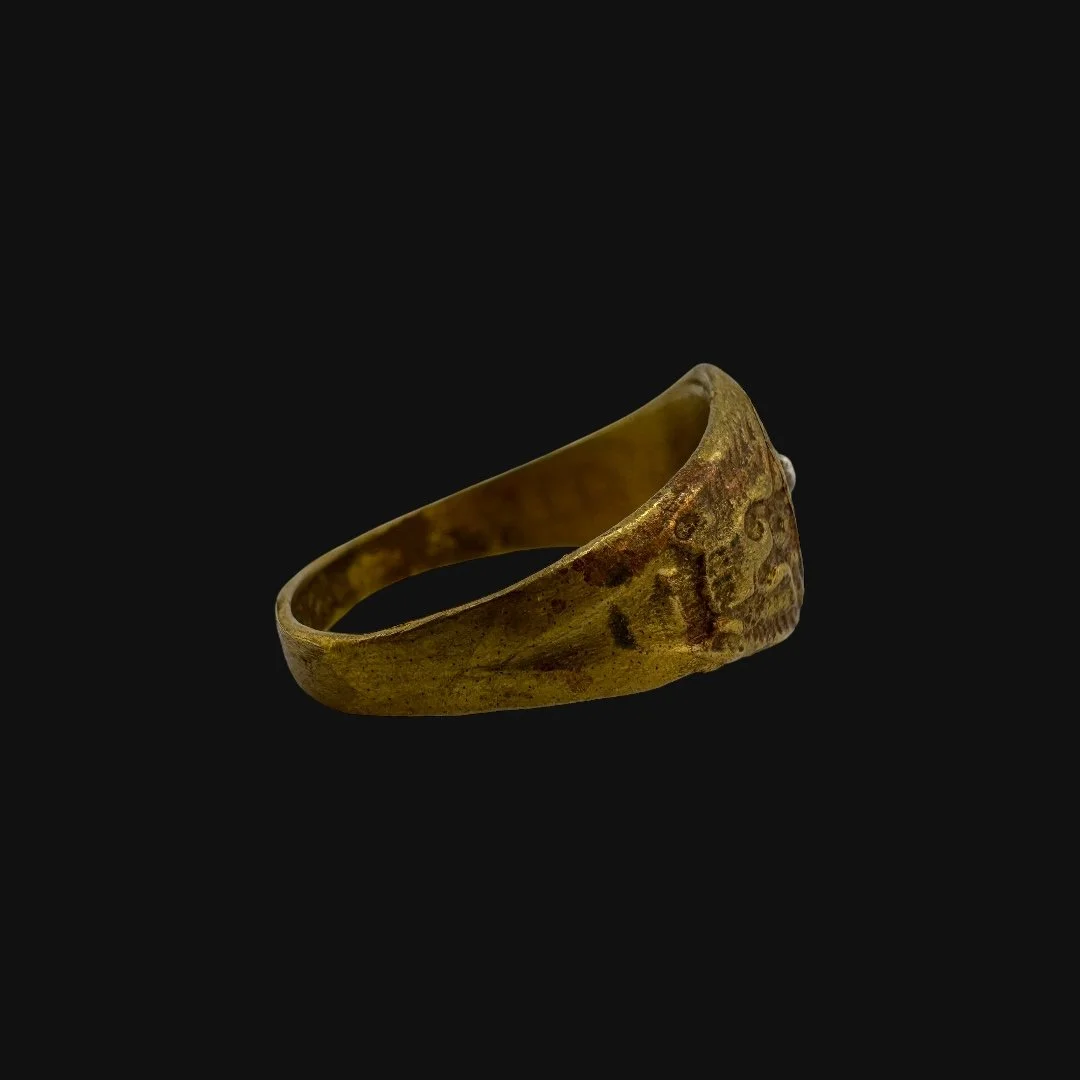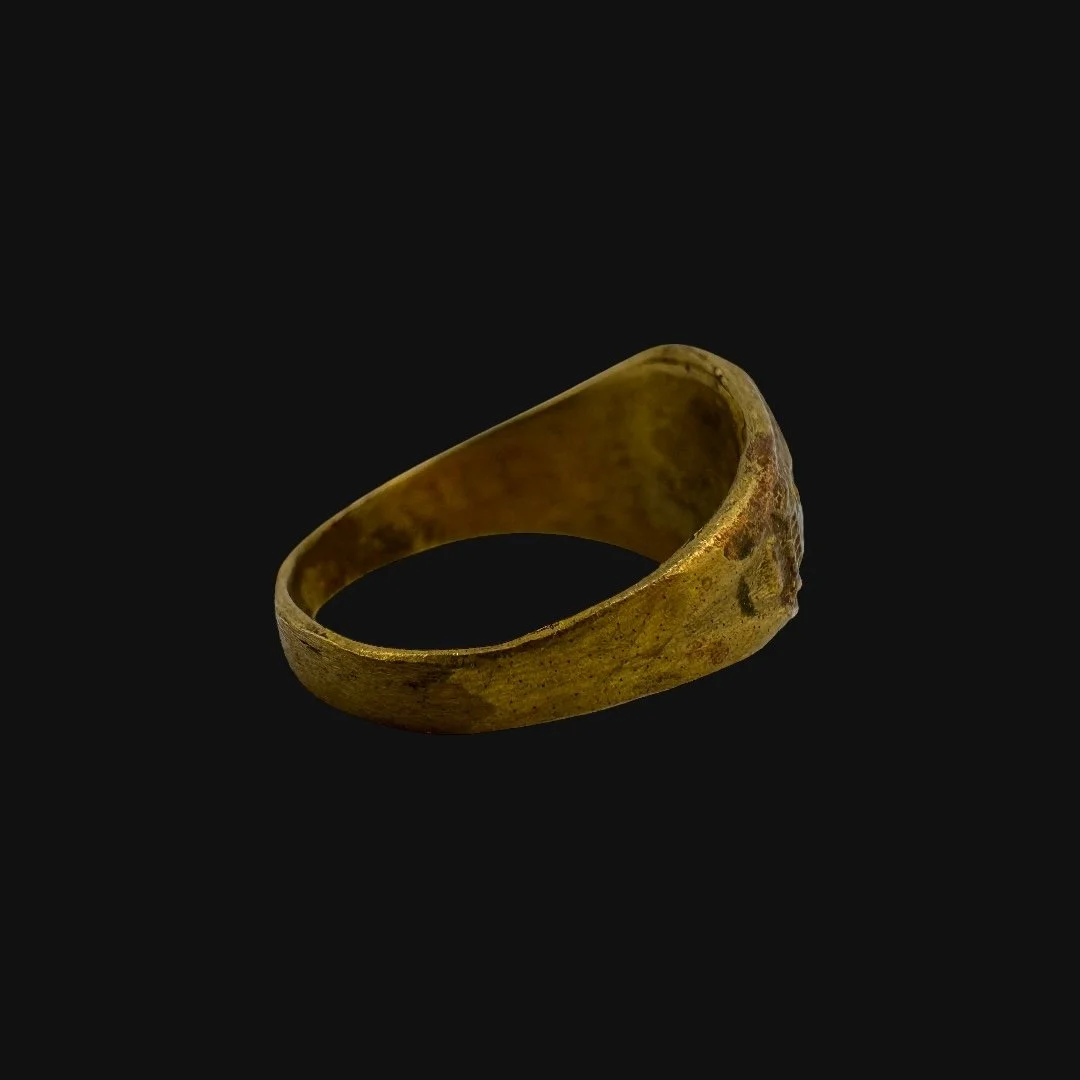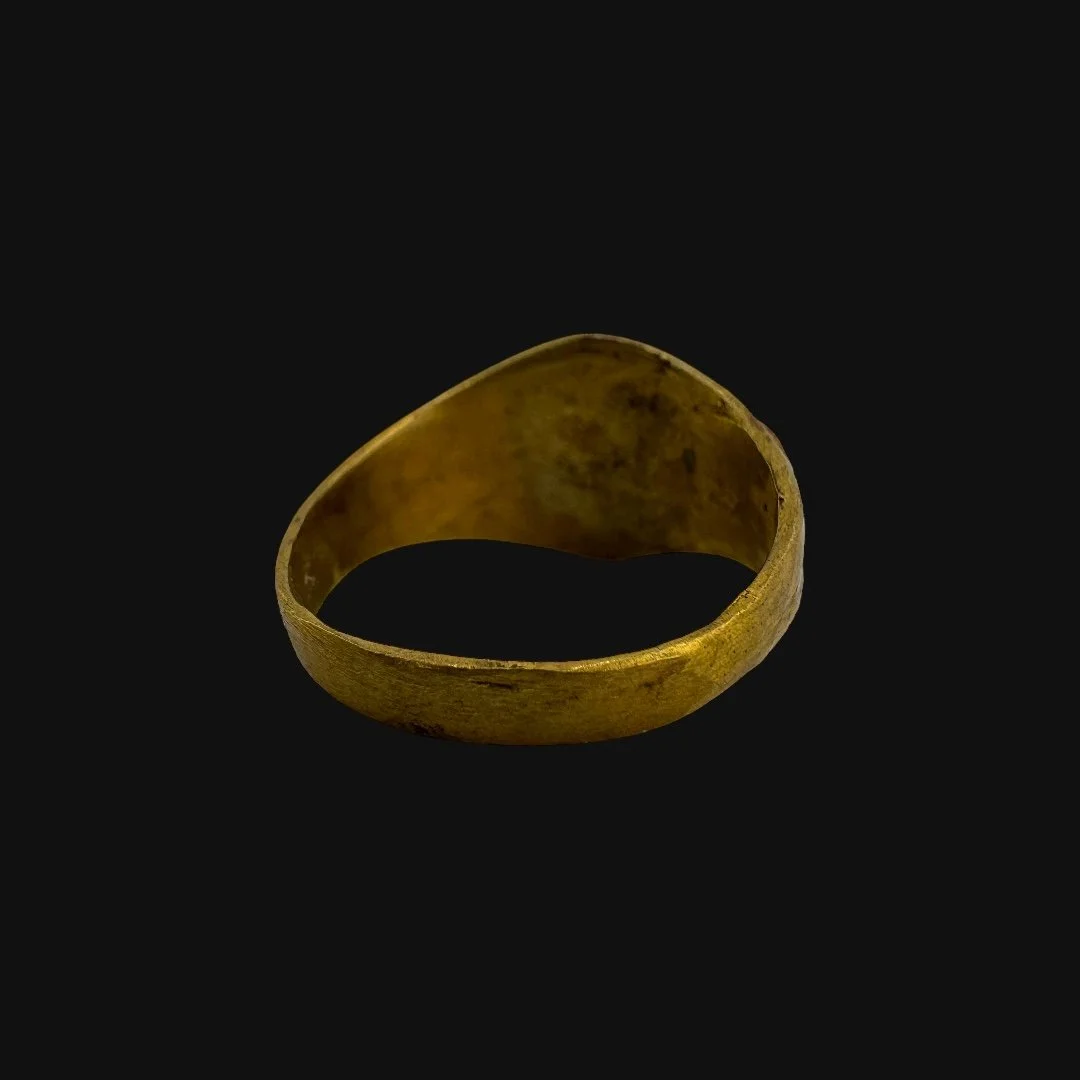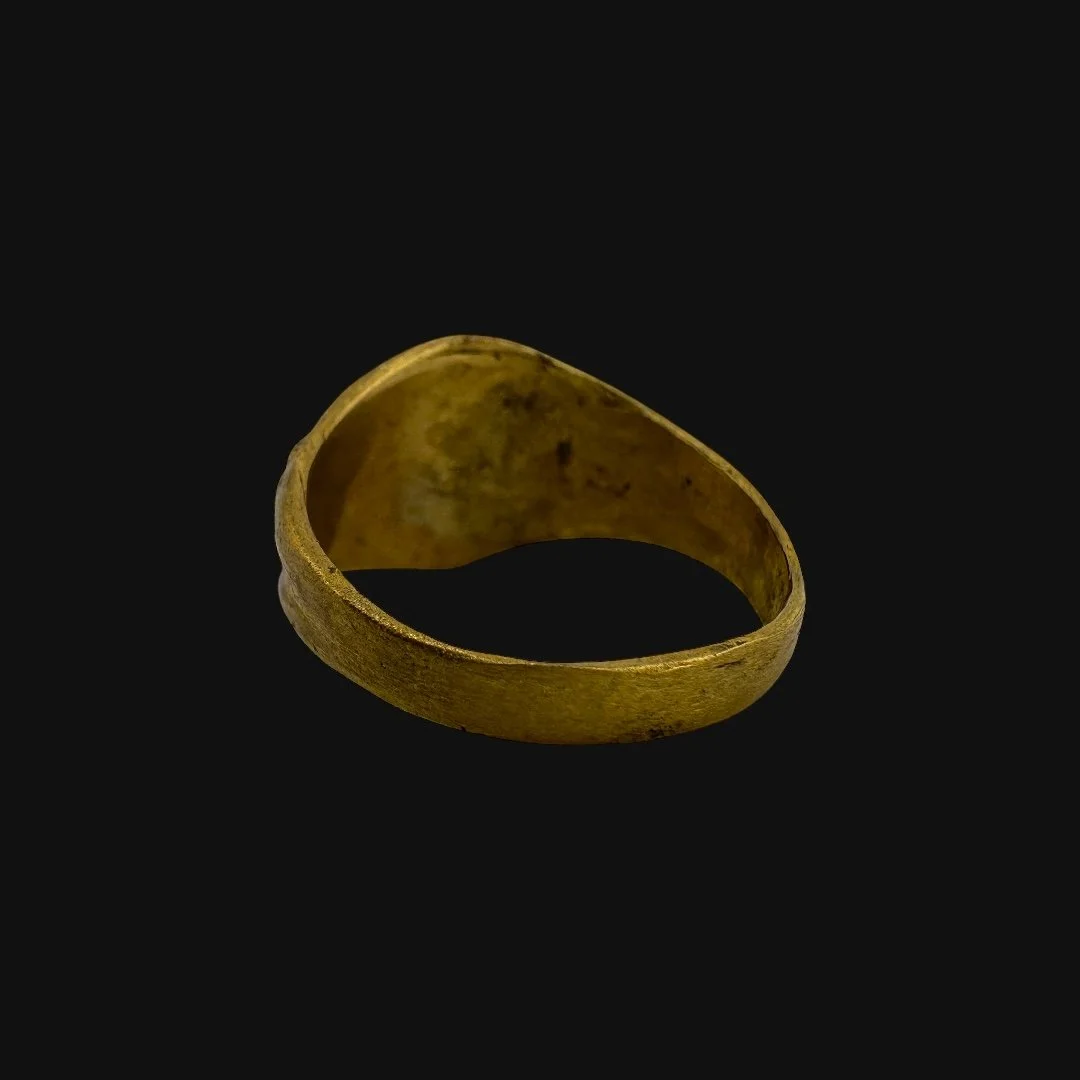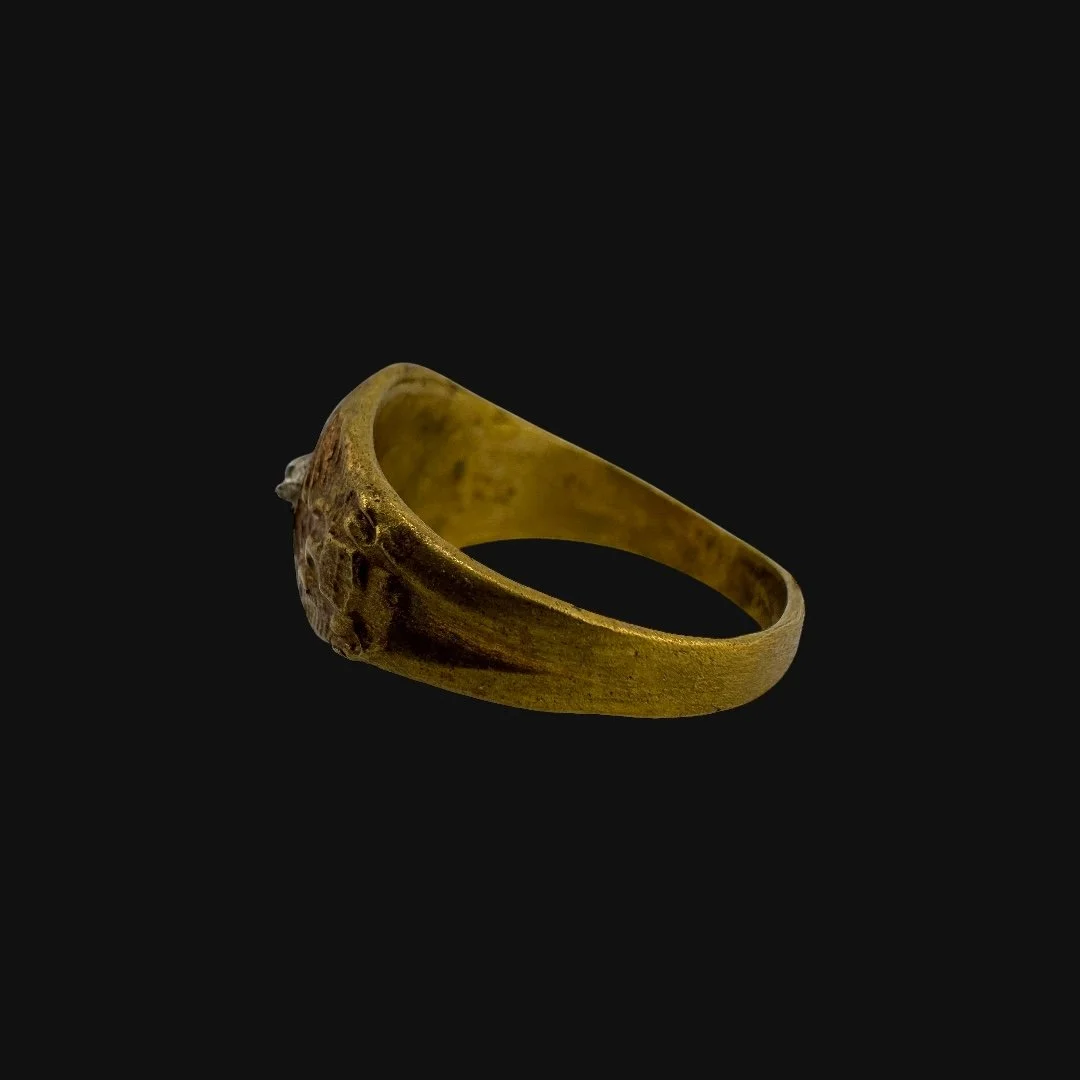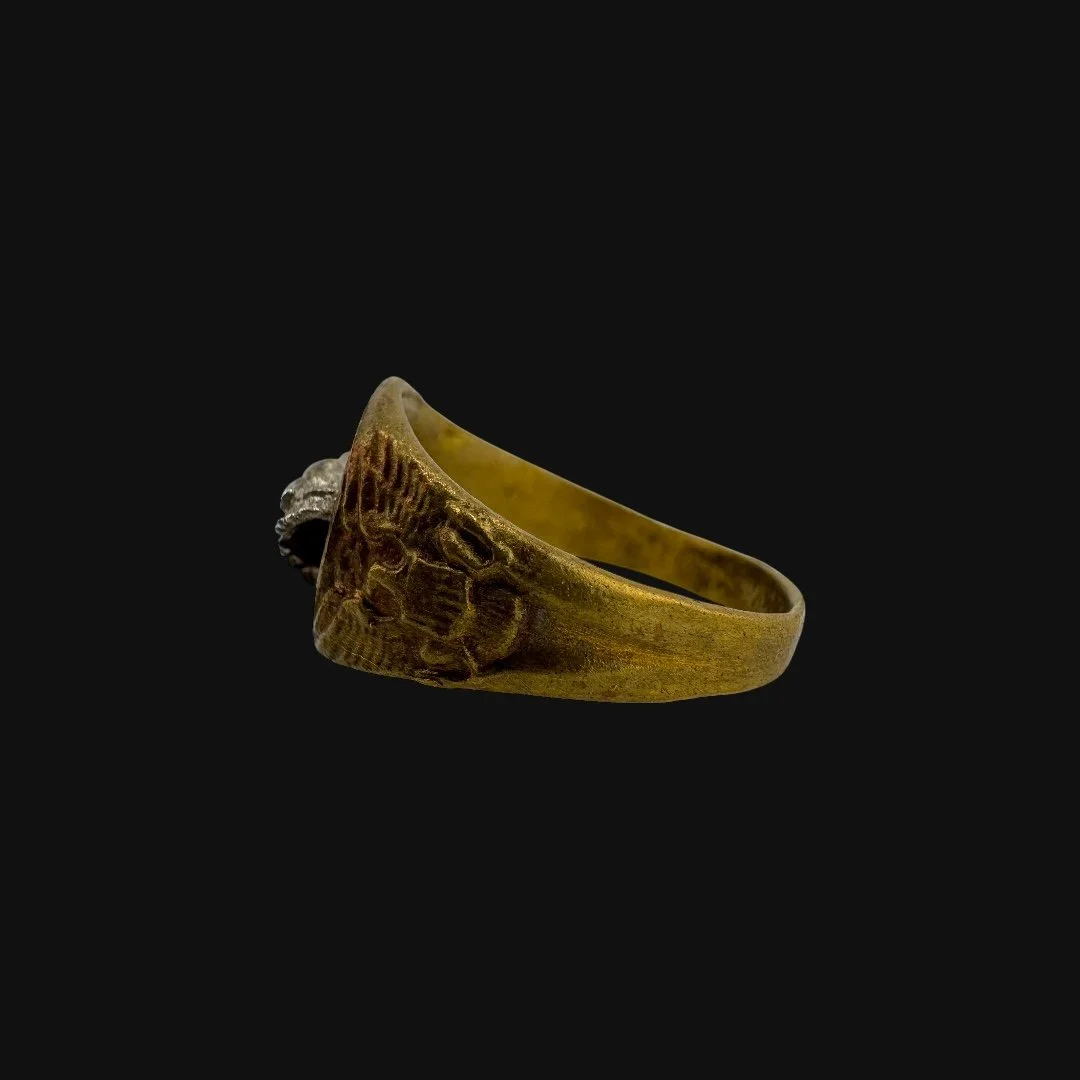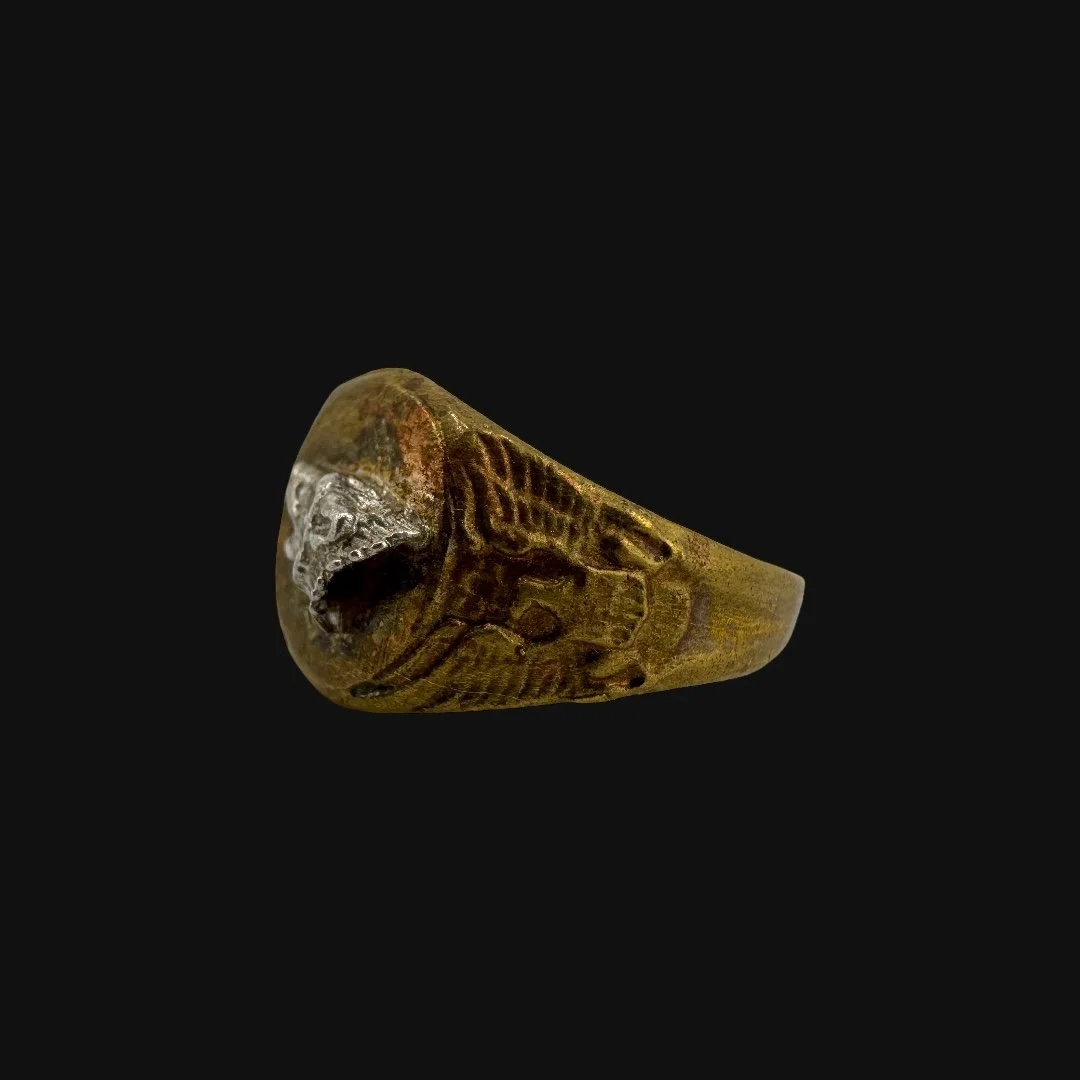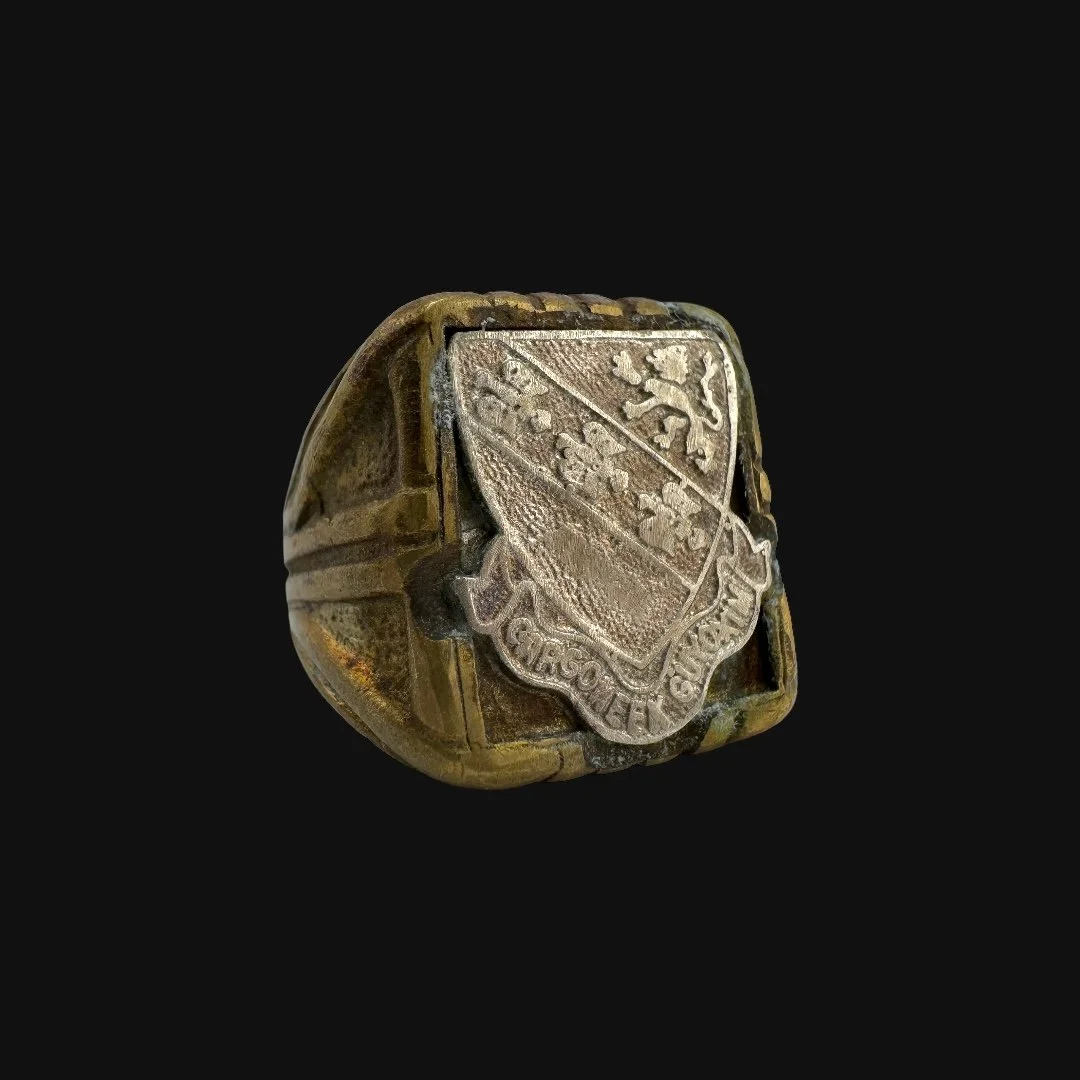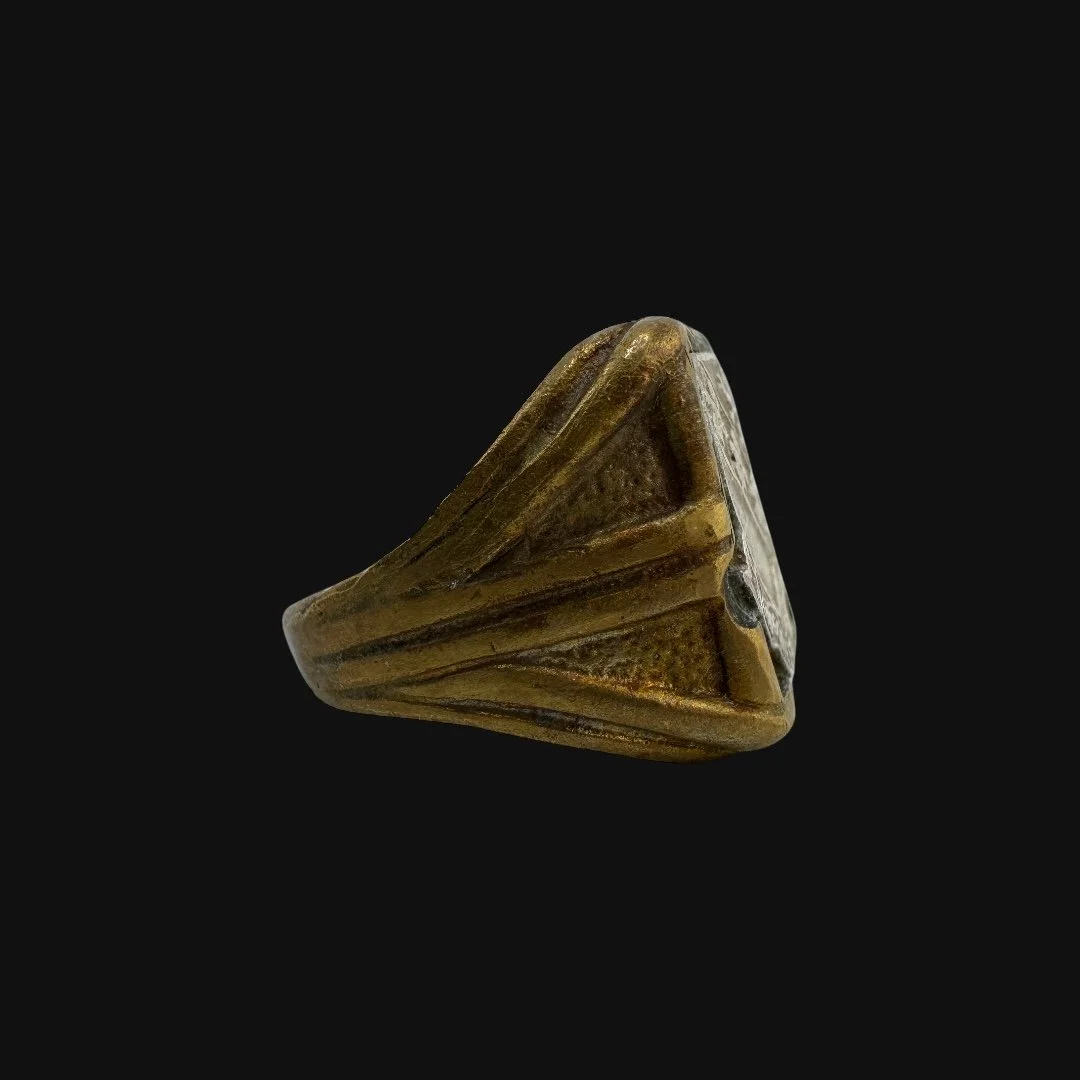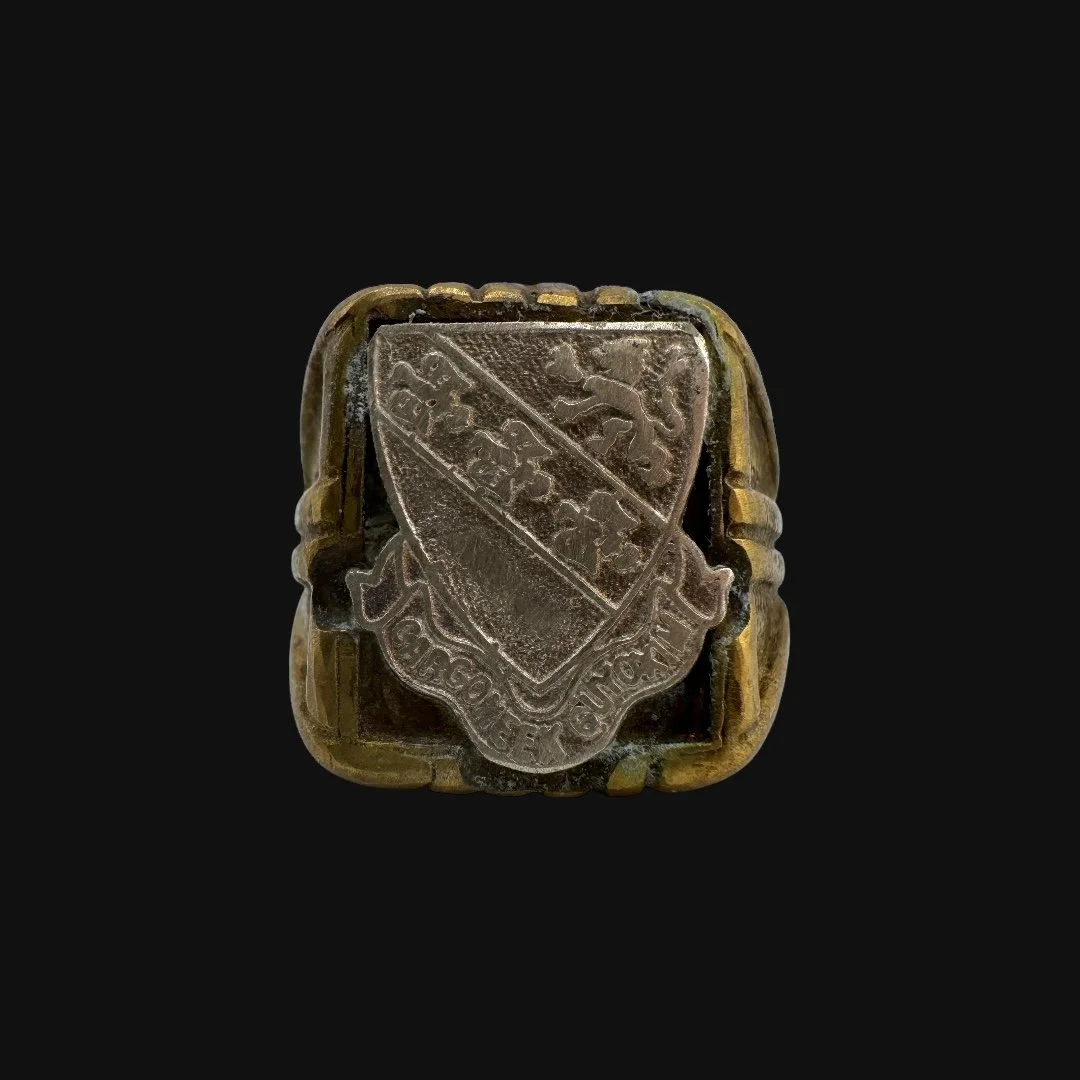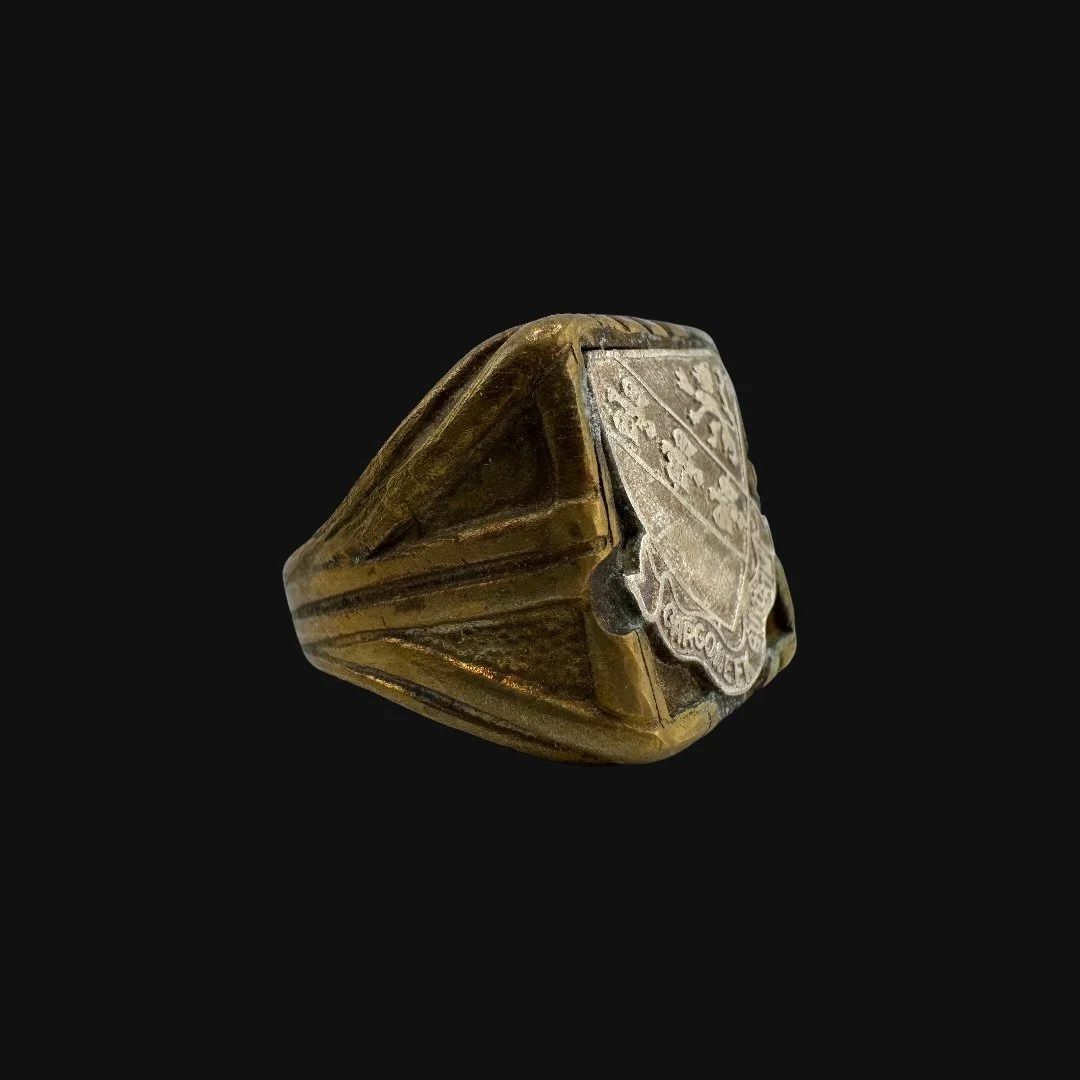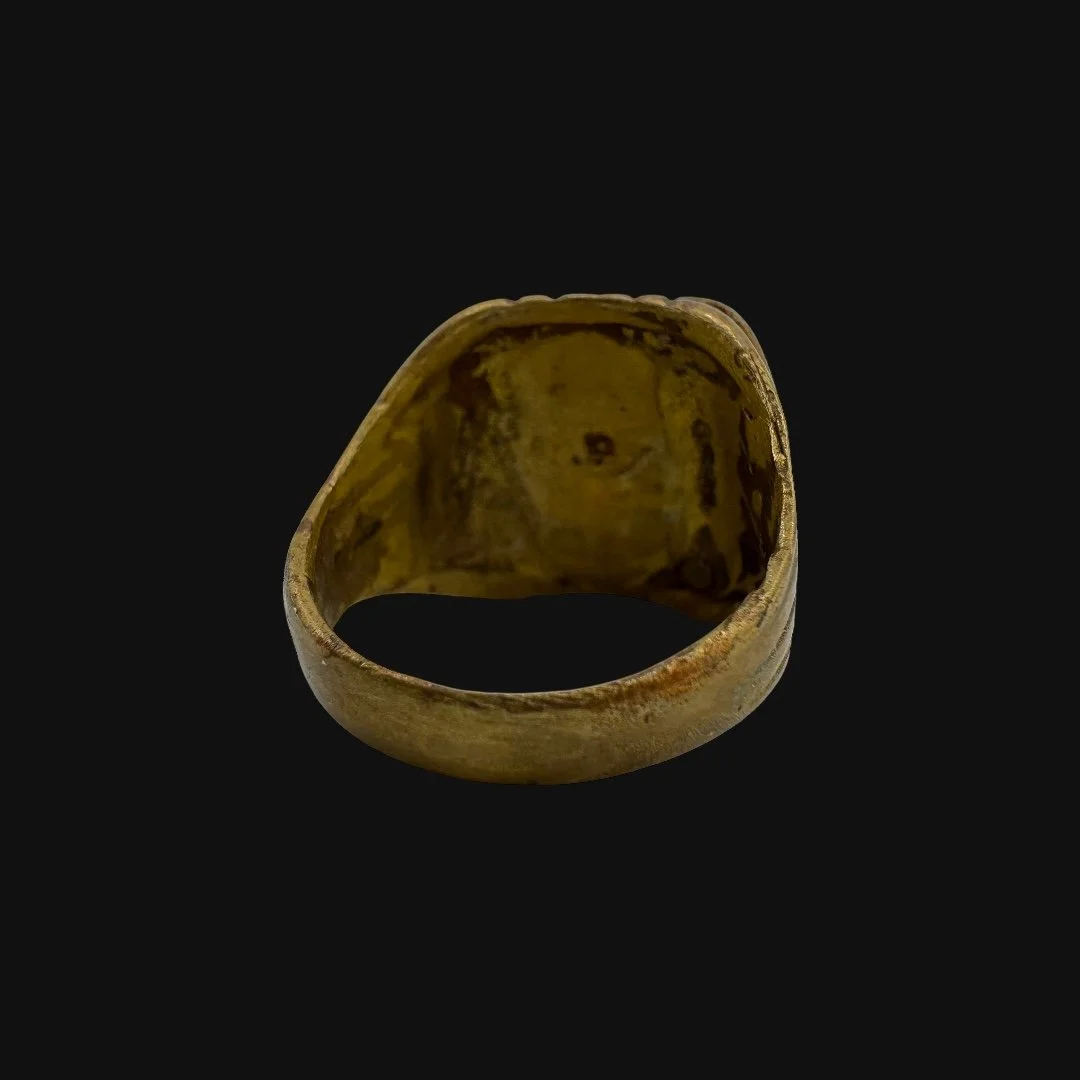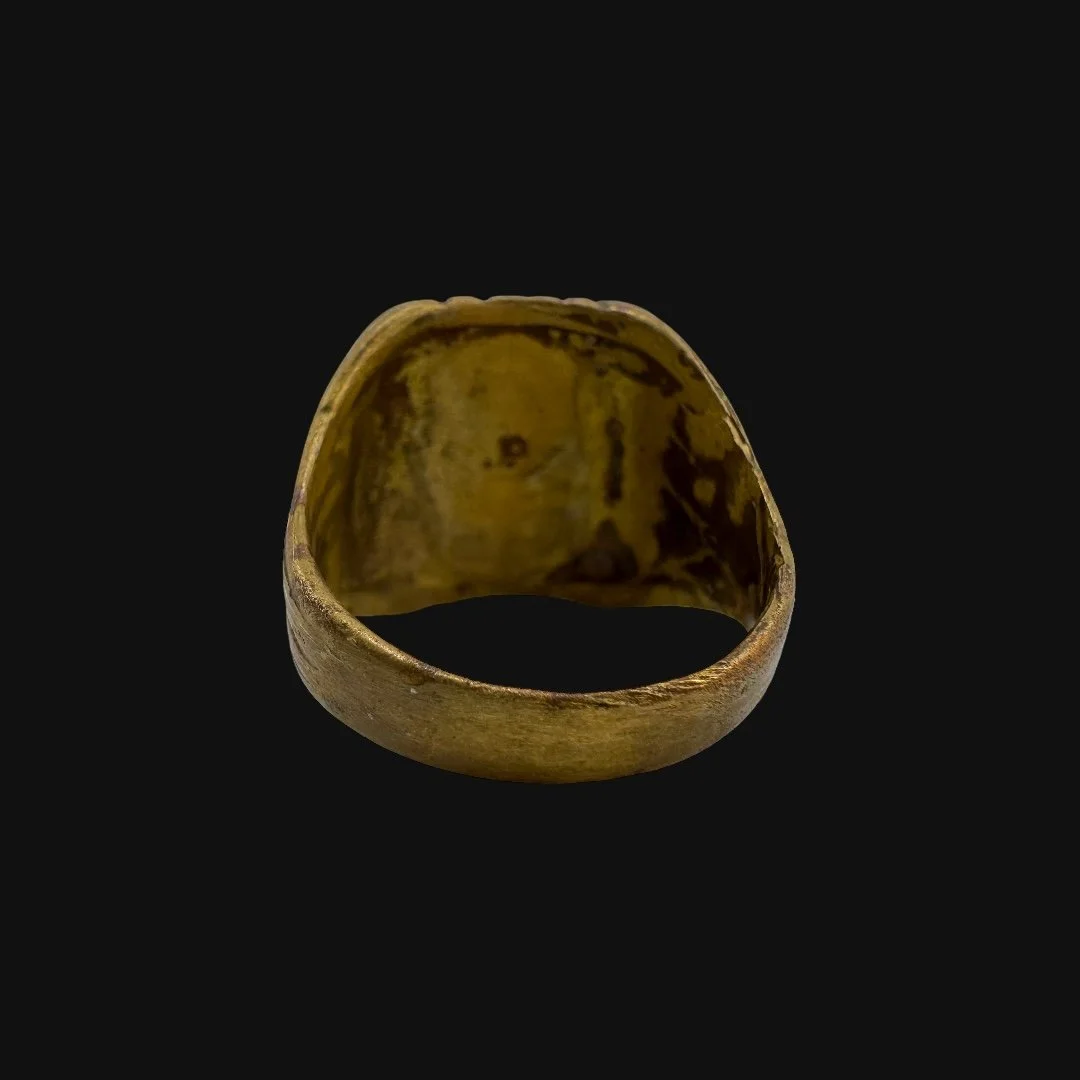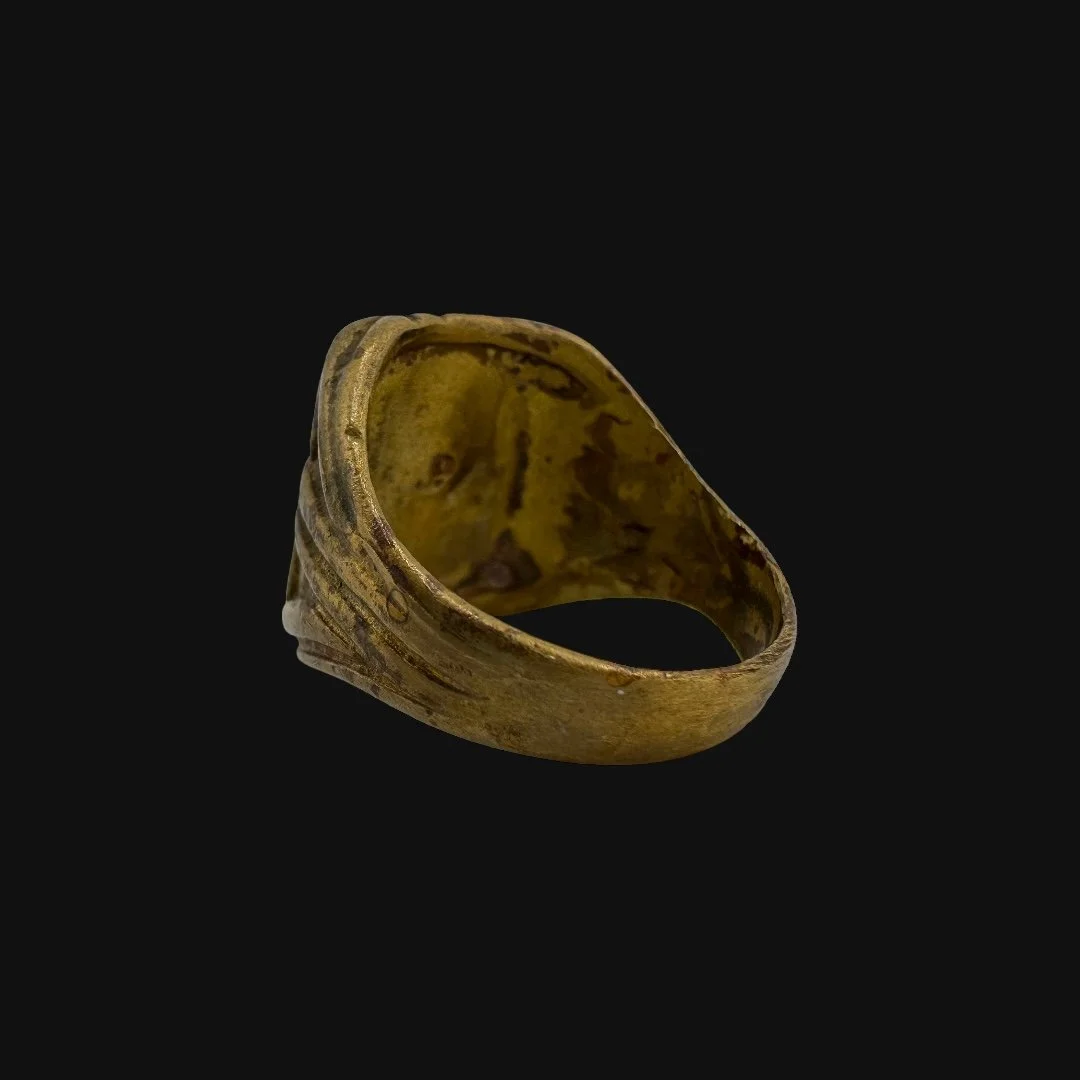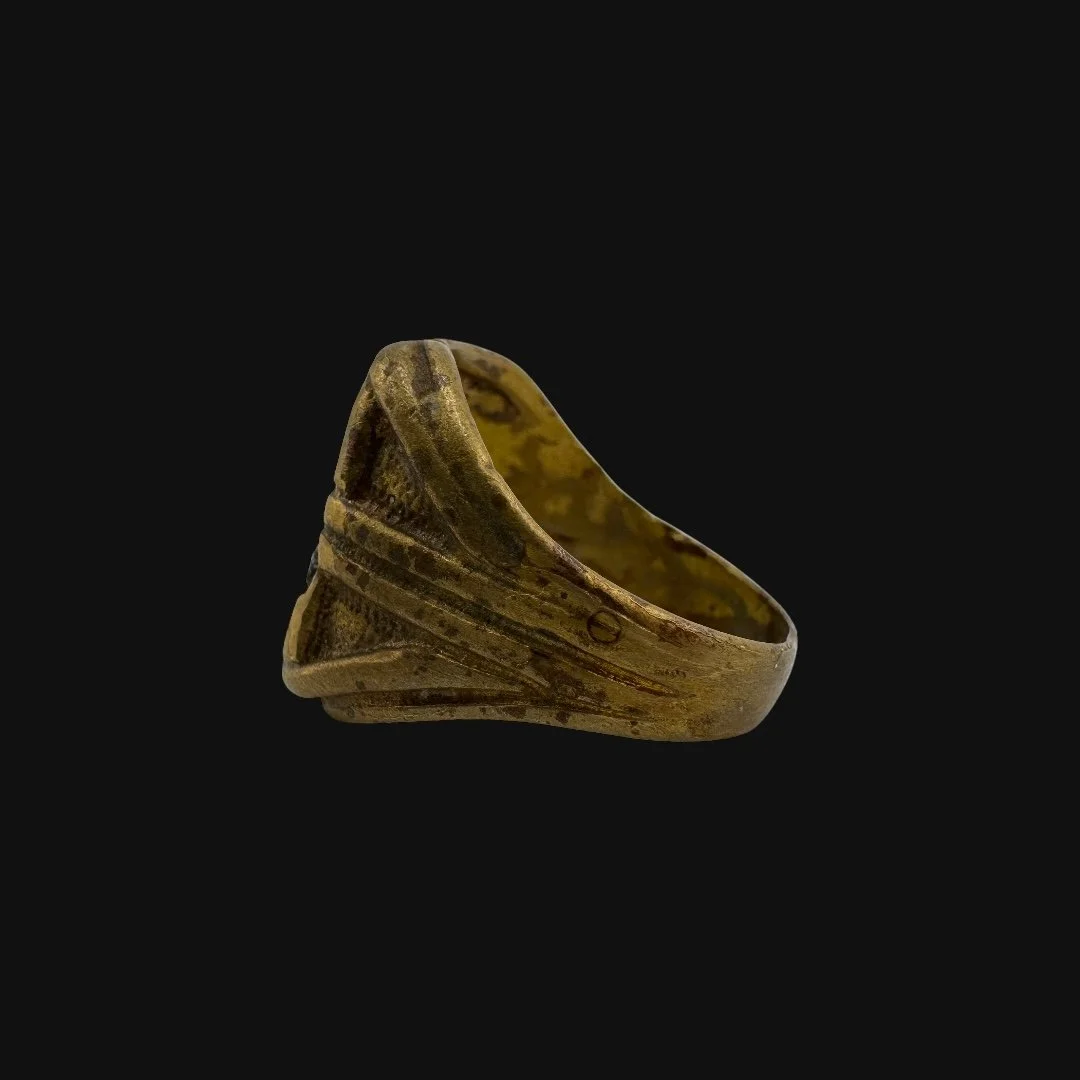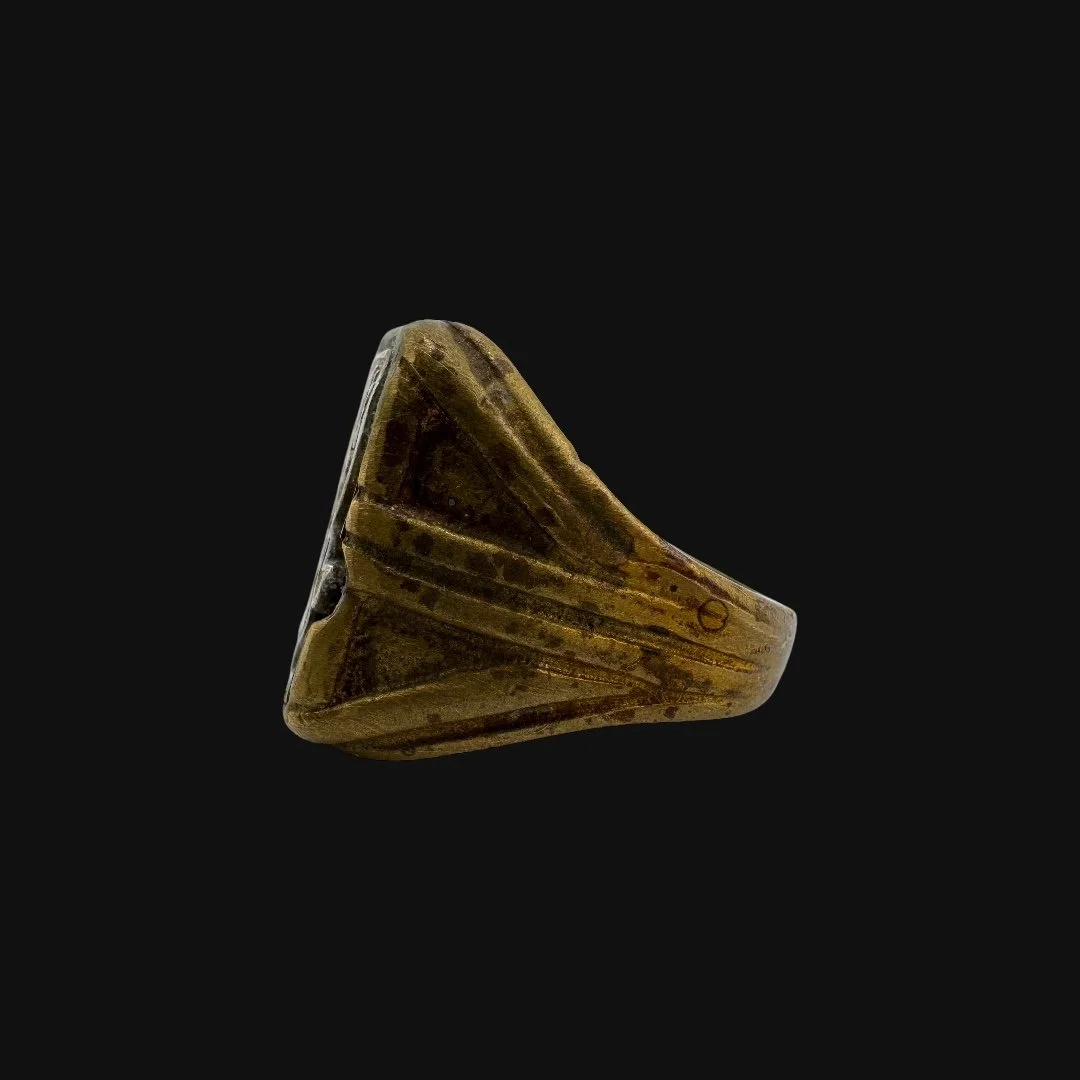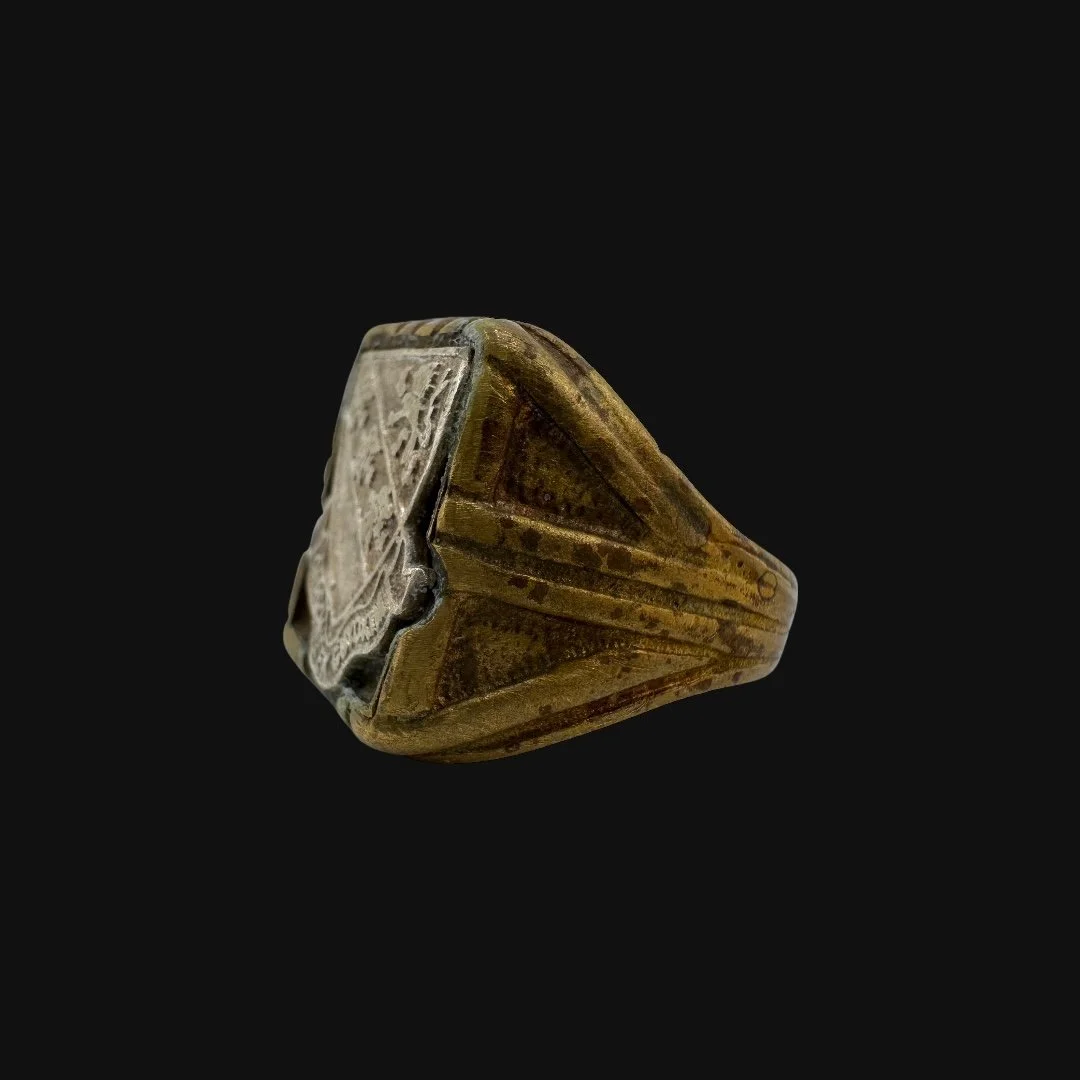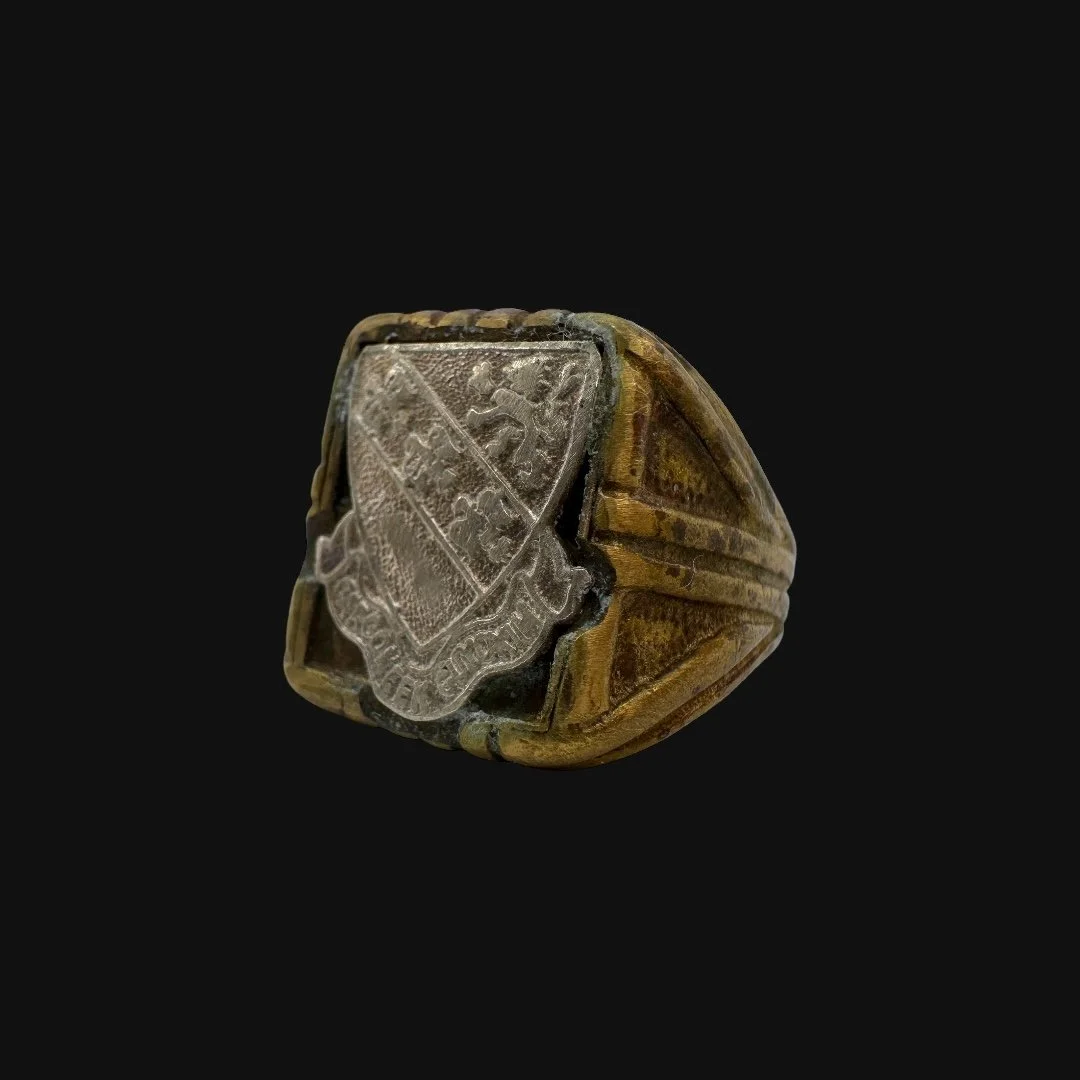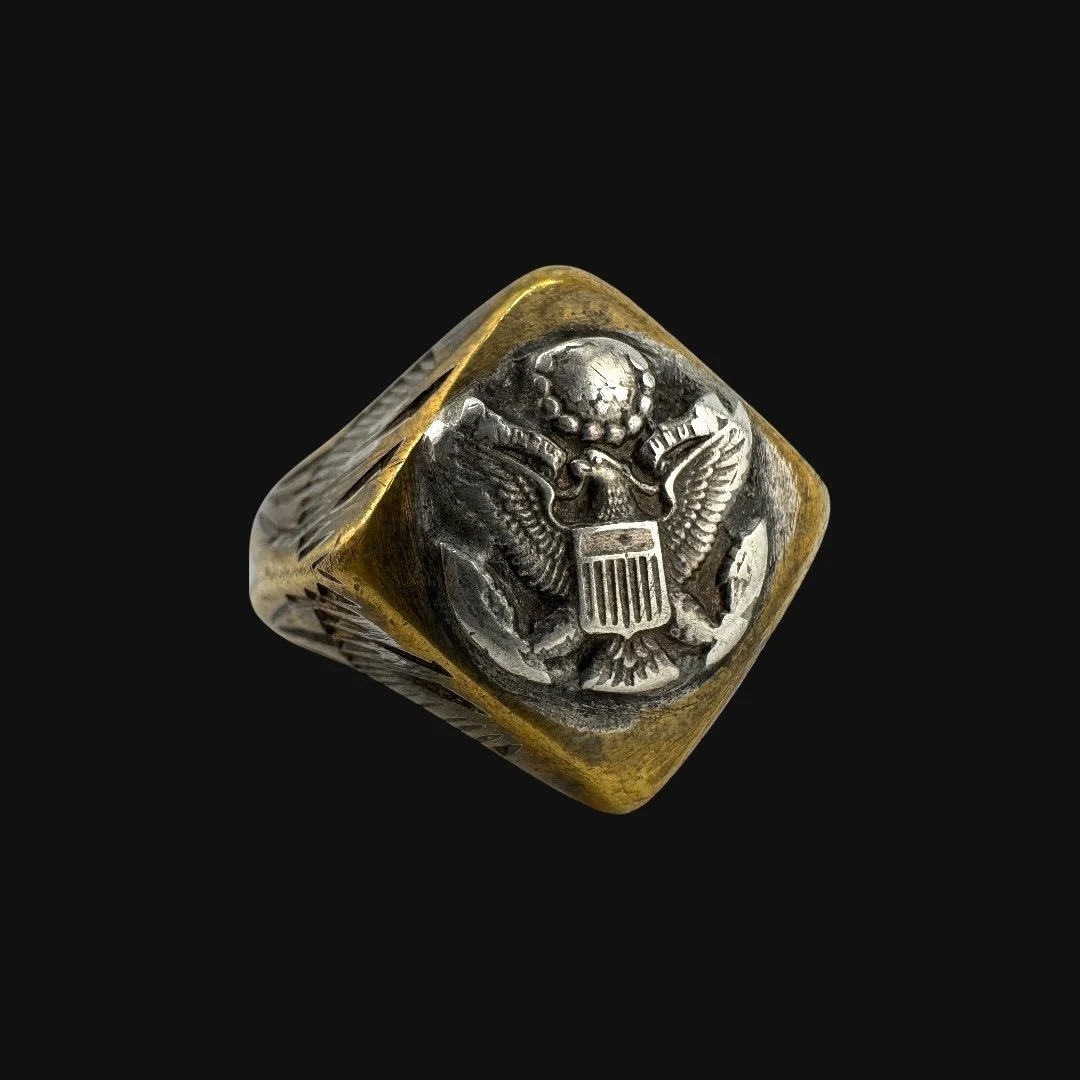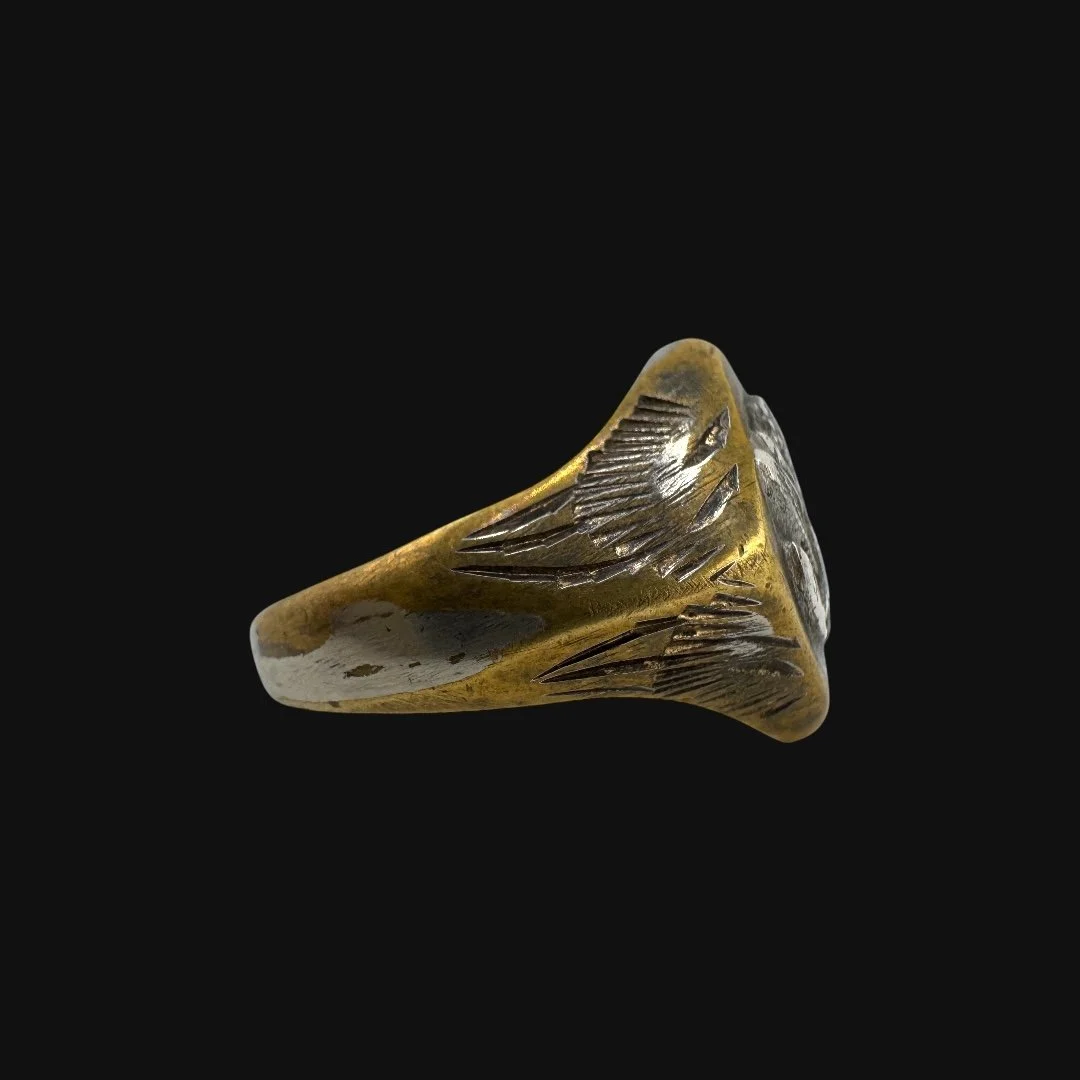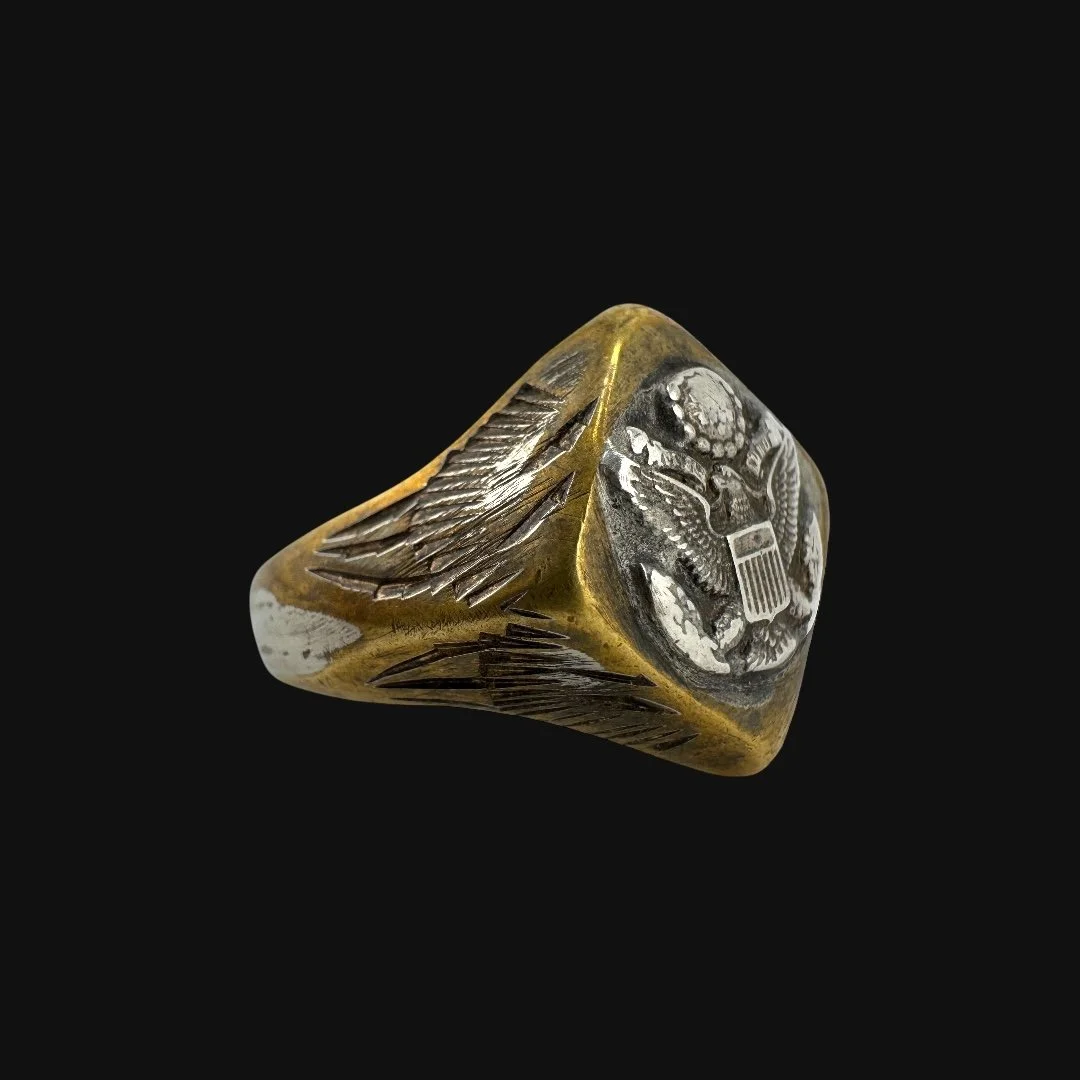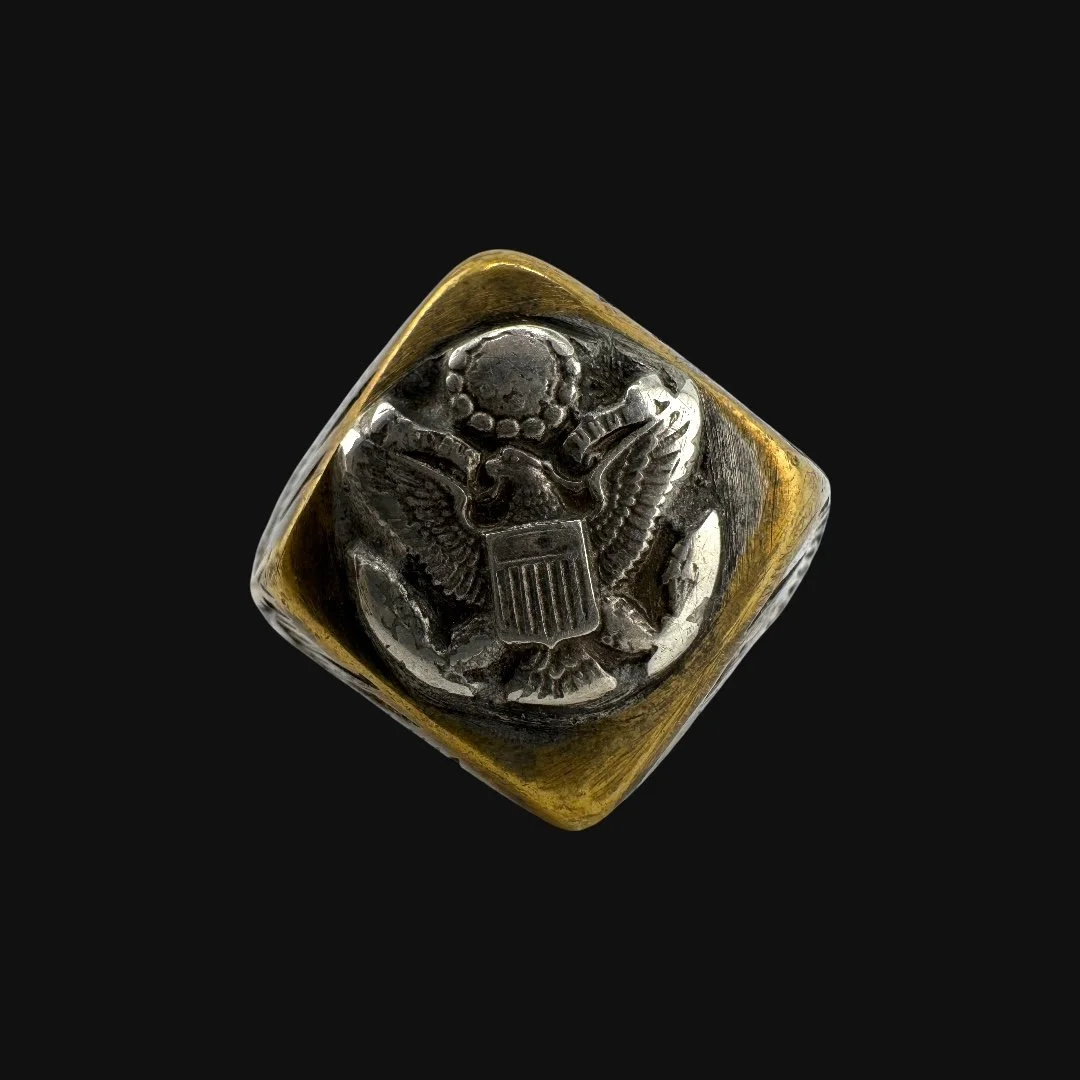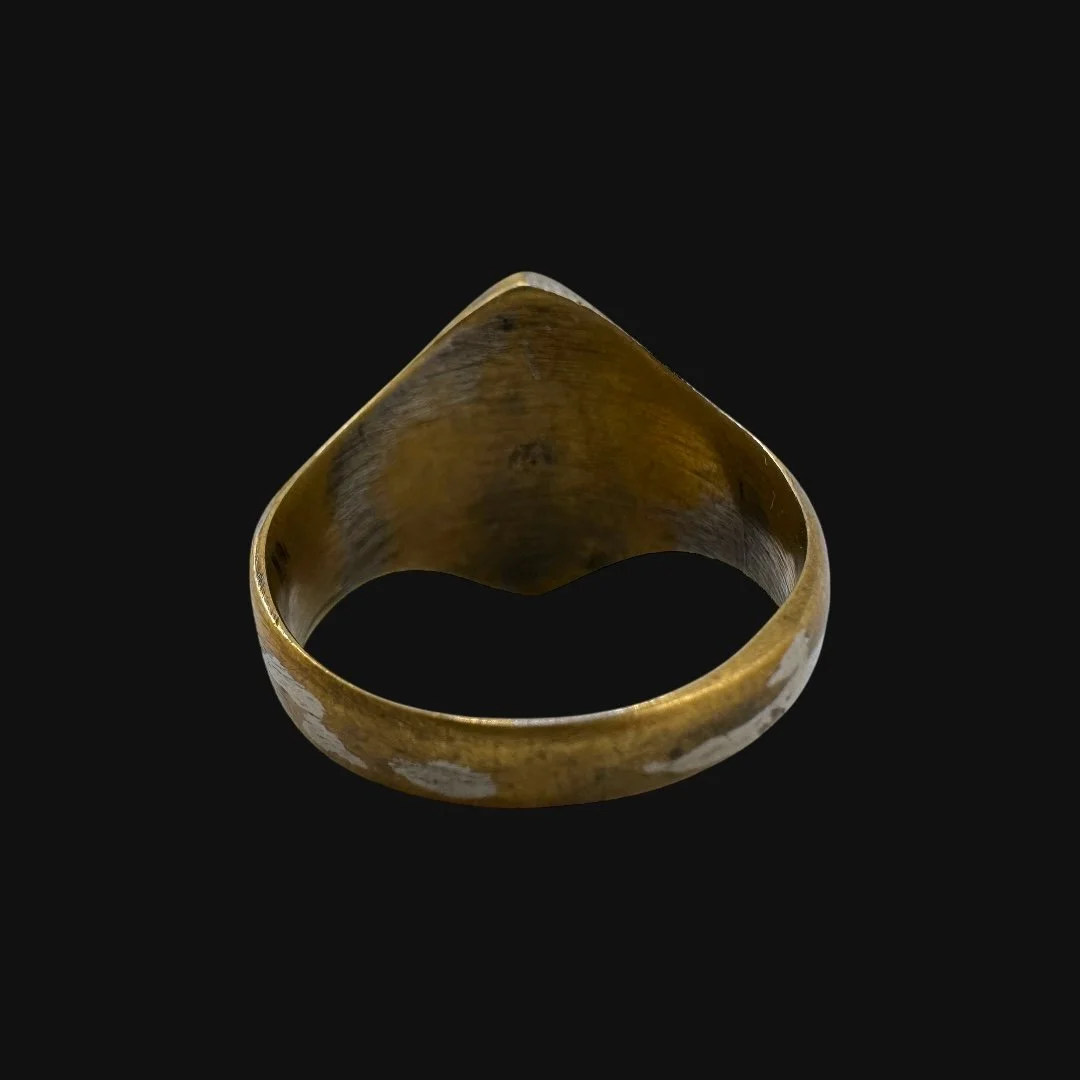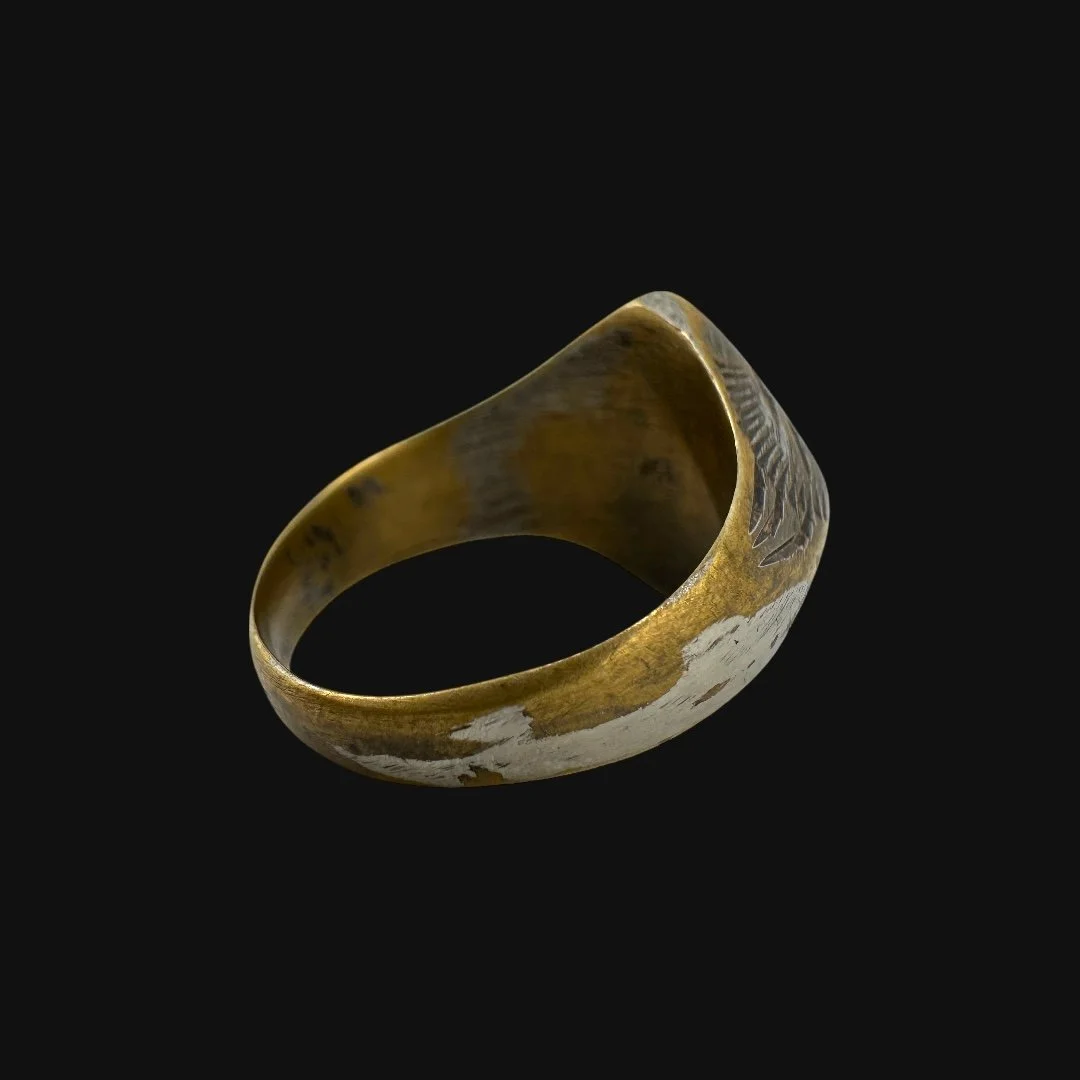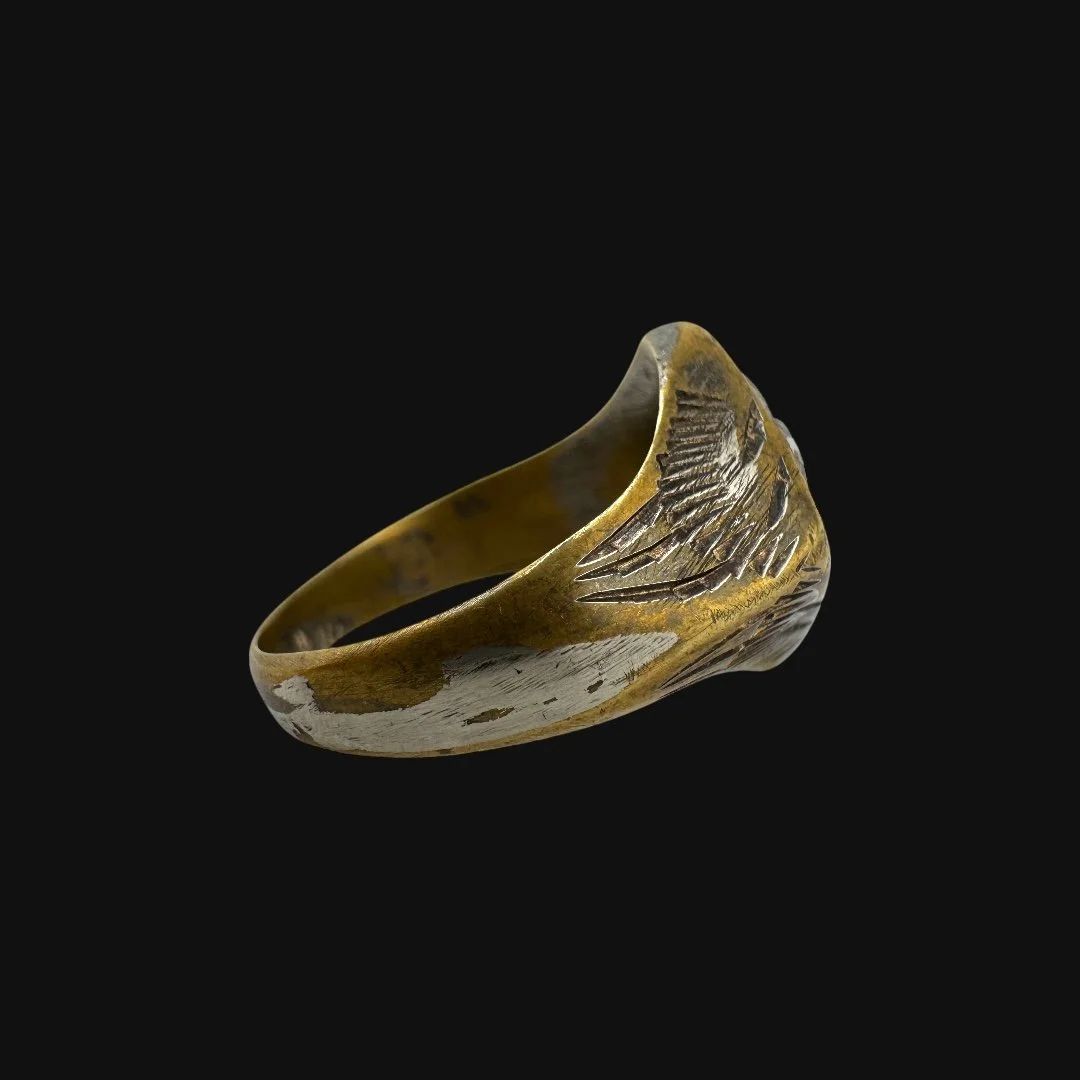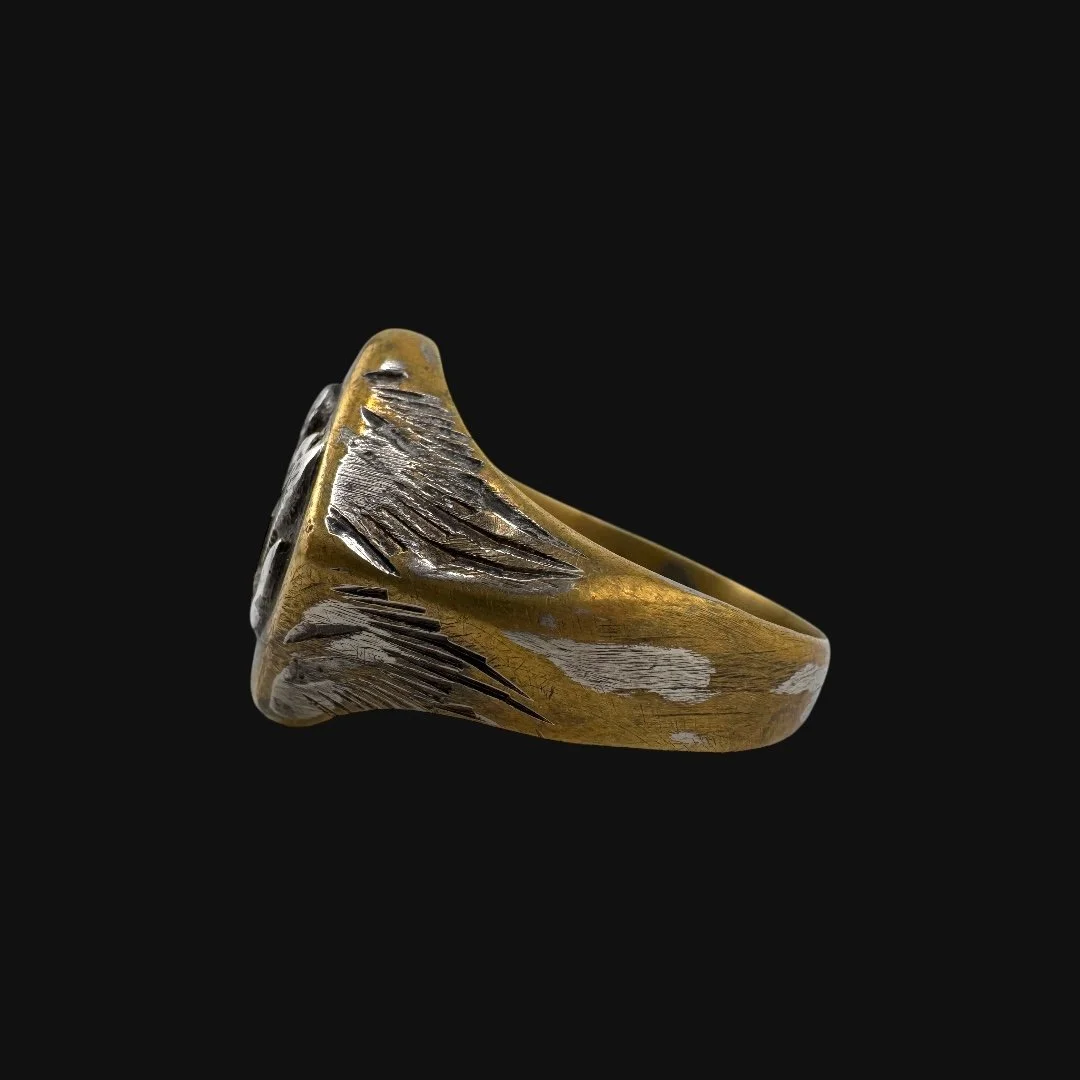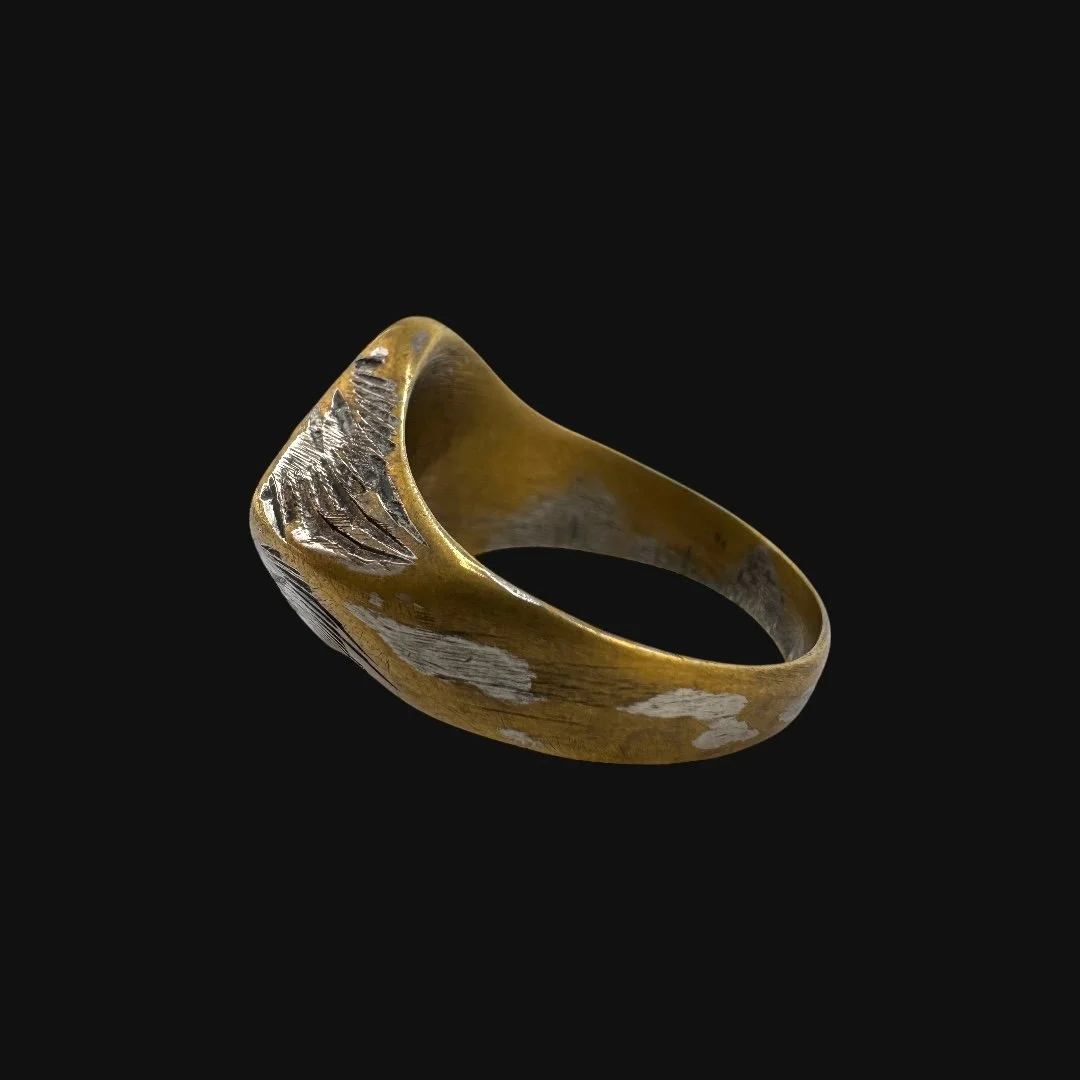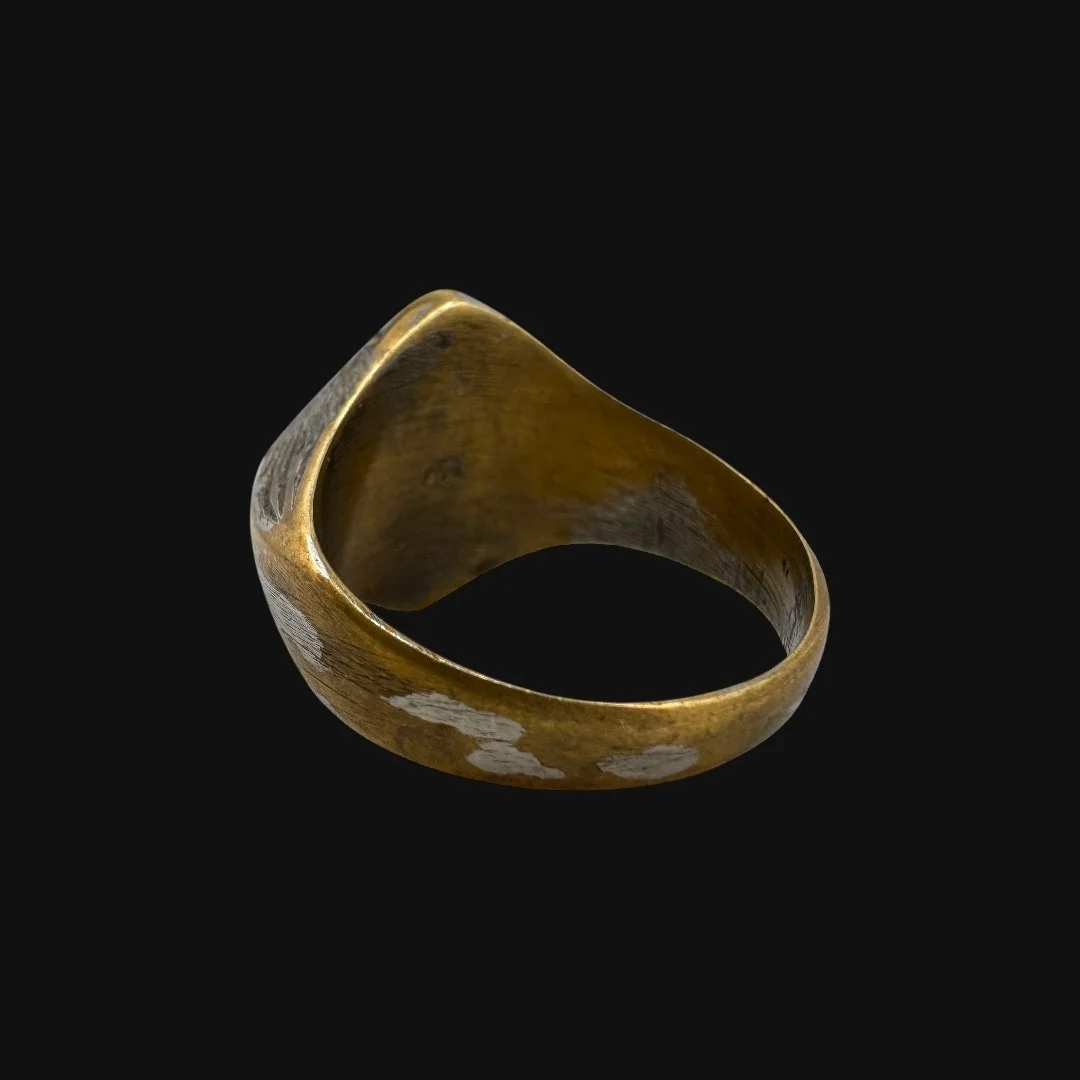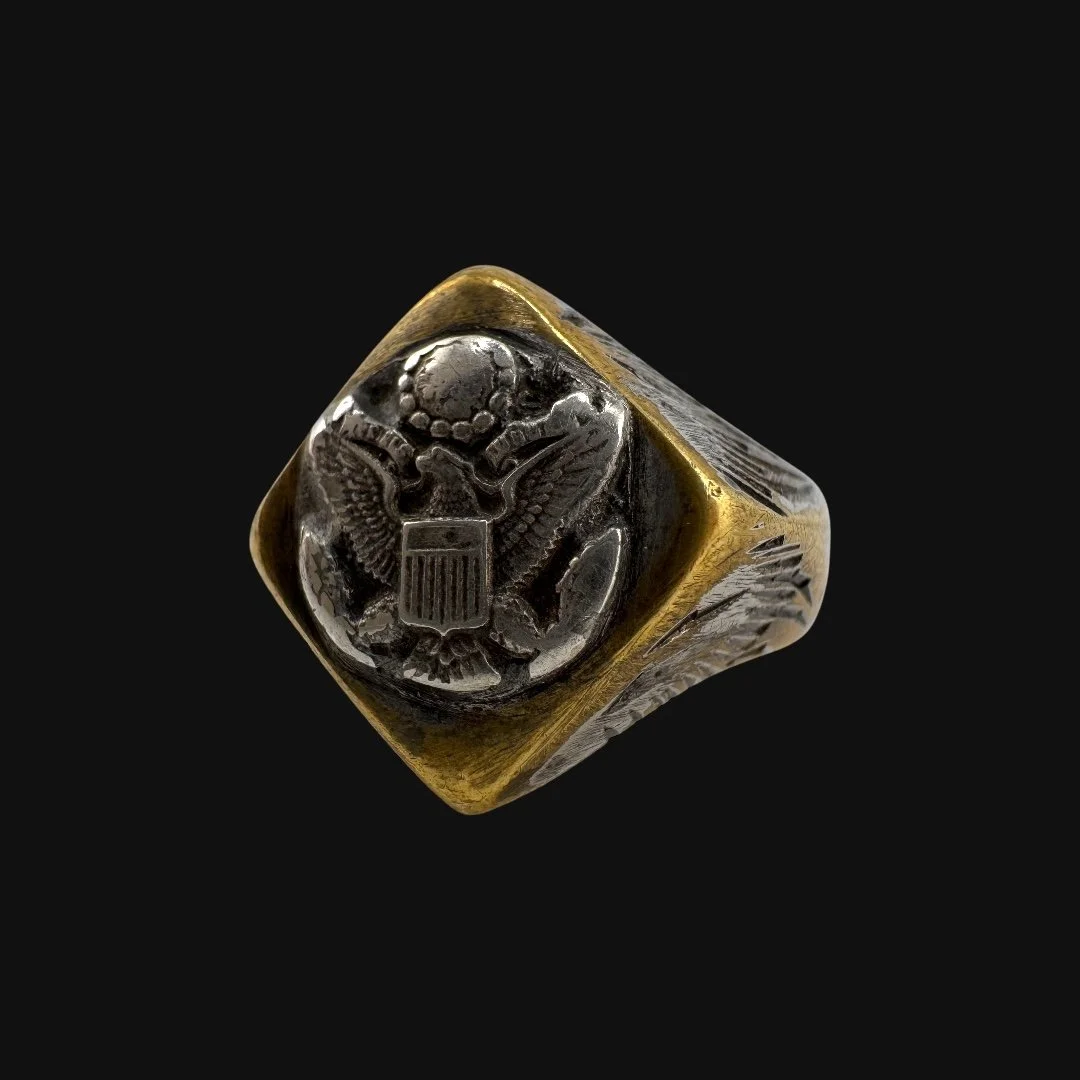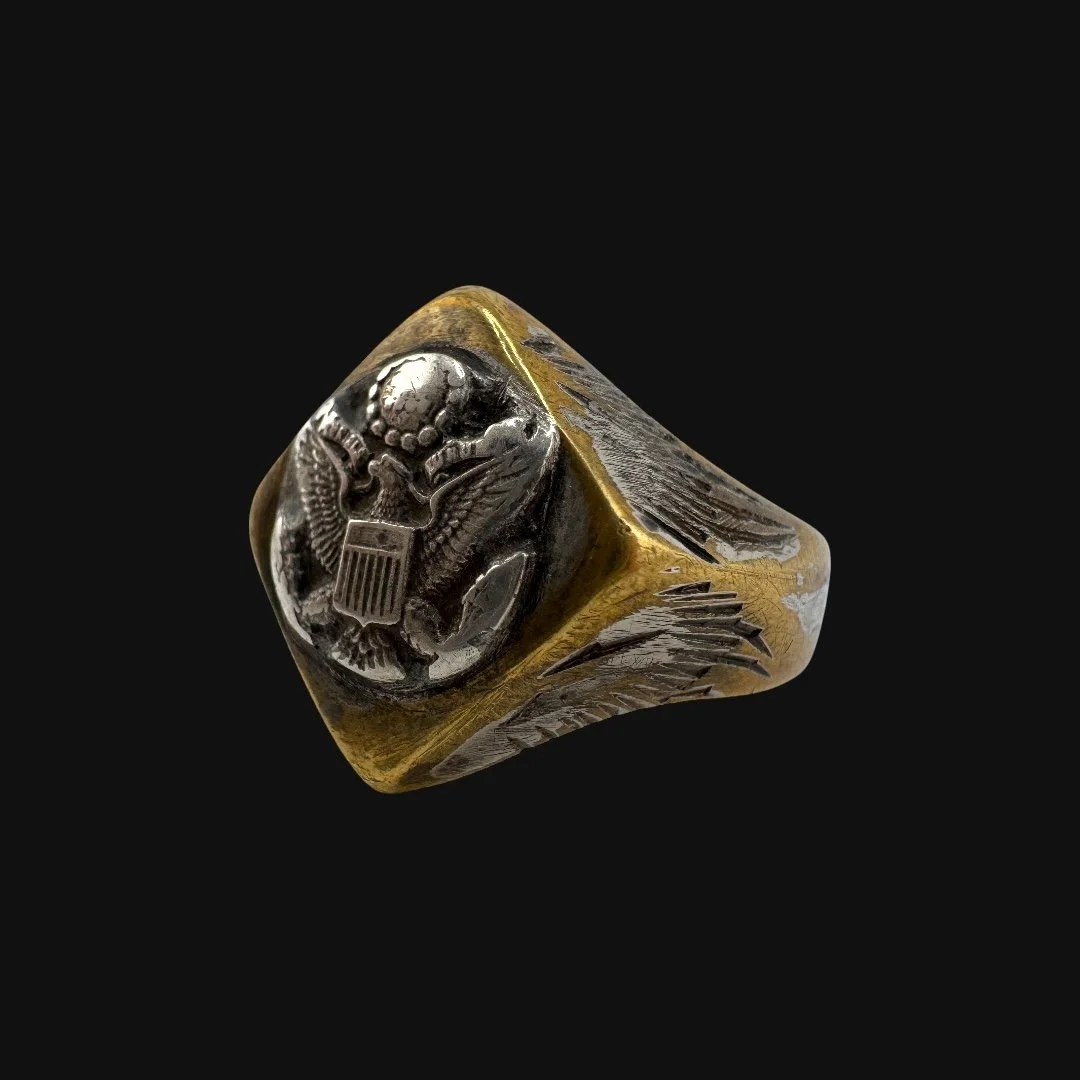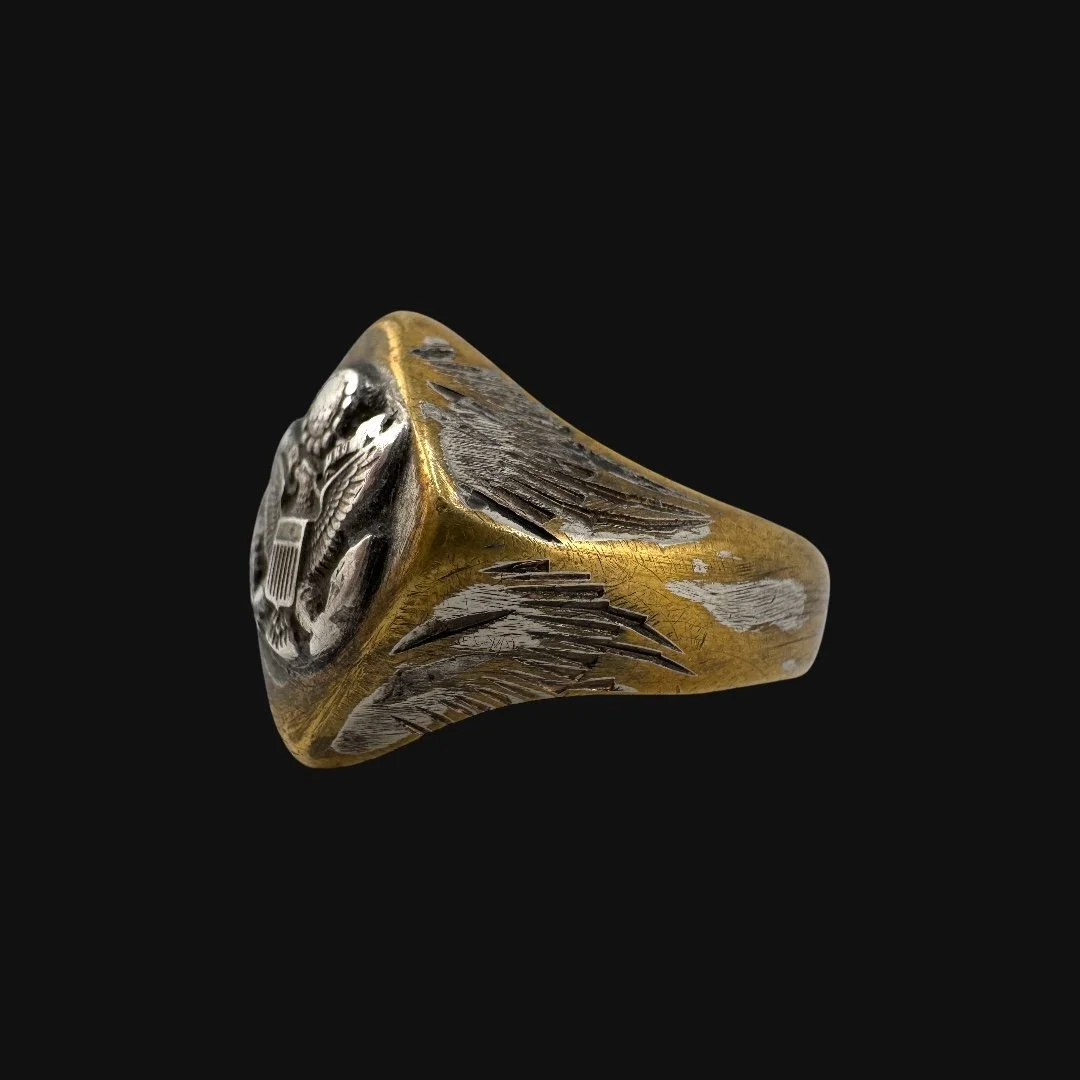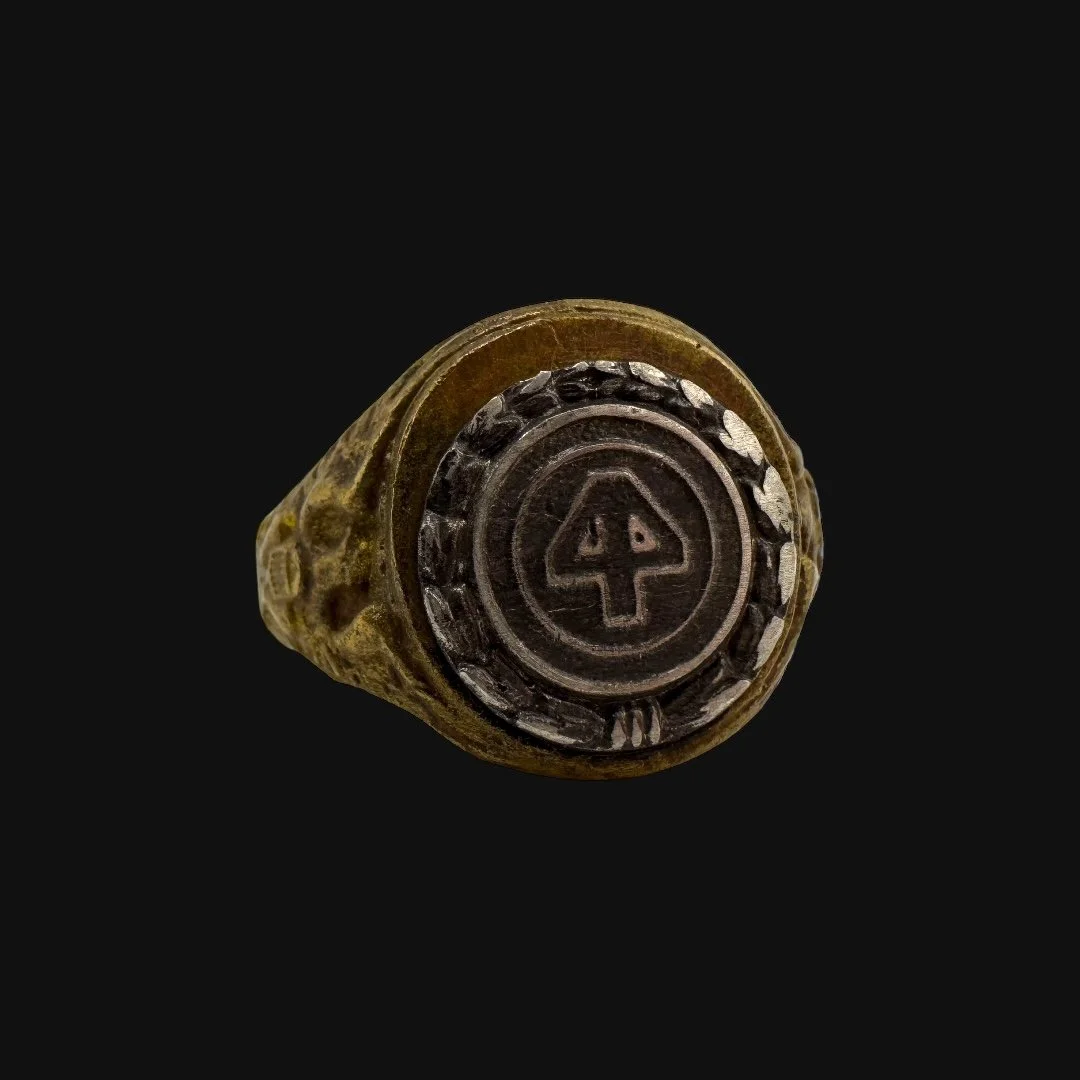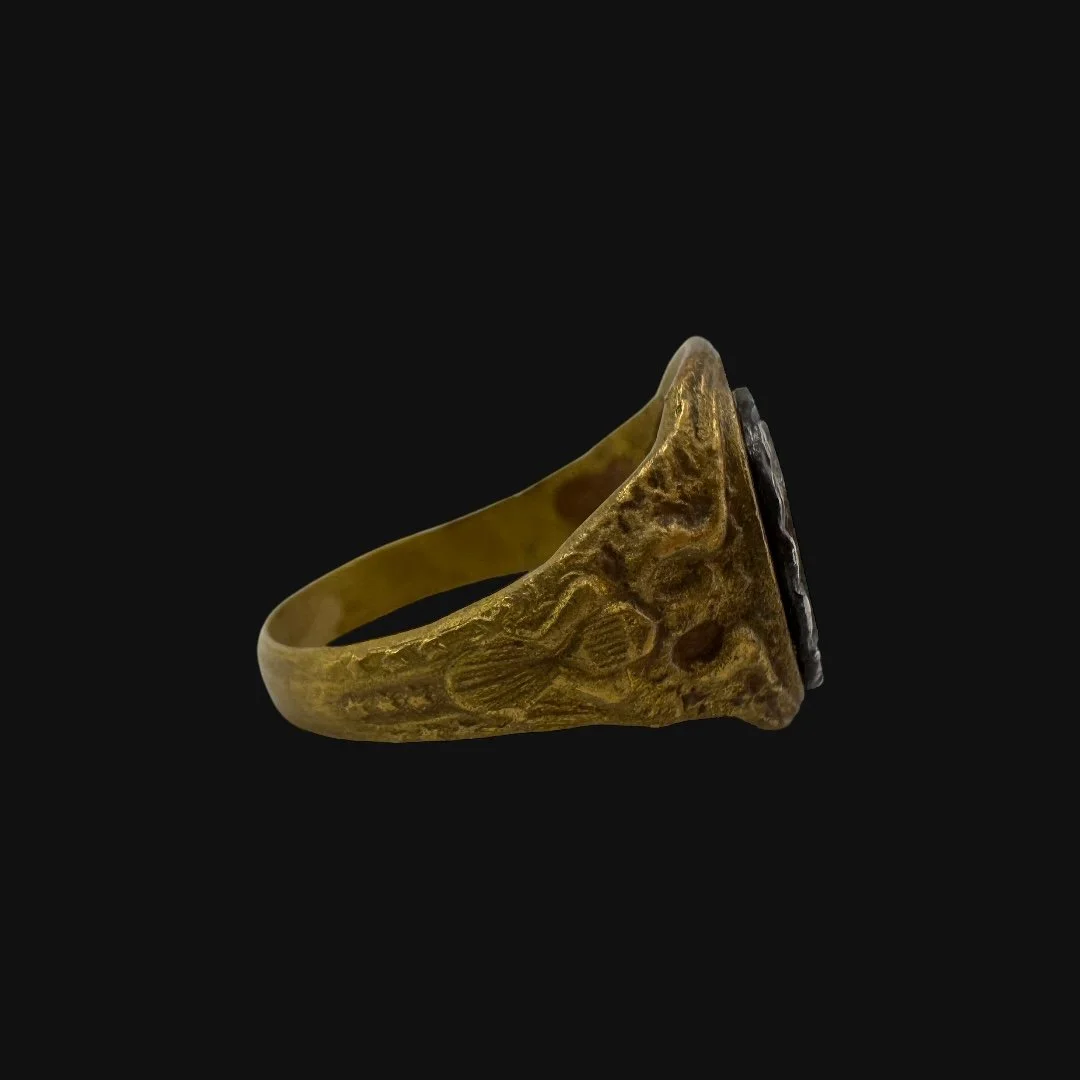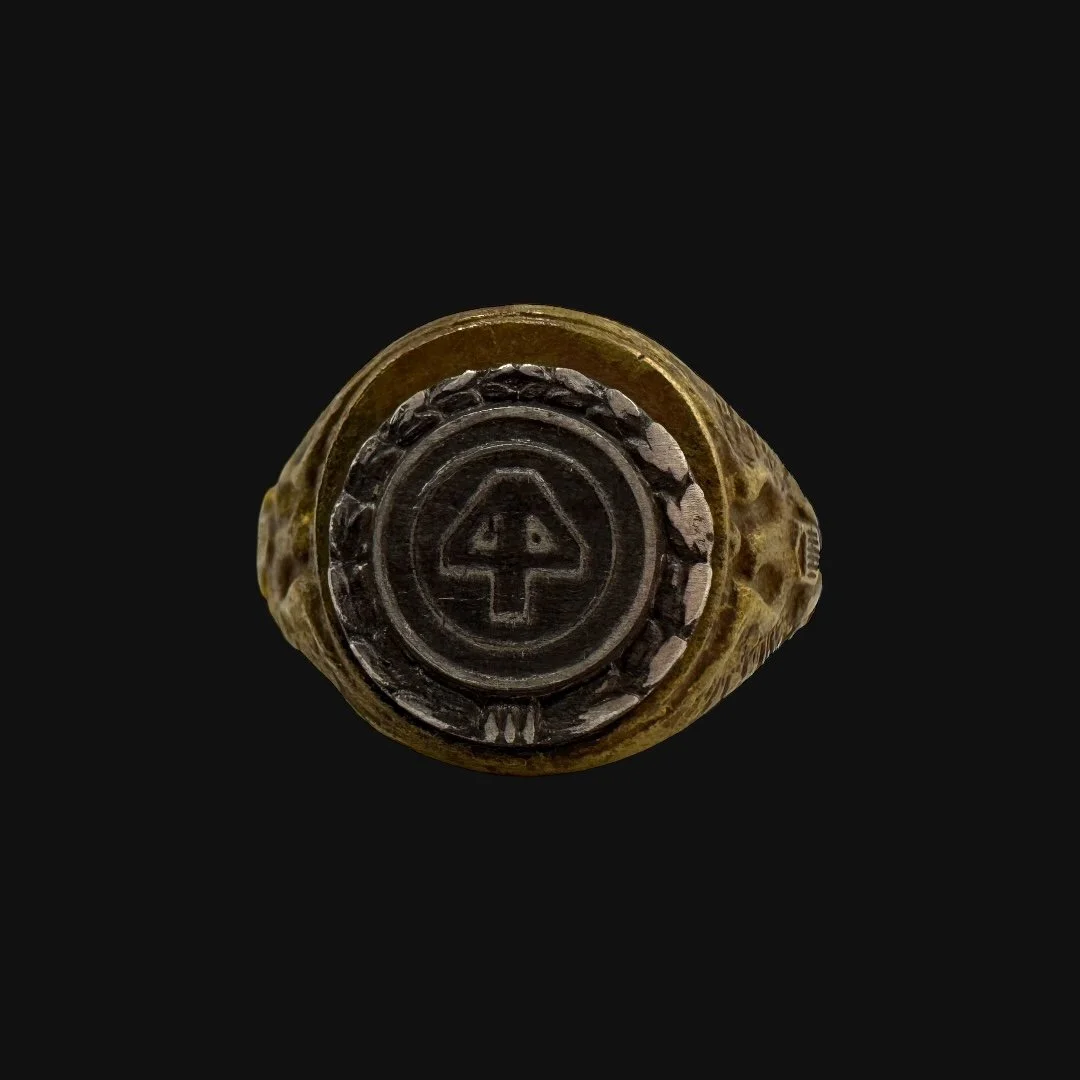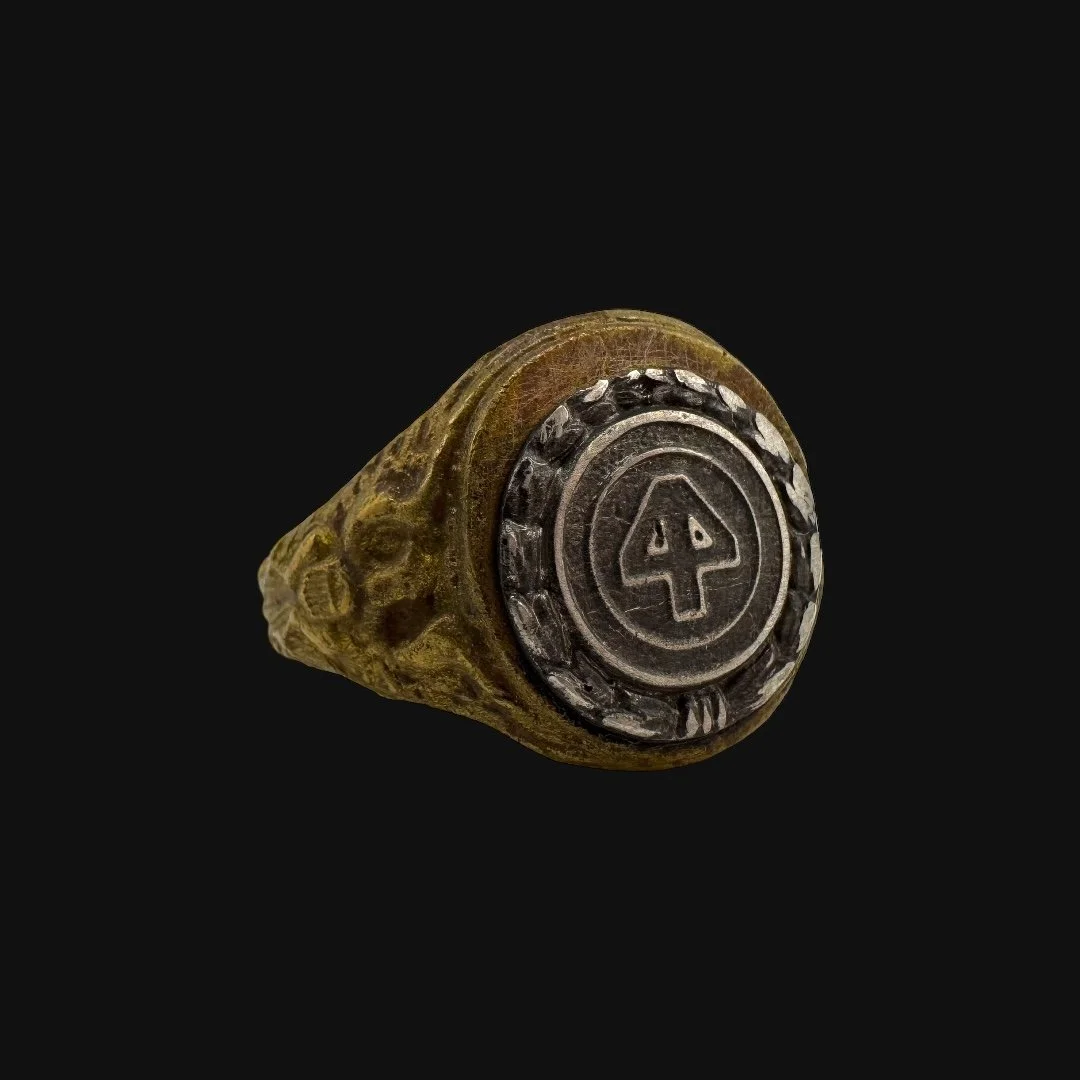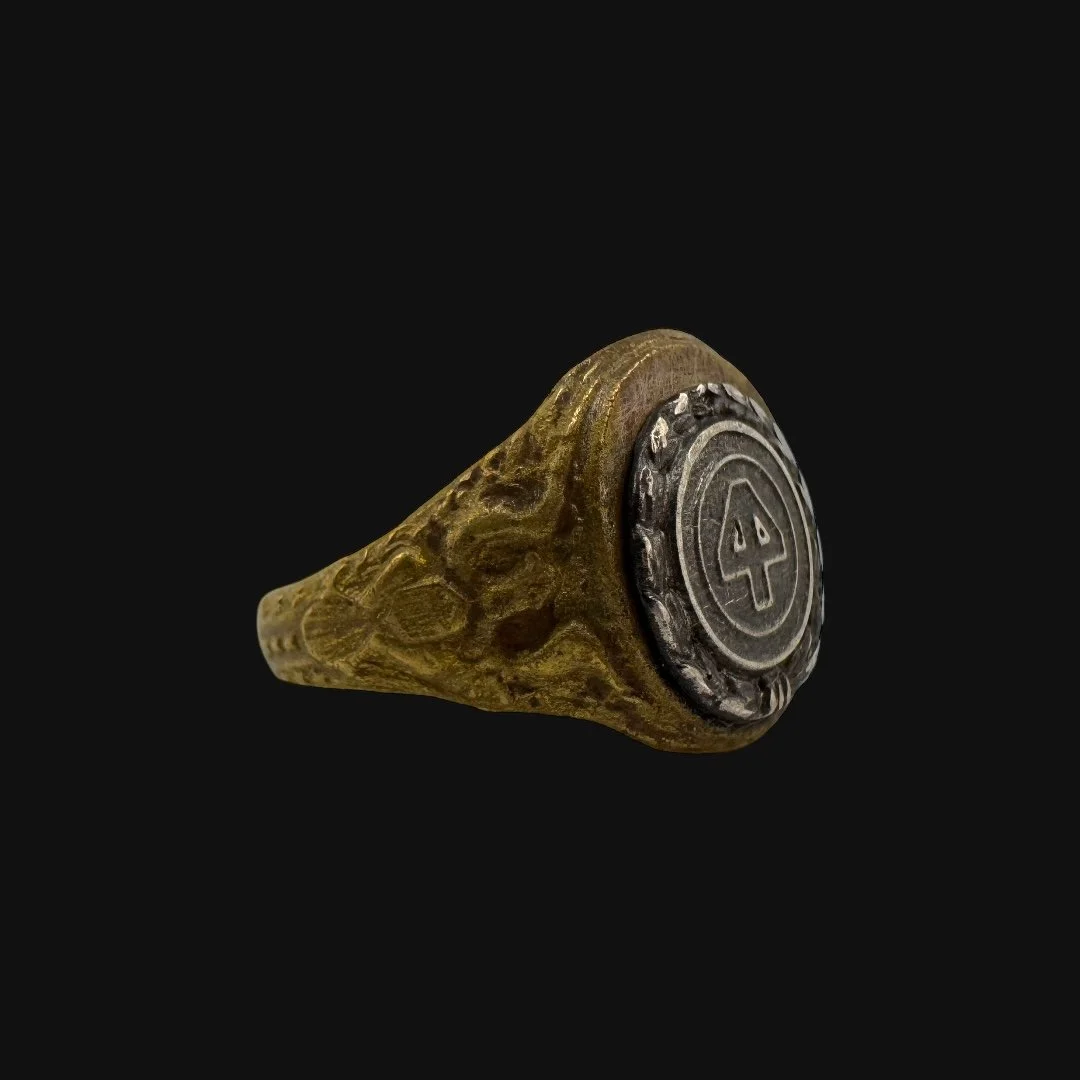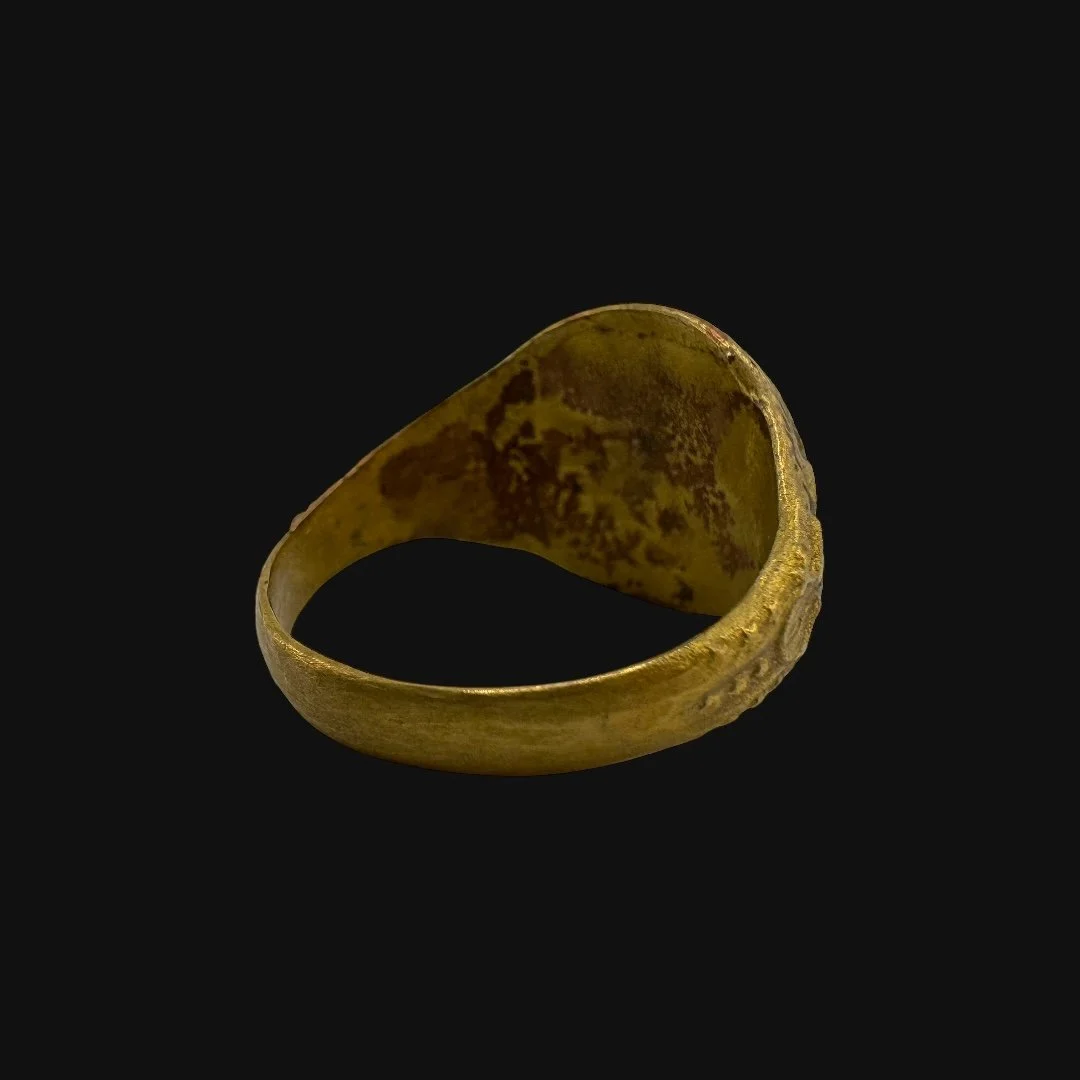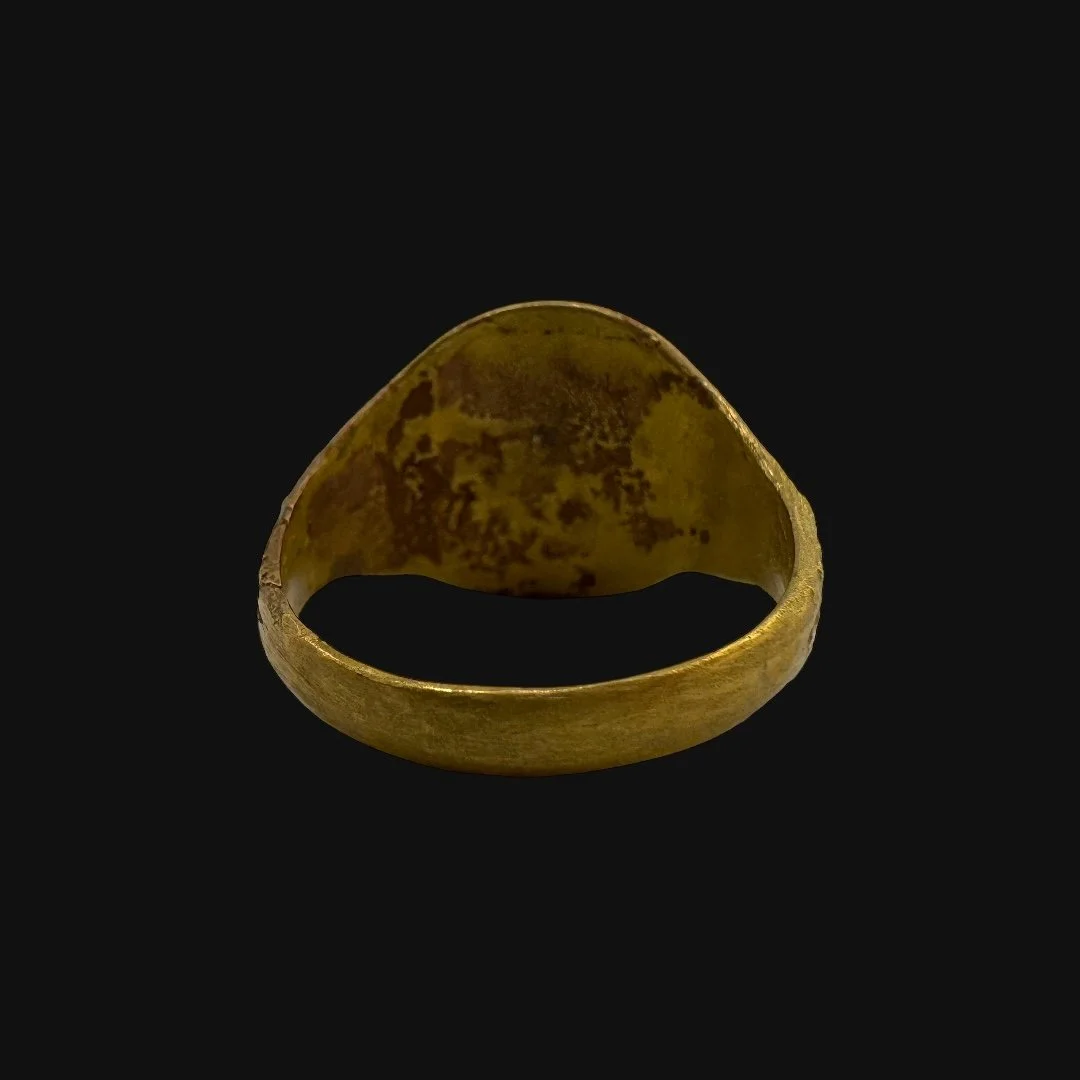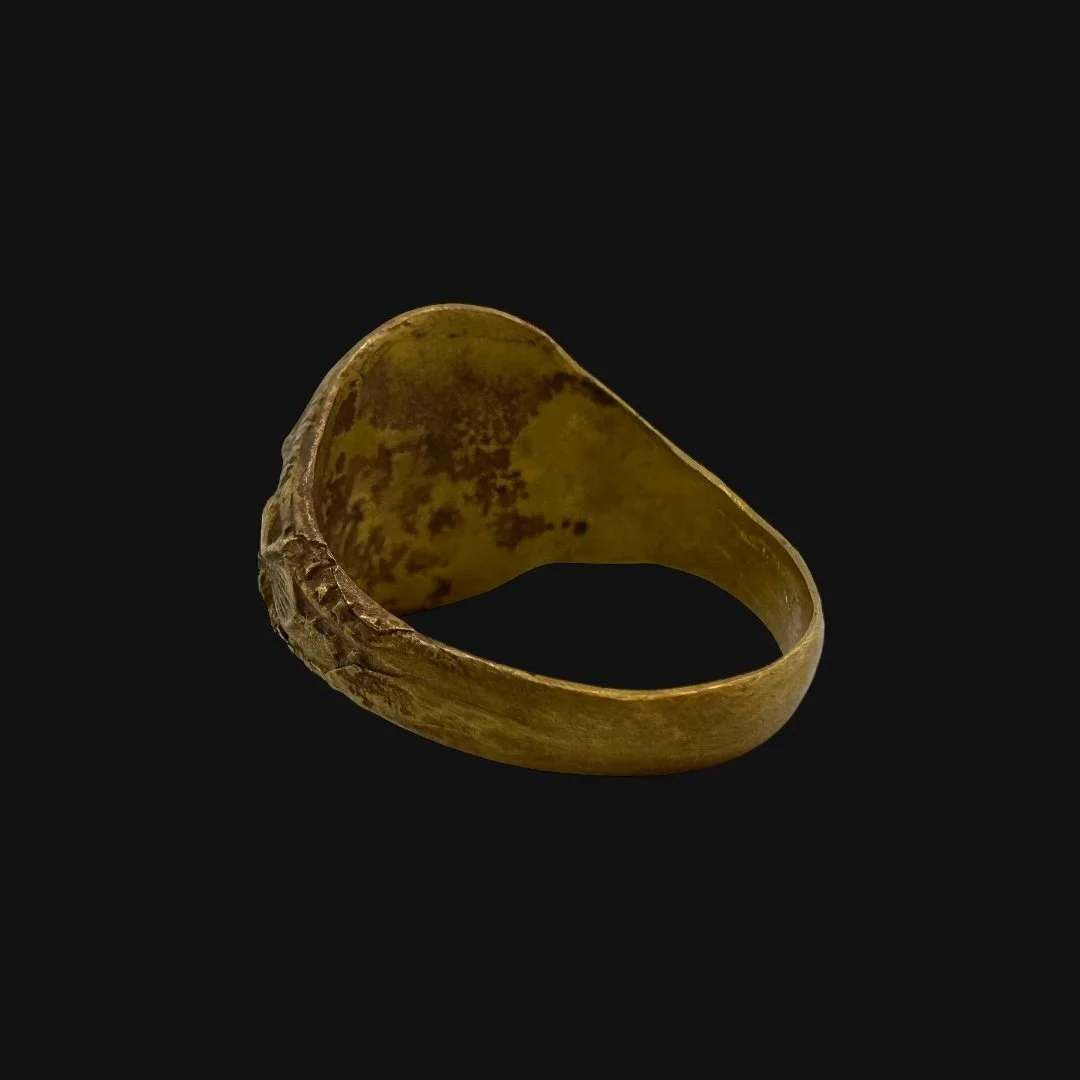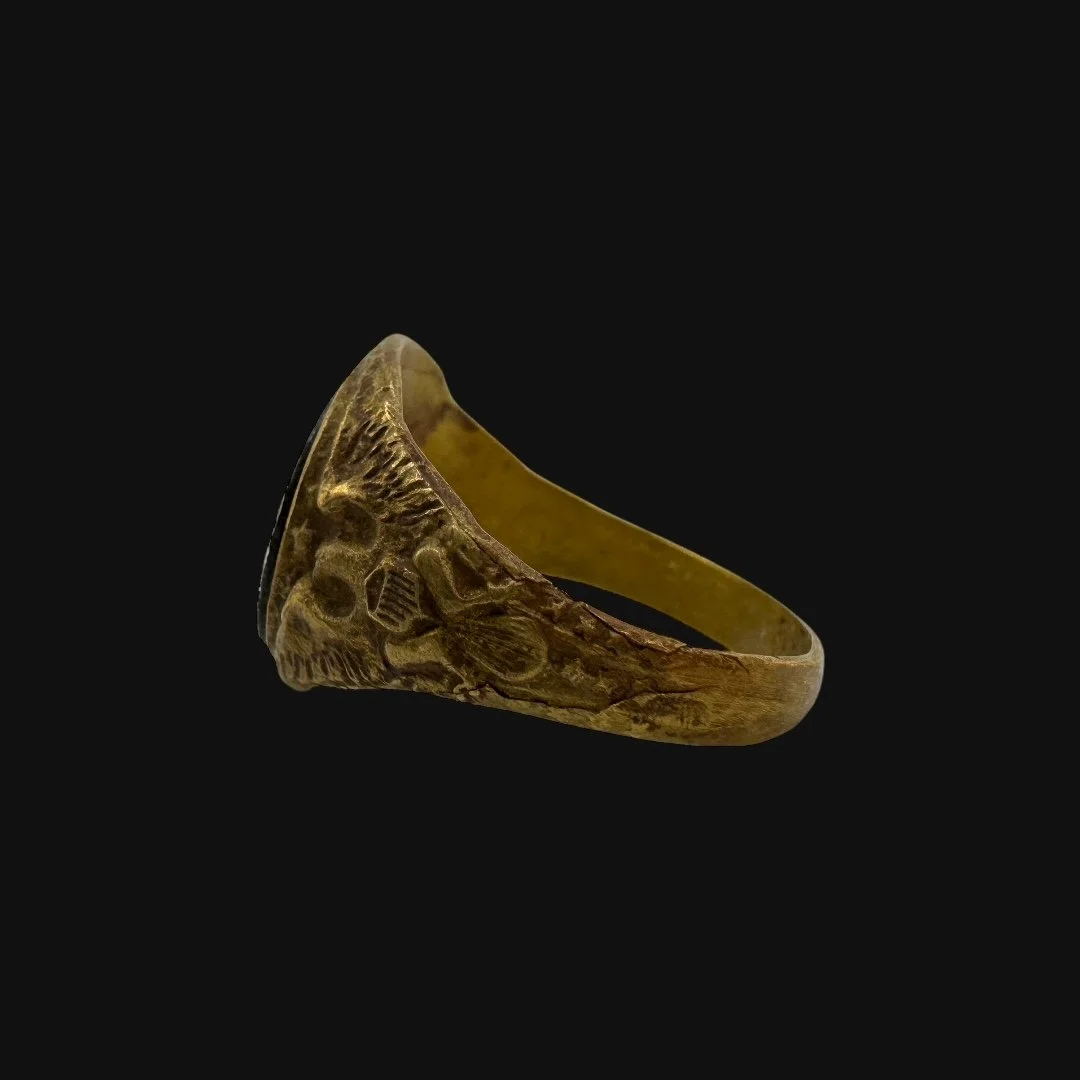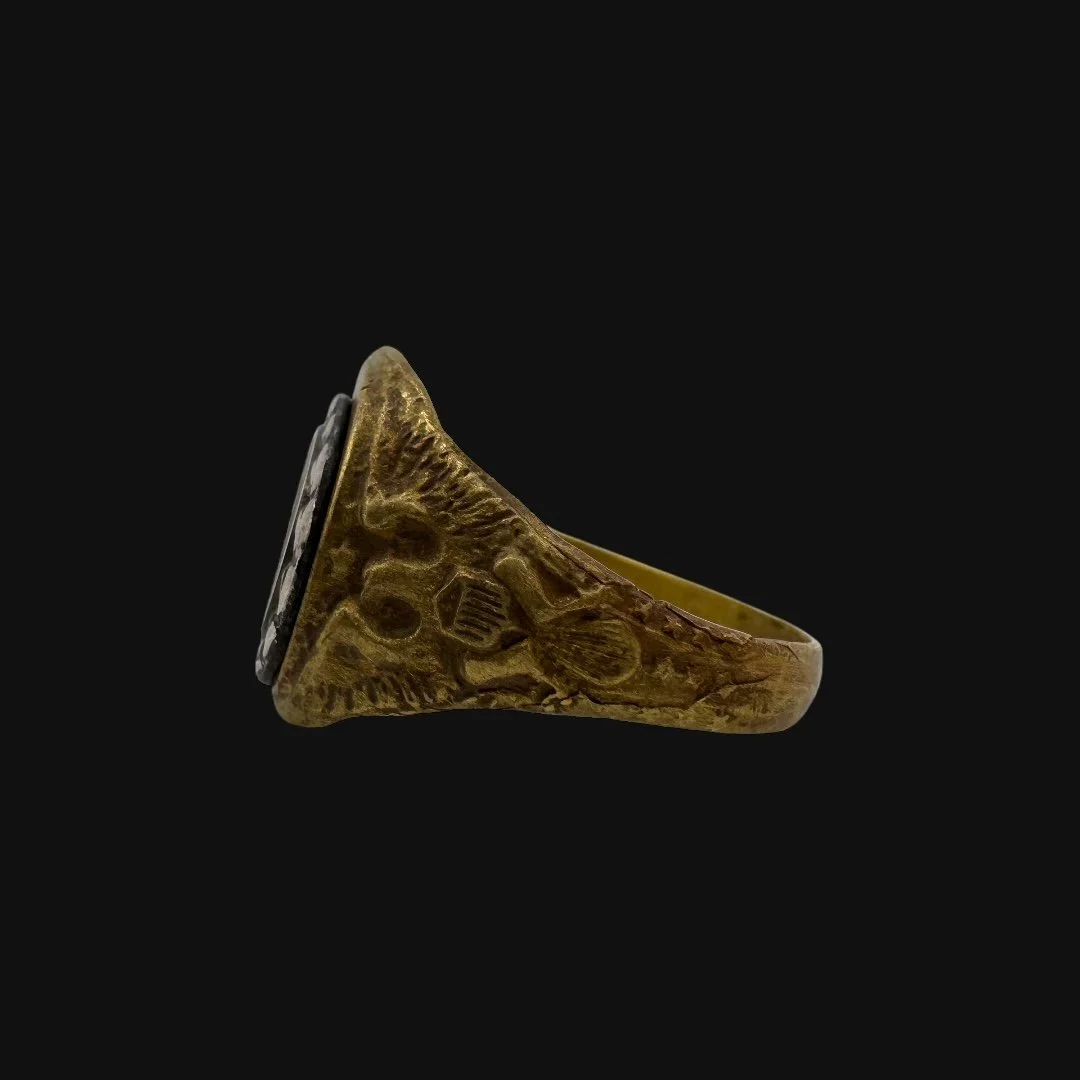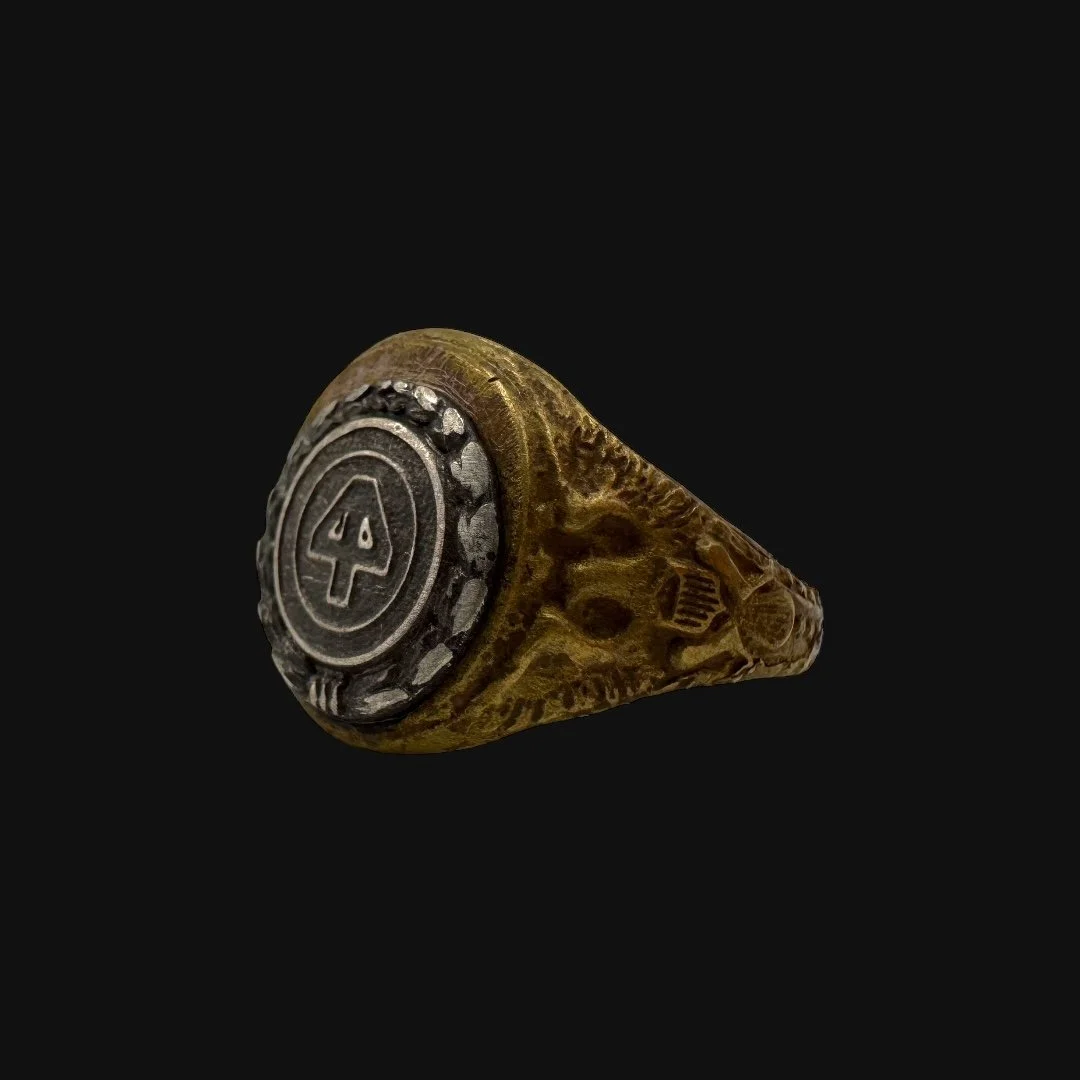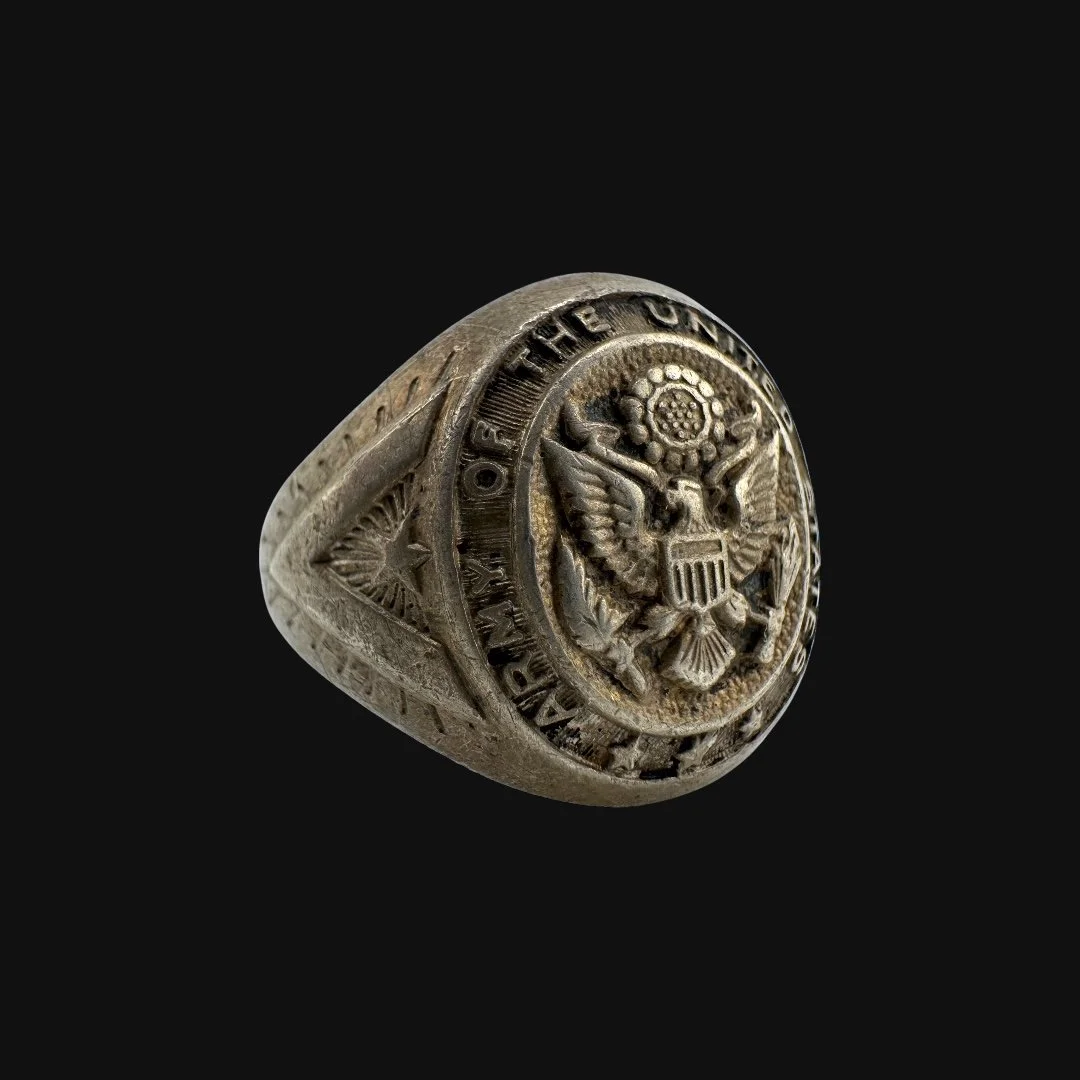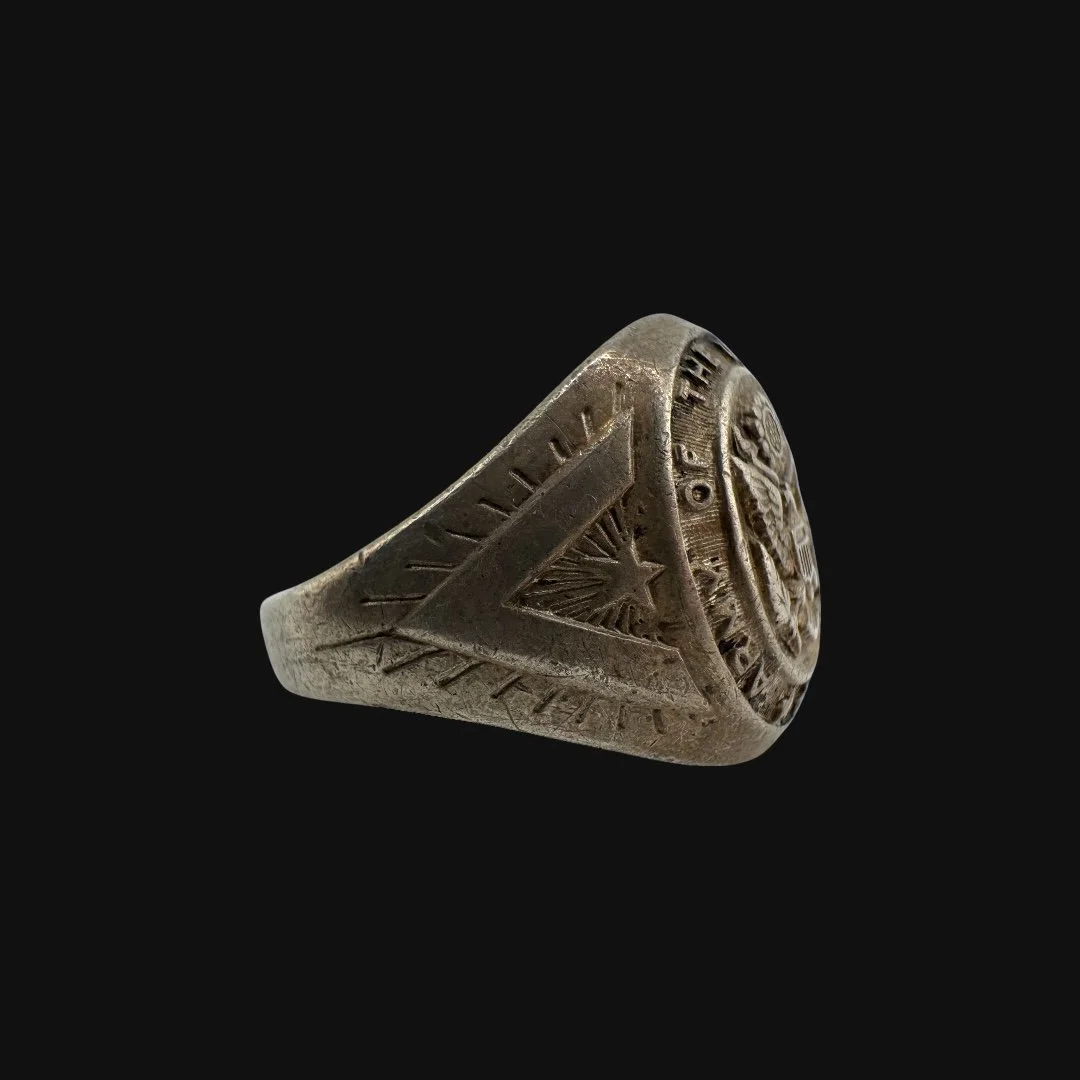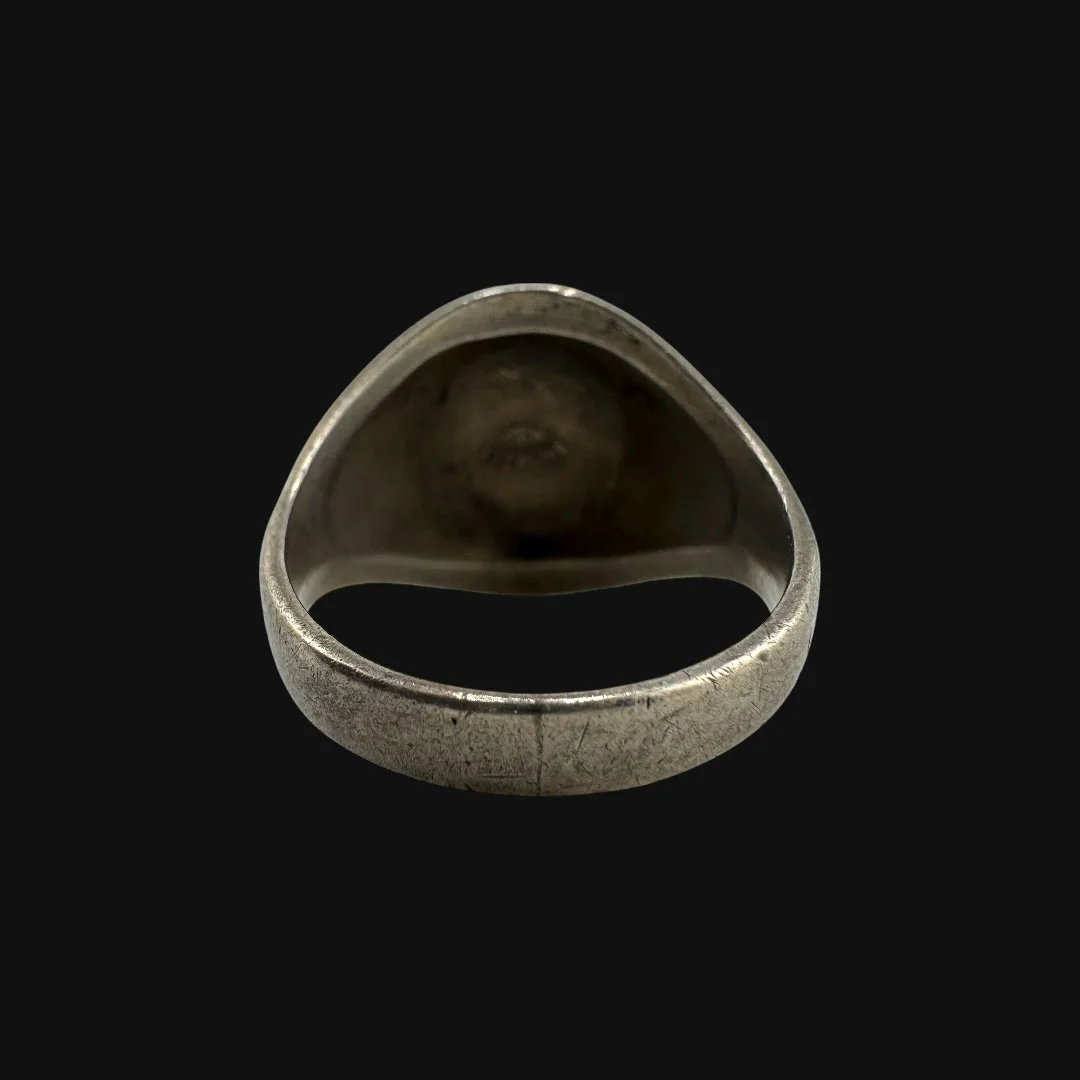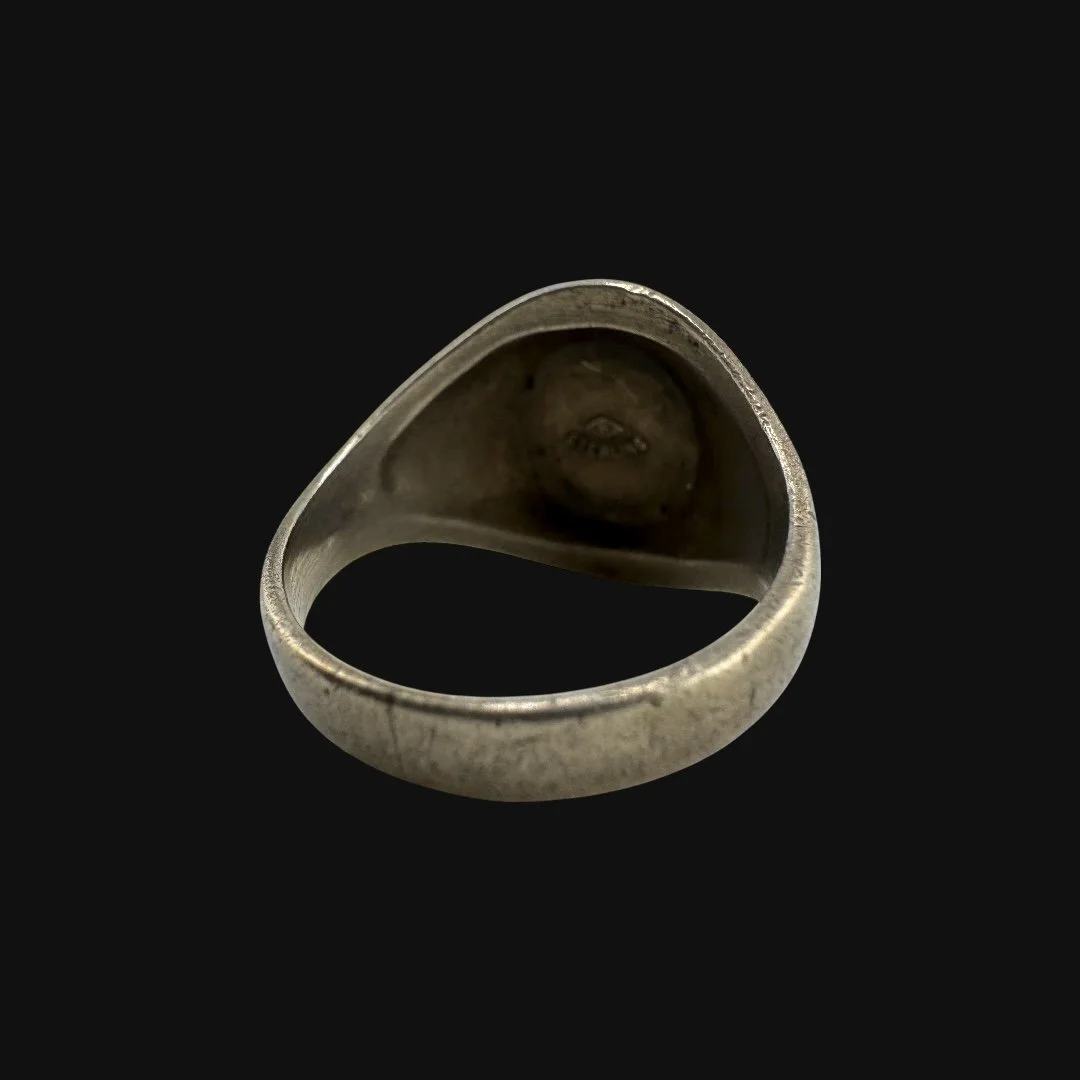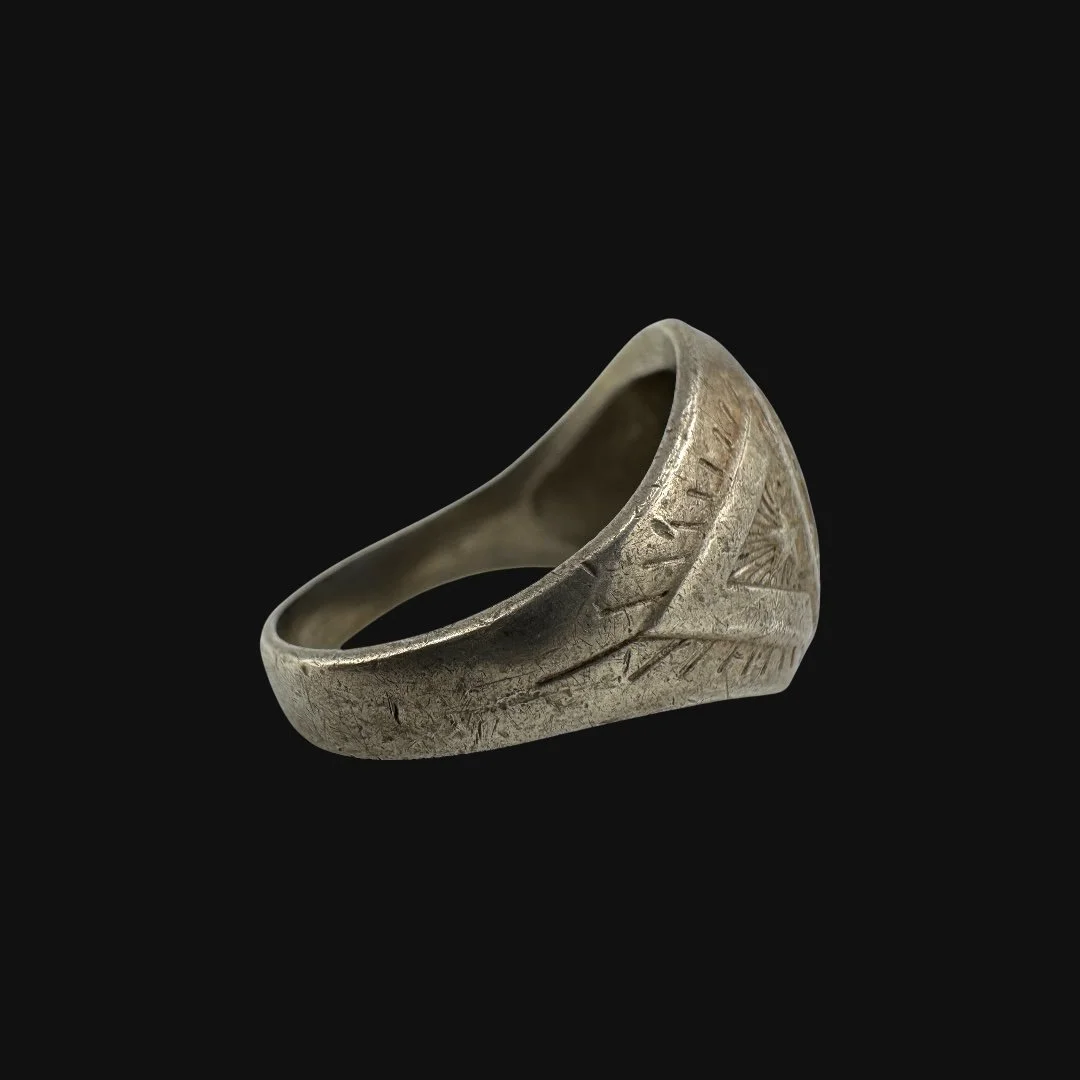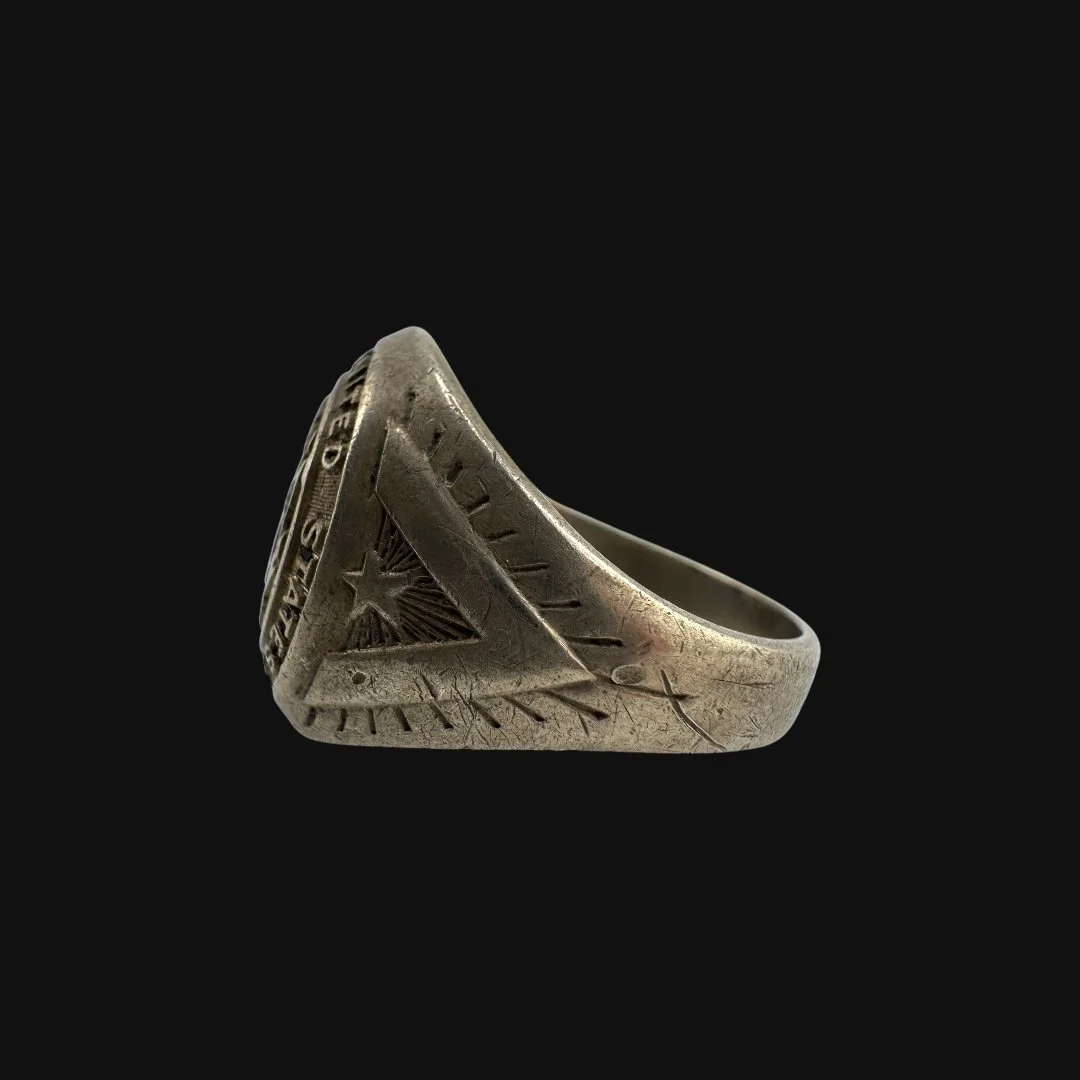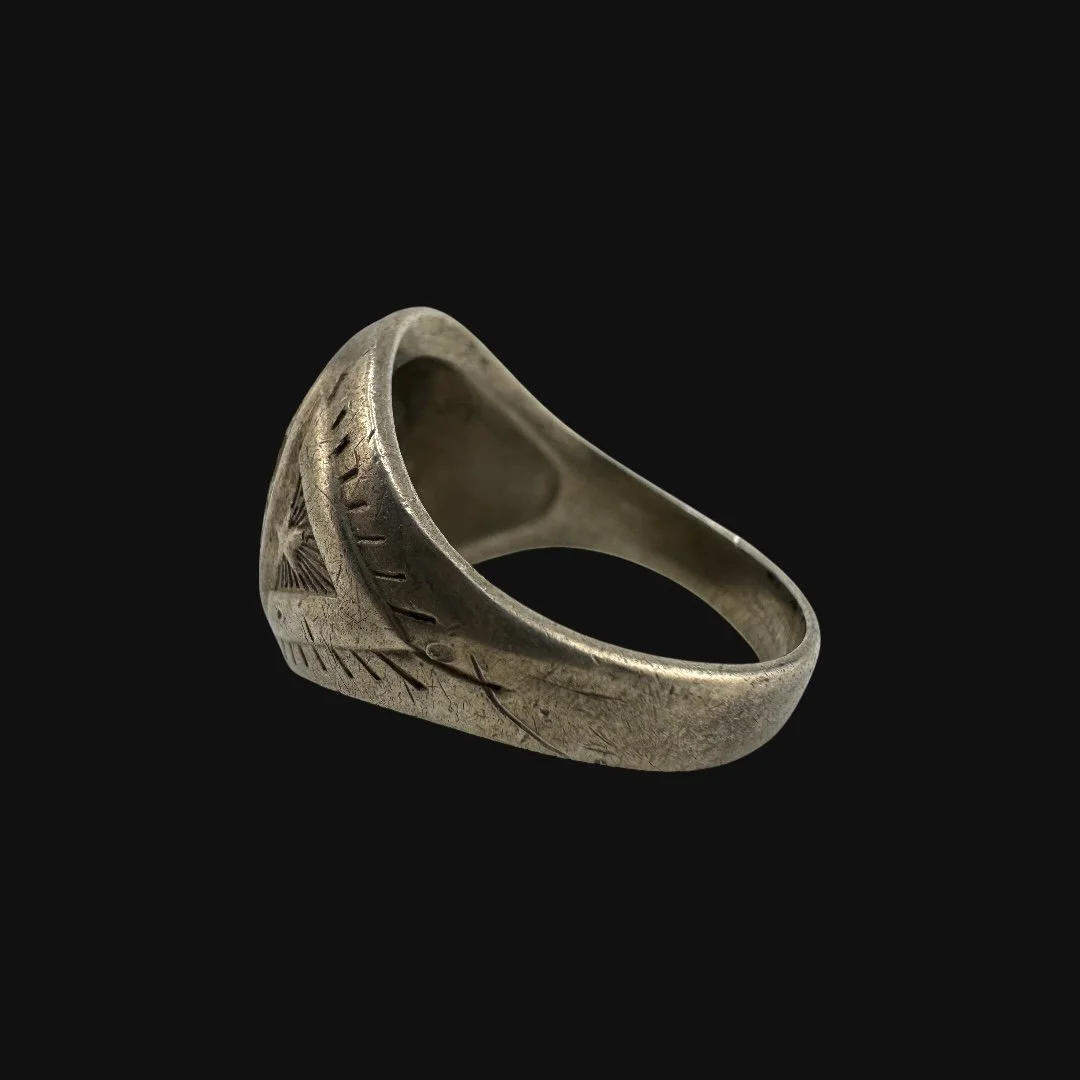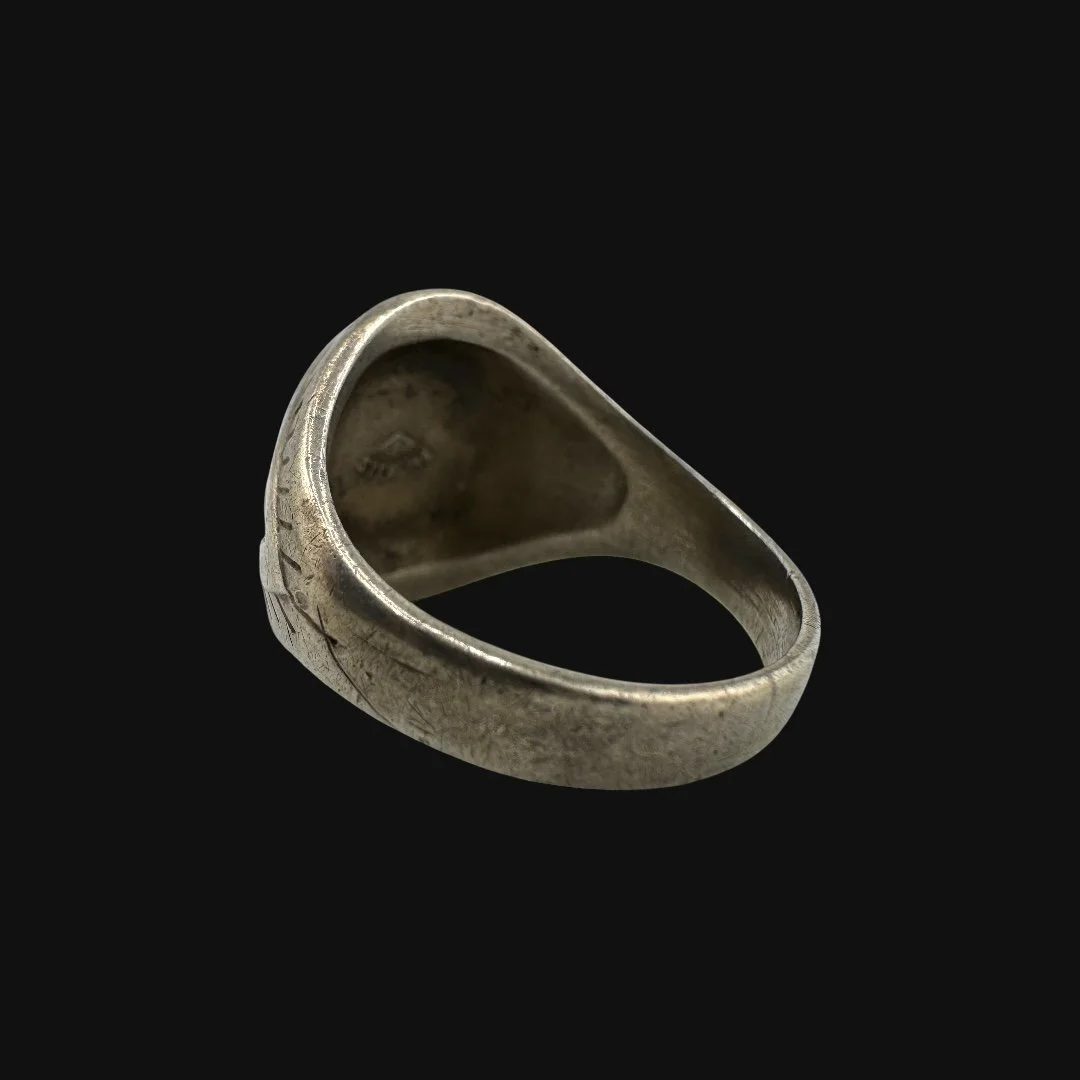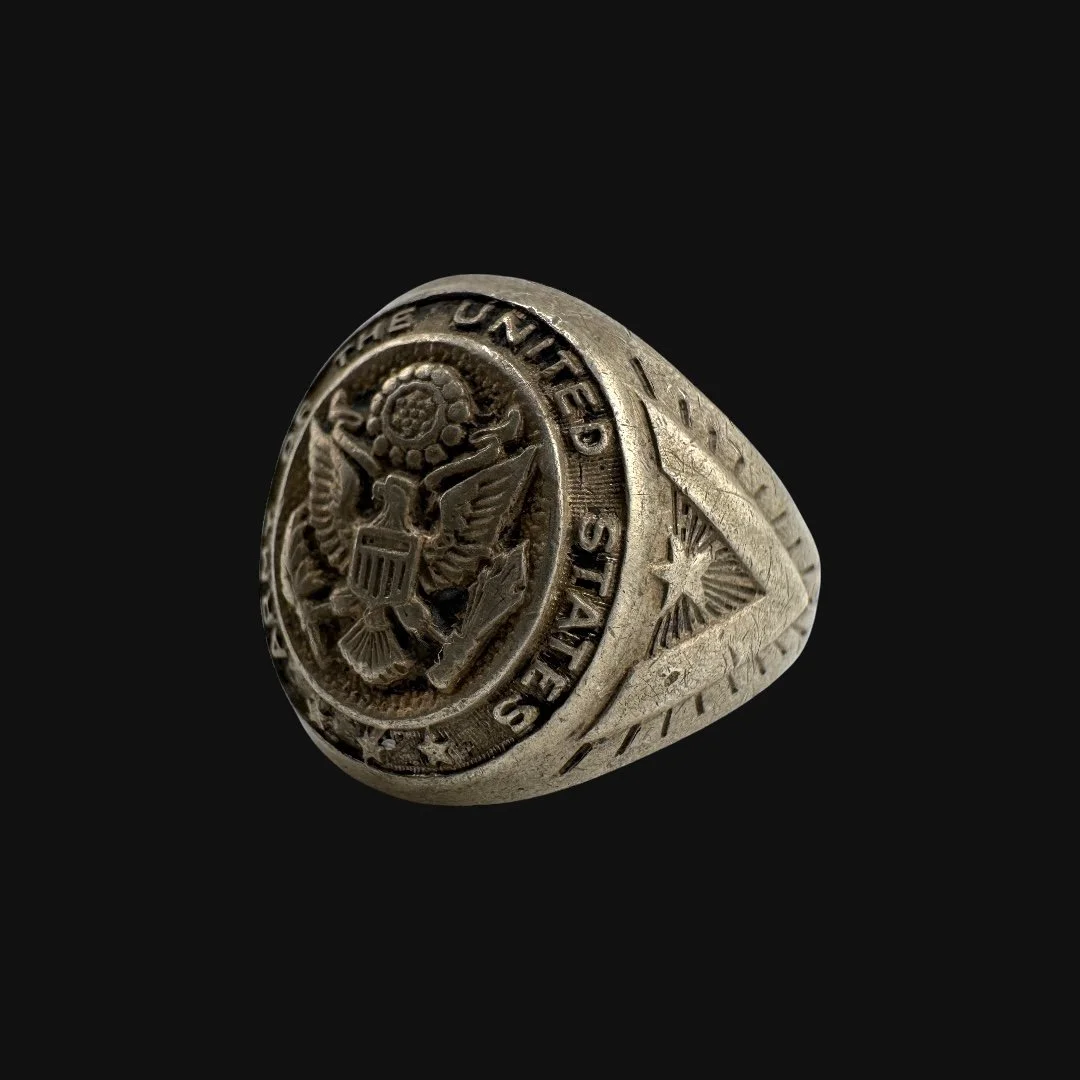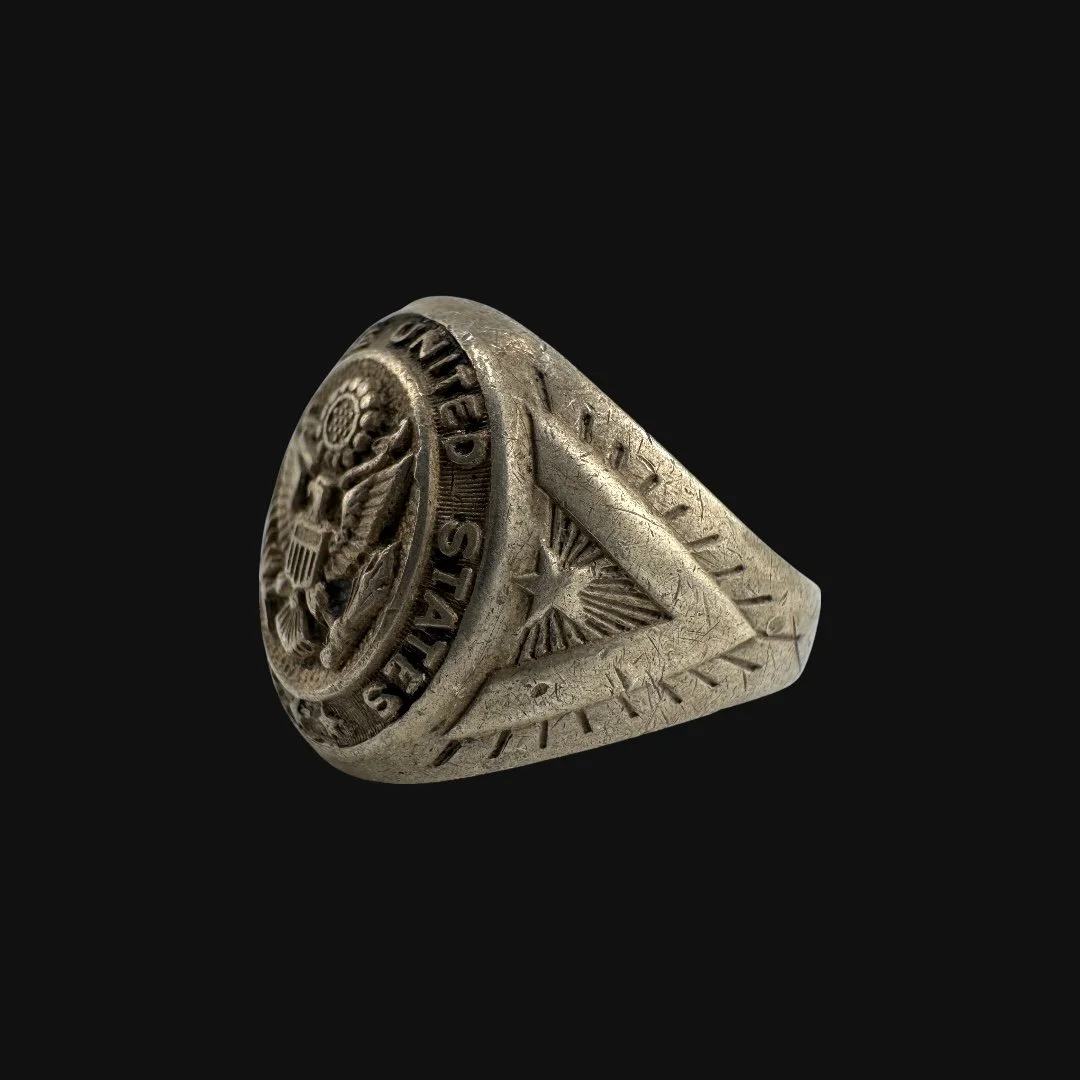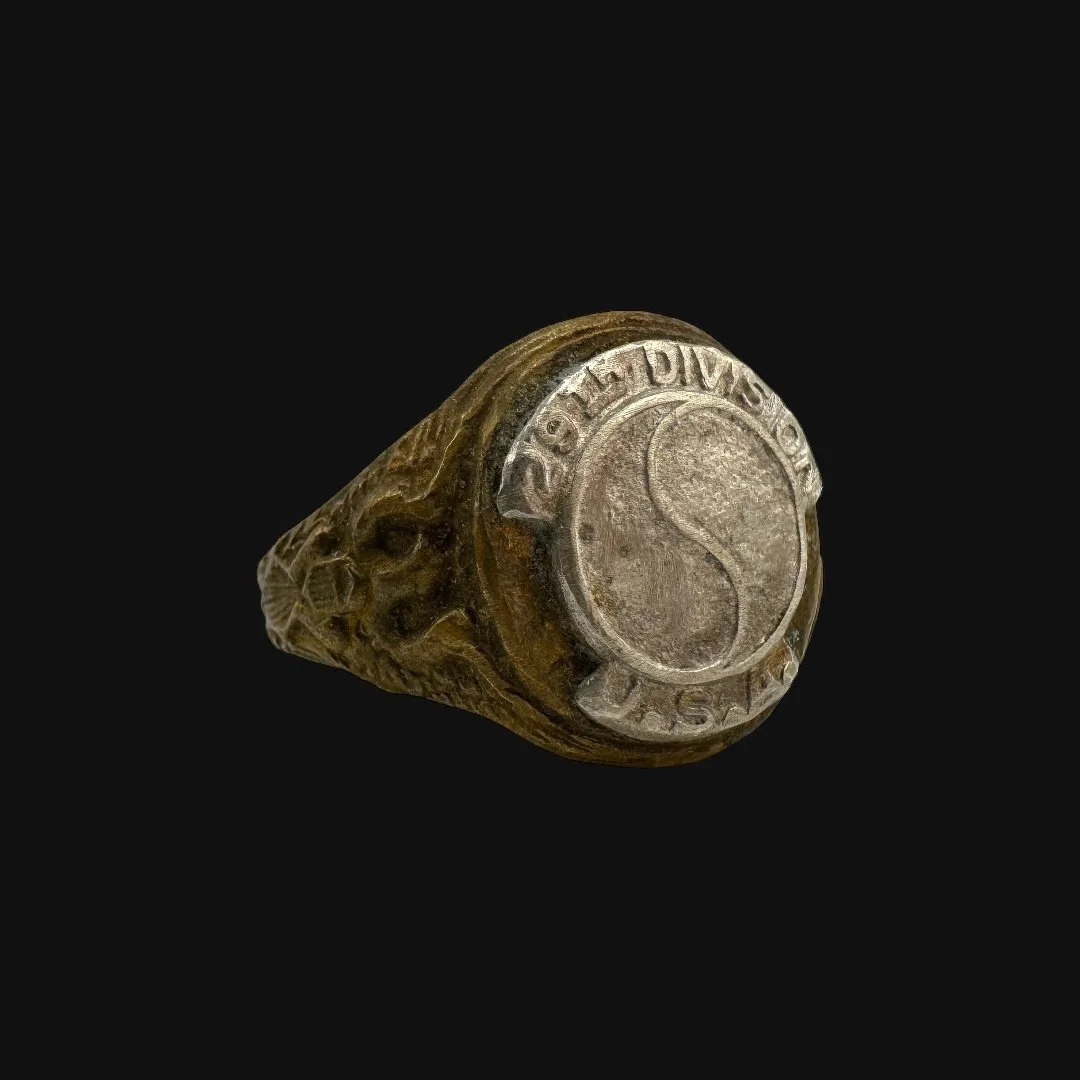 Image 1 of 15
Image 1 of 15

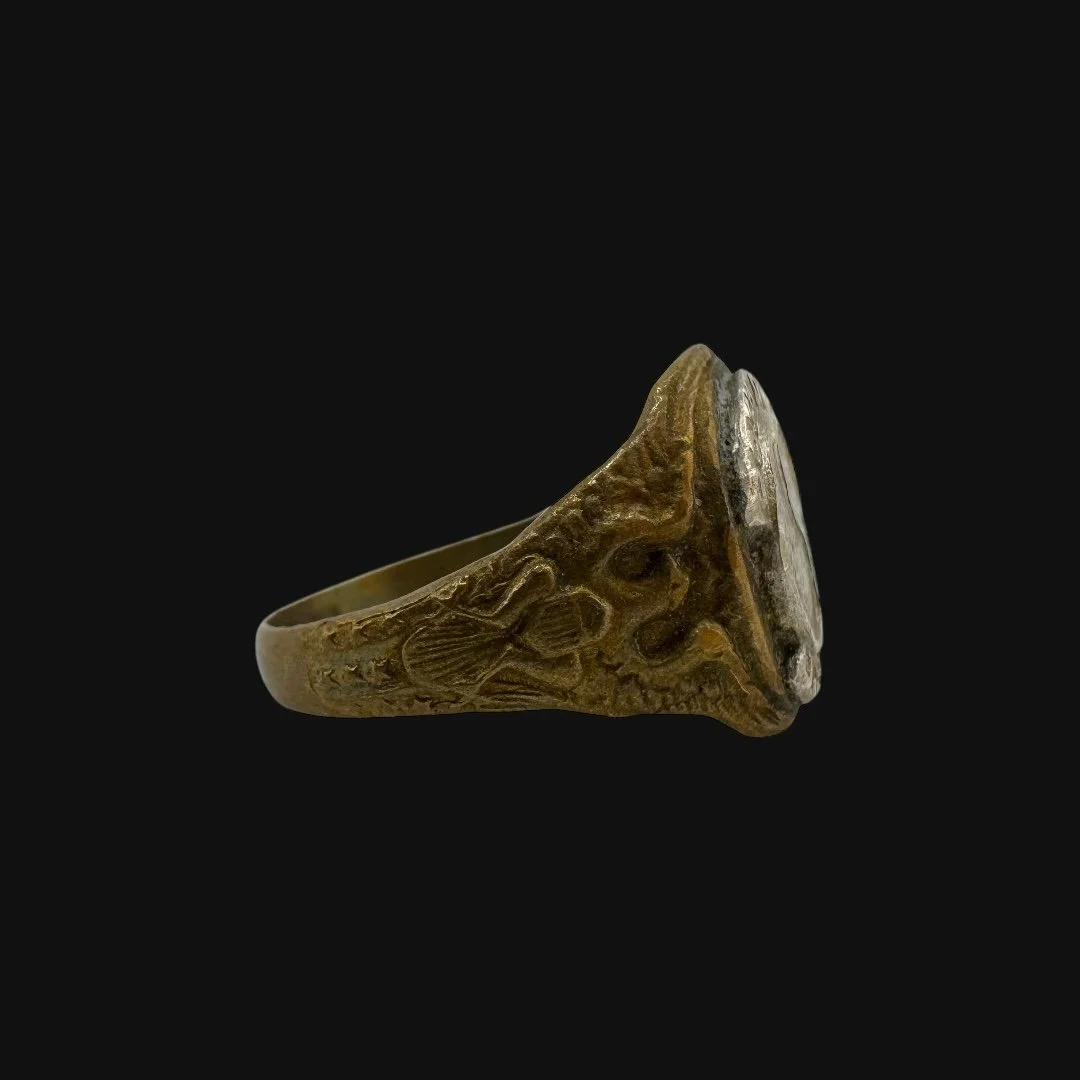 Image 2 of 15
Image 2 of 15

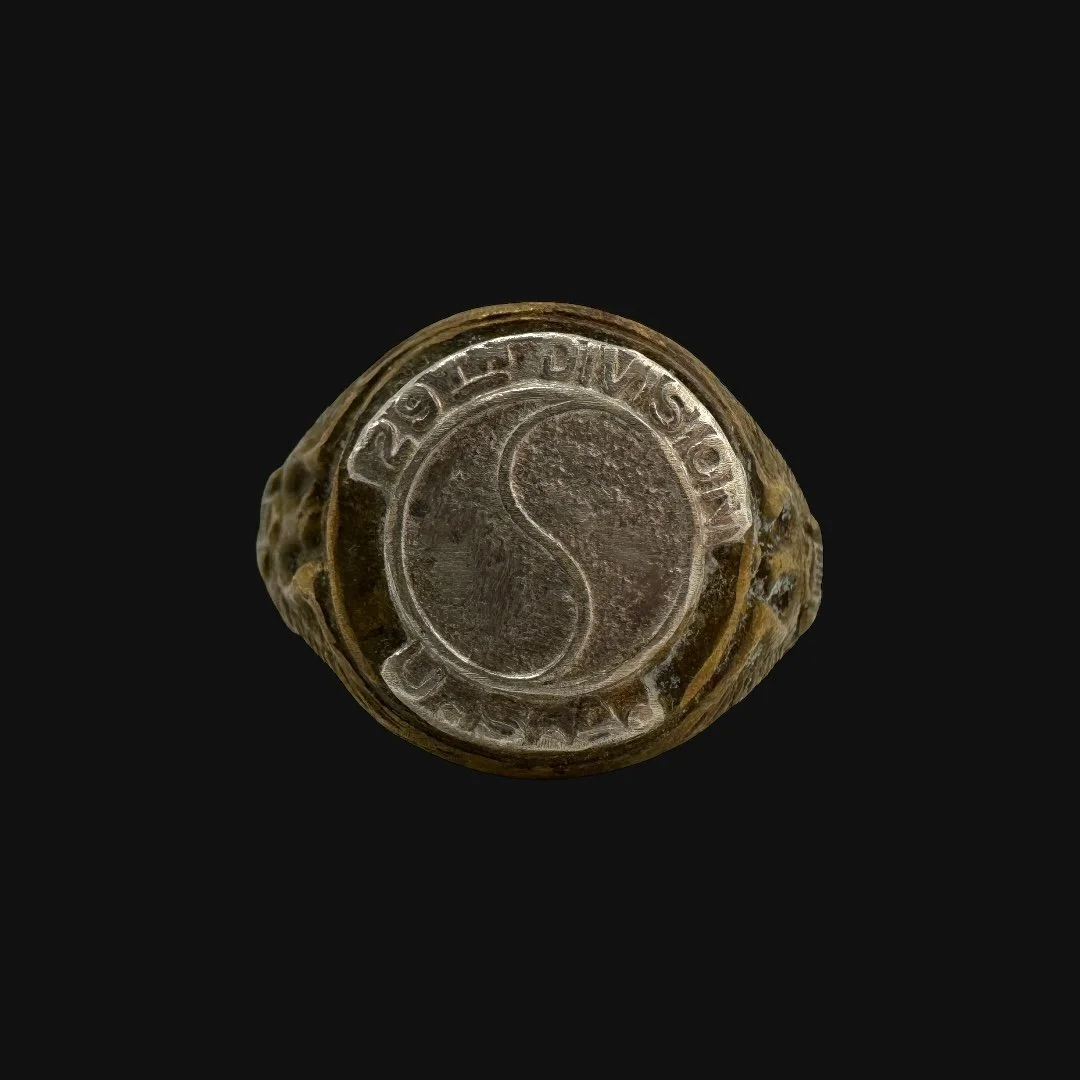 Image 3 of 15
Image 3 of 15

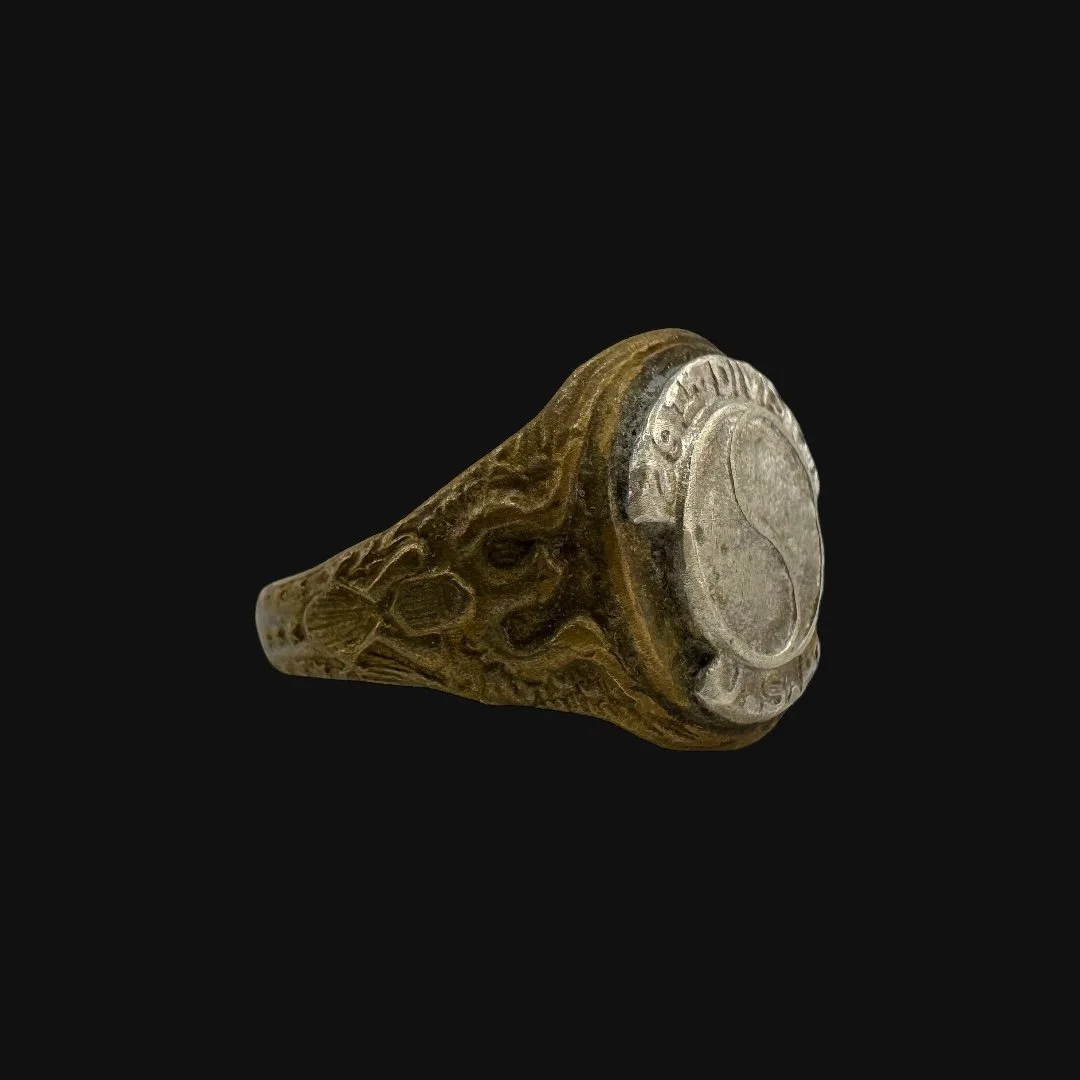 Image 4 of 15
Image 4 of 15

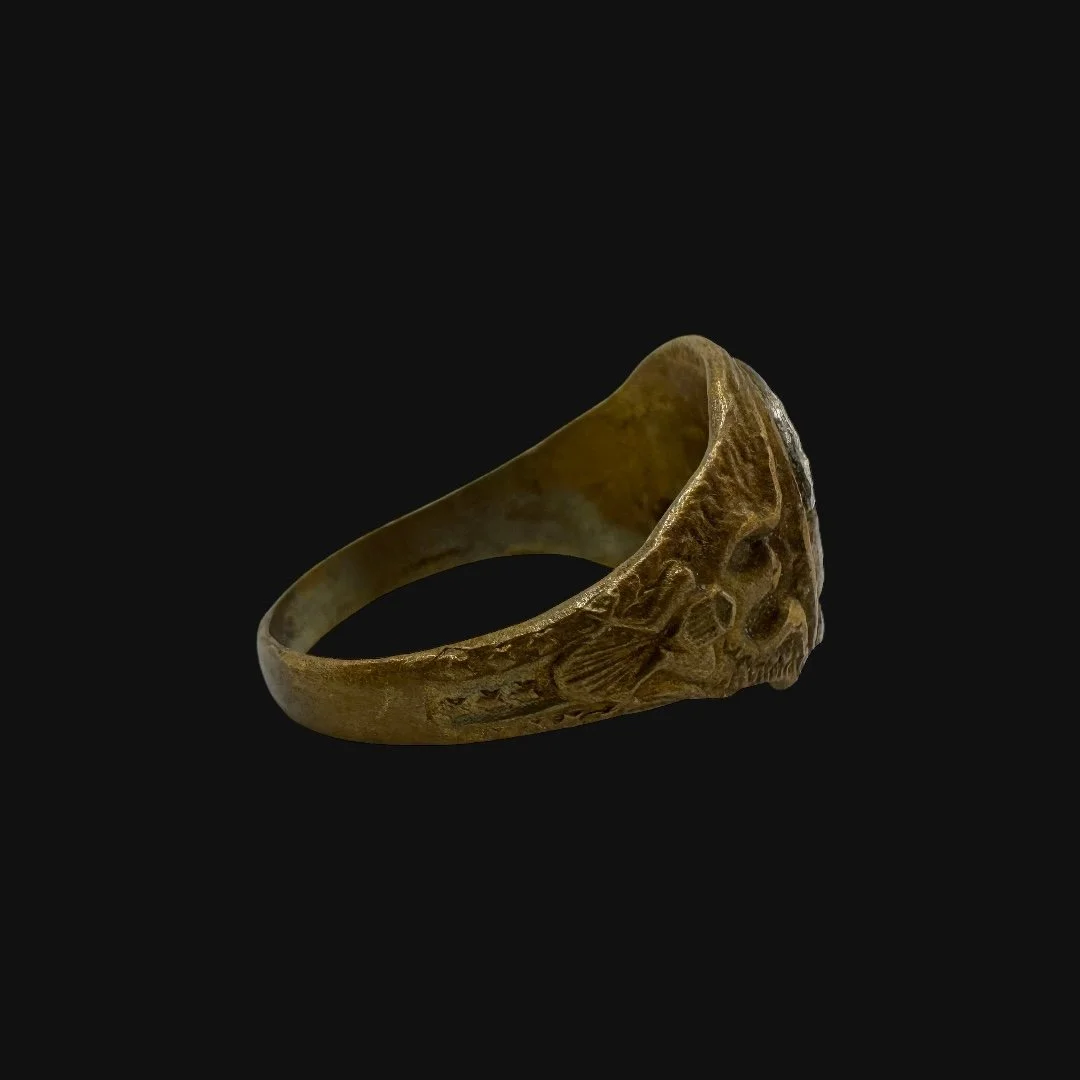 Image 5 of 15
Image 5 of 15

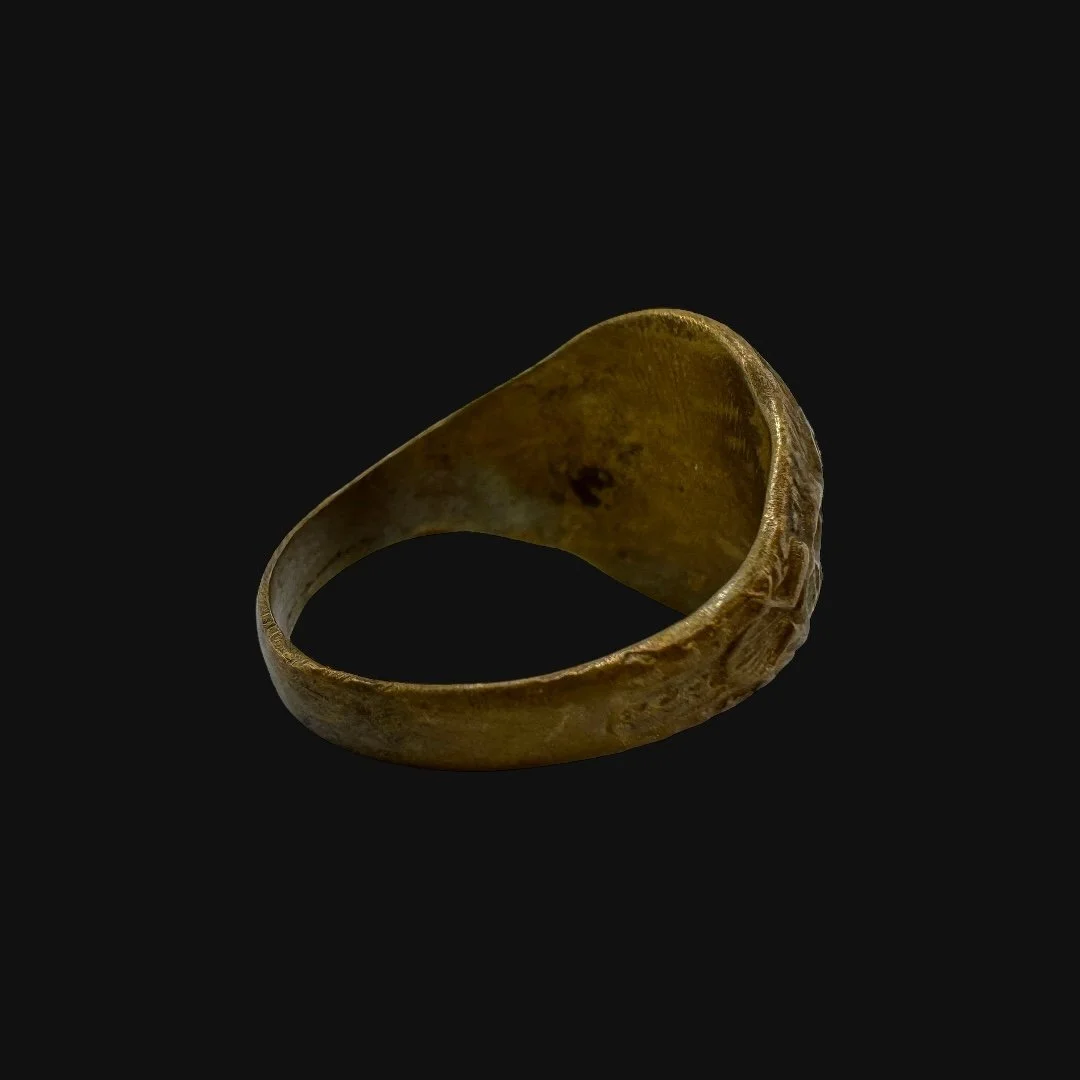 Image 6 of 15
Image 6 of 15

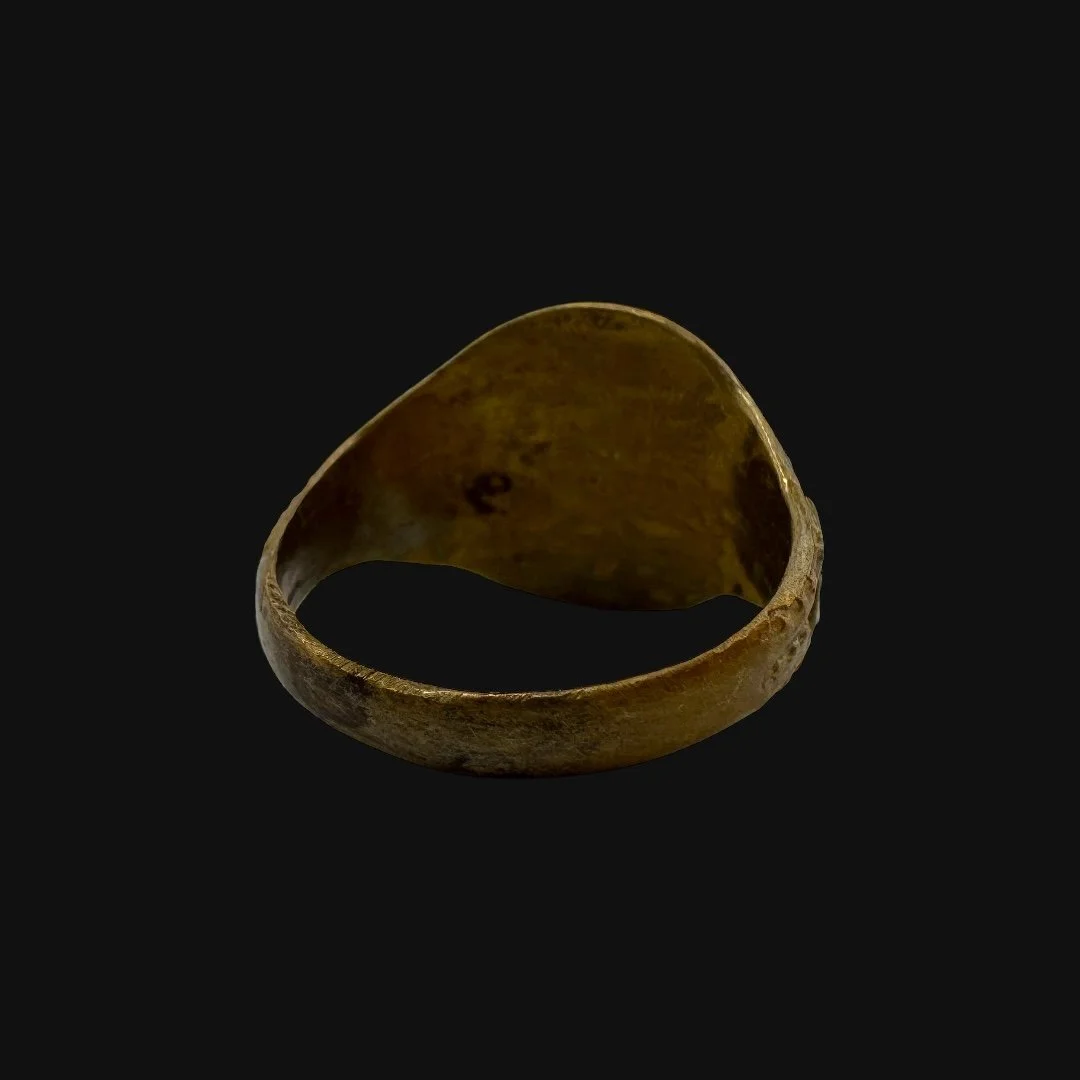 Image 7 of 15
Image 7 of 15

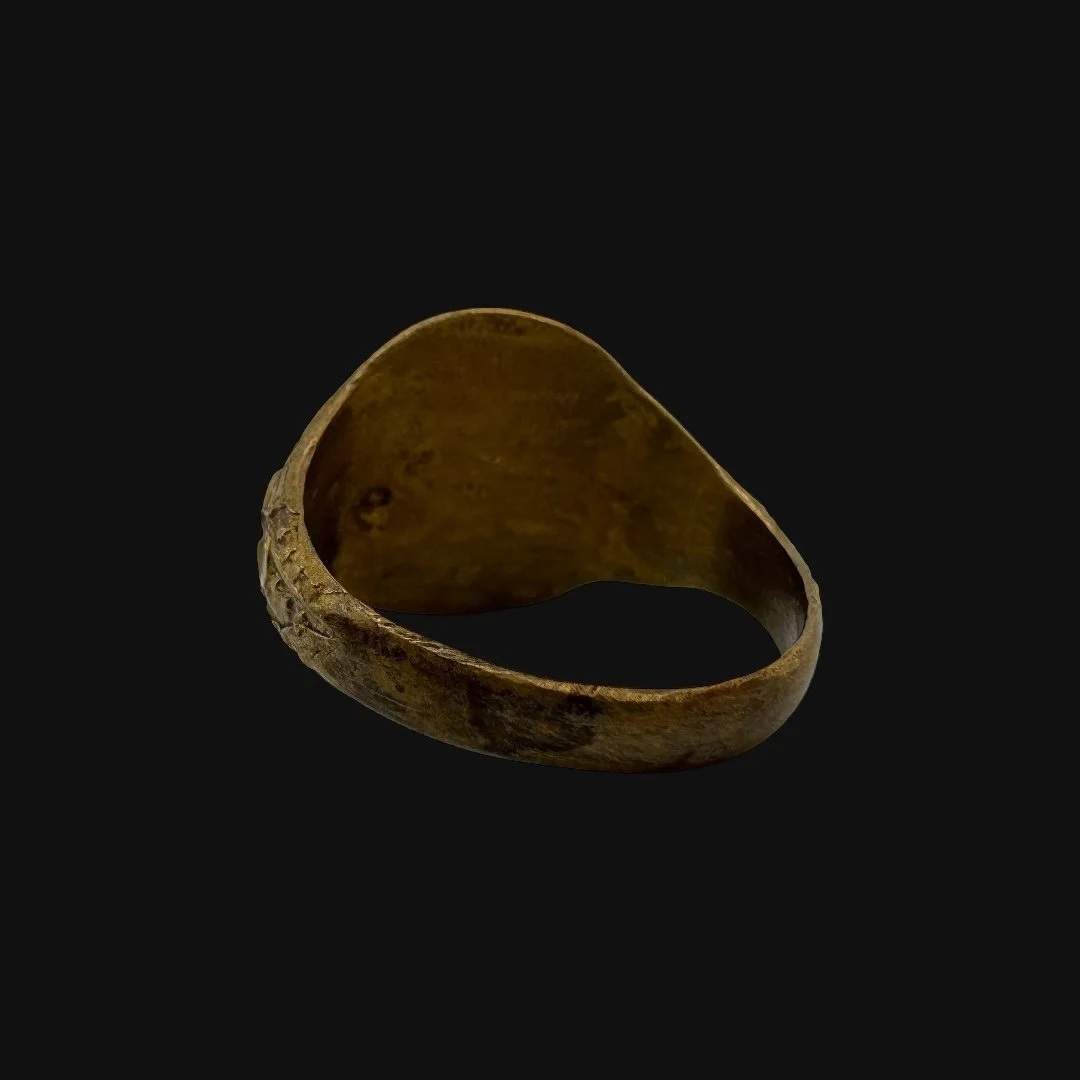 Image 8 of 15
Image 8 of 15

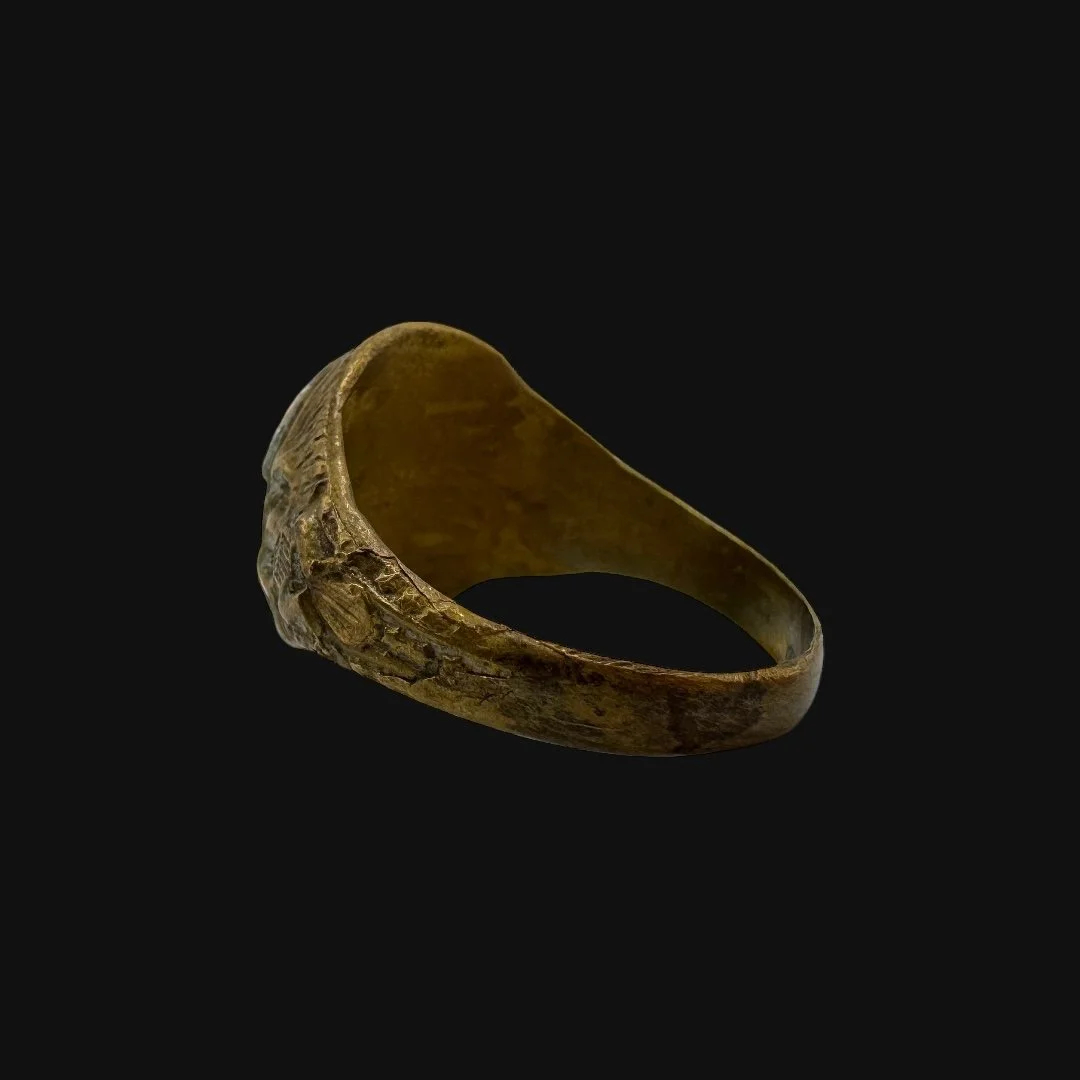 Image 9 of 15
Image 9 of 15

 Image 10 of 15
Image 10 of 15

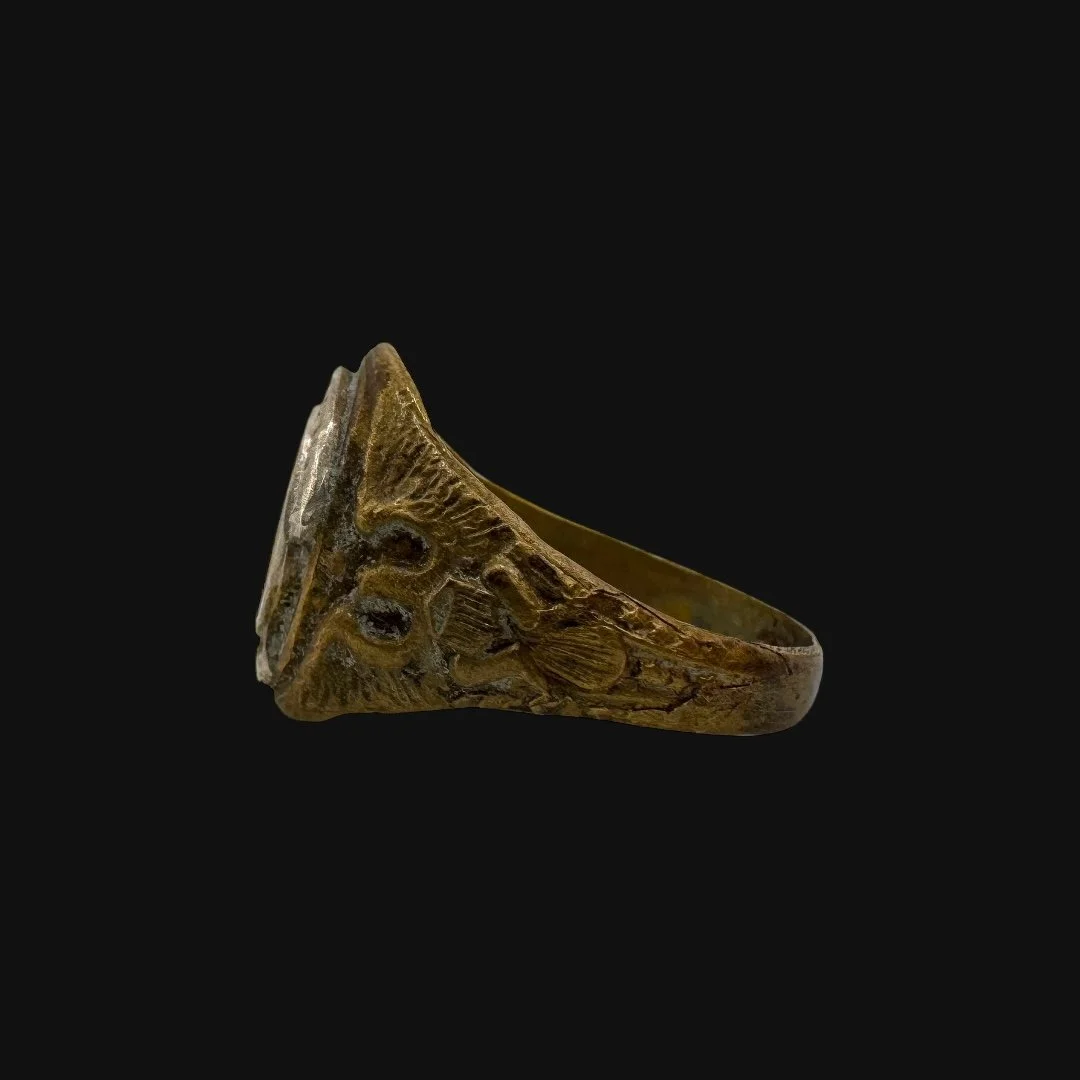 Image 11 of 15
Image 11 of 15

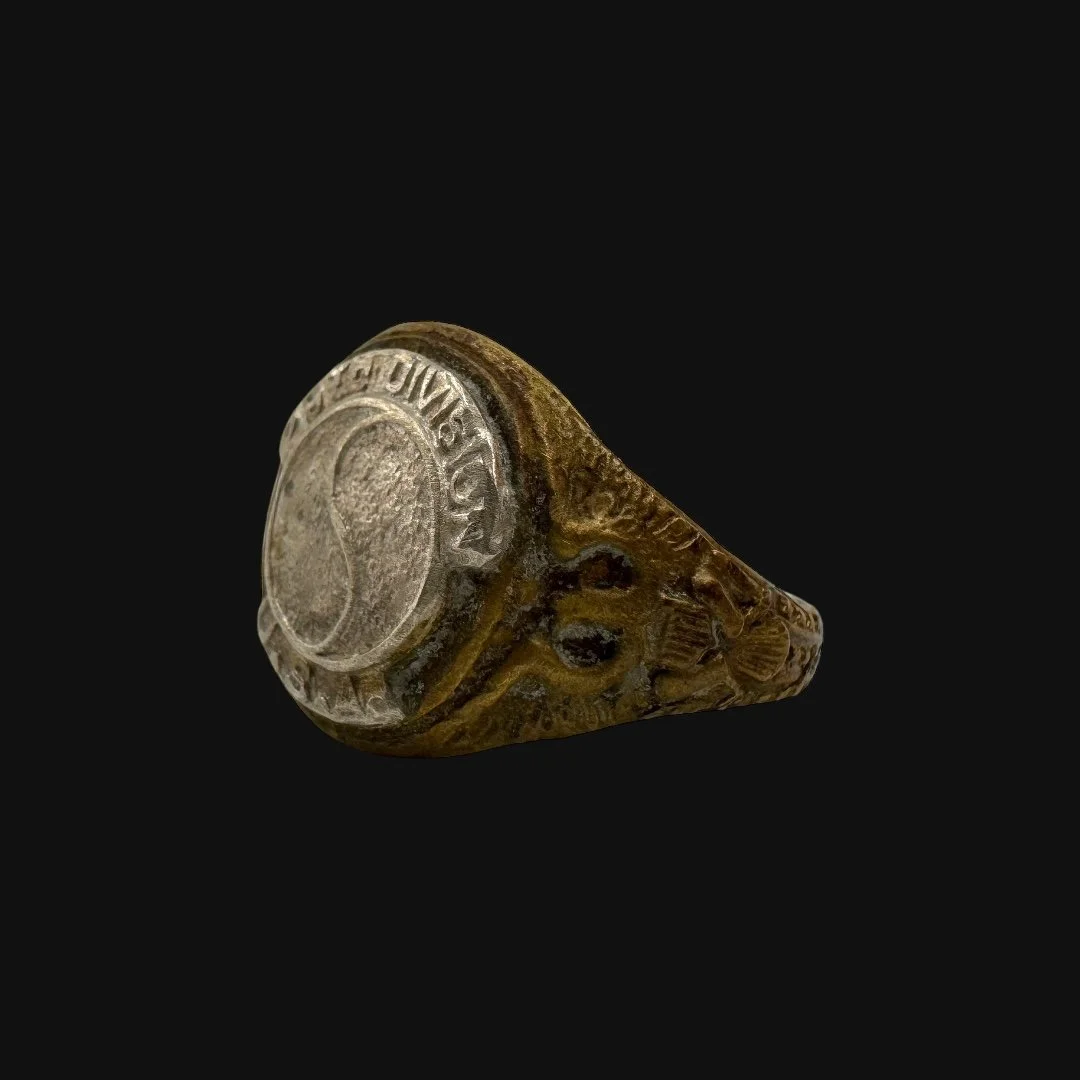 Image 12 of 15
Image 12 of 15

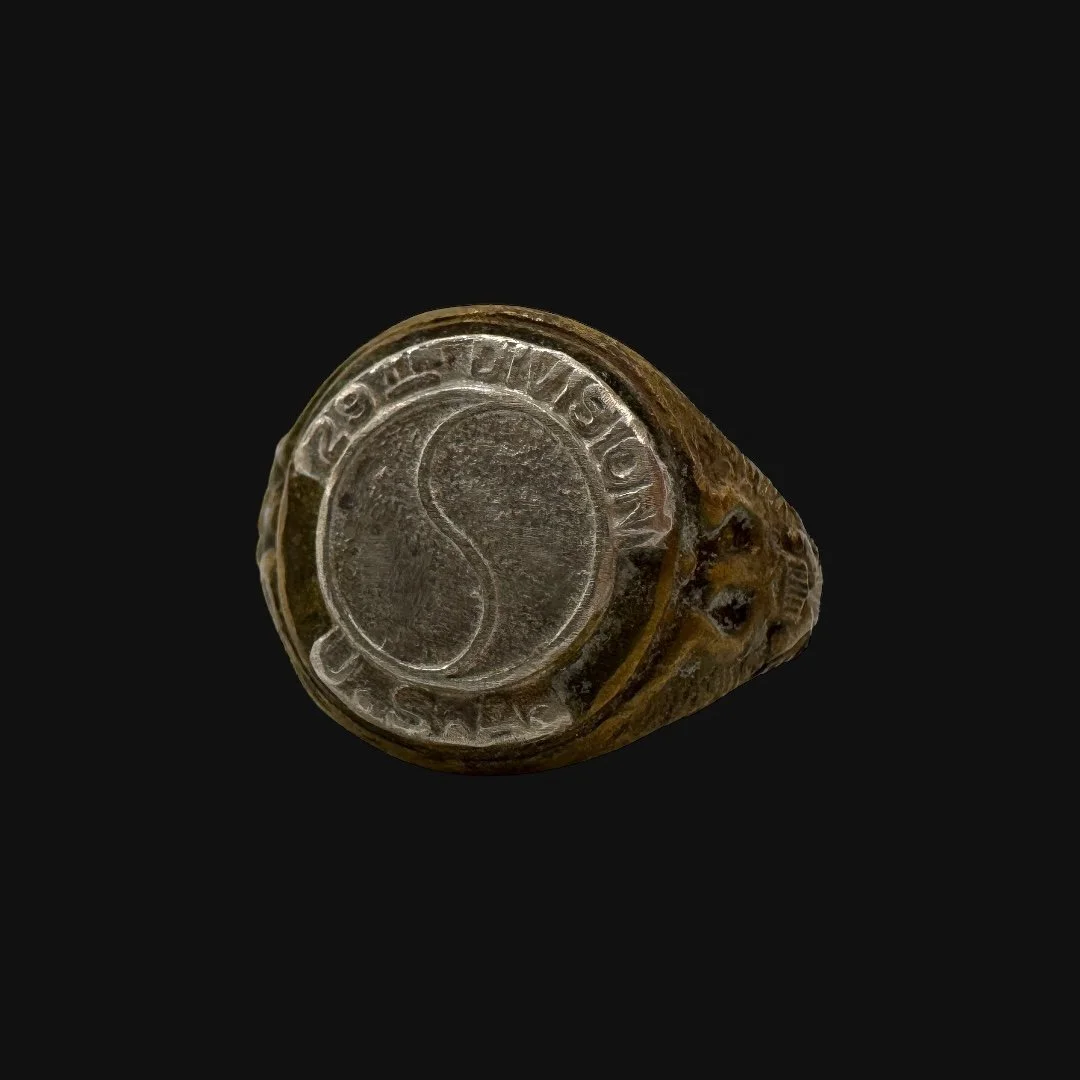 Image 13 of 15
Image 13 of 15

 Image 14 of 15
Image 14 of 15

 Image 15 of 15
Image 15 of 15
















Original WWII 1943-1945 U.S. Army 29th Infantry Division “Blue and Gray Division” Combat Soldier's Military Ring (Size 11)
Comes with a hand-signed C.O.A. and a full historical research write-up
From: World War II
Branch: U.S. Army
Division: 29th Infantry Division (Blue and Gray Division)
Dated: 1943-1945
Ring Size: 11 (US)
Material: Bronze & Sterling Silver
Wearable History Collection:
This authentic 1943-1945 WWII-era ring, preserved in its original and unaltered condition, combines exceptional craftsmanship with lasting durability, making it fully suitable for modern wear today. As part of our exclusive World War II “Wearable History Ring Collection,” it offers the rare opportunity to own and wear a genuine piece of World War II. Both a timeless accessory and a tangible link to the past, this truly one-of-a-kind ring stands as a wearable tribute to the courage and sacrifice of a generation.
Historical Significance to the 29th Infantry Division During WWII:
The 29th Infantry Division, the famed “Blue and Gray Division” of National Guard soldiers from both North and South, became one of the most storied U.S. Army divisions of World War II. Activated in 1941 and trained extensively in amphibious warfare, it was selected to spearhead the Normandy invasion. On D-Day, June 6, 1944, the 29th, particularly its 116th Infantry Regiment, landed in the first waves on Omaha Beach, facing withering fire from entrenched German defenders. Entire companies were decimated, but through determination and small-unit initiative, the division fought its way off the beach, securing a critical foothold at terrible cost. This achievement became one of the defining moments of the war, symbolizing American sacrifice and resolve.
In the weeks that followed, the 29th endured grueling combat in the hedgerows of Normandy, where every field was a fortress. Its greatest contribution came in the capture of Saint-Lô in July 1944, a pivotal victory that enabled Operation Cobra and the breakout across France. From there, the division advanced steadily through France, Belgium, and the Netherlands, engaging in urban battles and relentless offensive action. It later breached the Siegfried Line, fought across the Roer River, and participated in the crossing of the Rhine in March 1945, pressing deep into Germany in the final months of the war. By May, the 29th had reached the Elbe River, linking up with Soviet forces and marking the collapse of Nazi Germany.
Over 242 days of combat, the division sustained more than 20,000 casualties, a testament to the ferocity of its campaigns. Soldiers of the 29th earned numerous medals for valor, with their service at Omaha Beach and Saint-Lô becoming legendary. Yet beyond individual battles, the division’s significance lies in its embodiment of the American citizen-soldier: National Guardsmen who transformed into hardened infantry, carrying the Allied cause from the blood-soaked beaches of Normandy to victory in the heart of Germany. The 29th’s legacy remains one of courage, sacrifice, and perseverance, ensuring its place among the most honored units of the Second World War.
The Legacy Within This Ring:
This original World War II 29th Infantry Division ring is a rare and deeply personal artifact, privately commissioned by a soldier of the famed “Blue and Gray Division.” Bearing the division’s emblem on its front, the ring allowed its owner to carry the symbol of his service not only on his uniform but as a daily reminder of sacrifice and brotherhood worn on his hand. For the men who stormed Omaha Beach on D-Day, fought through the hedgerows of Normandy, and pressed into Germany in the final drive for victory, such rings became more than jewelry. They were intimate tokens of endurance and courage, marking the wearer as one of those who had borne some of the hardest fighting of the war. Every engraved detail speaks to the pride of soldiers who carried the 29th’s insignia into battles that helped define the Allied victory. From the blood-stained sands of Omaha to the ruins of Saint-Lô and across the Rhine into Germany, the emblem represented both sacrifice and triumph. It stood as a mark of identity for men who endured nearly a year of relentless combat and proved themselves in some of the most pivotal campaigns in Europe. Today, this ring endures as a wearable relic of the 29th Infantry Division’s World War II service. It represents not only the immense courage of the soldiers who advanced under fire at Omaha Beach but also the lasting brotherhood of the Blue and Gray, whose service carried them from the beaches of Normandy to the heart of Germany. More than a collectible, it stands as a tribute to unity, resilience, and the spirit of the American citizen-soldier in one of history’s greatest conflicts.
Comes with a hand-signed C.O.A. and a full historical research write-up
From: World War II
Branch: U.S. Army
Division: 29th Infantry Division (Blue and Gray Division)
Dated: 1943-1945
Ring Size: 11 (US)
Material: Bronze & Sterling Silver
Wearable History Collection:
This authentic 1943-1945 WWII-era ring, preserved in its original and unaltered condition, combines exceptional craftsmanship with lasting durability, making it fully suitable for modern wear today. As part of our exclusive World War II “Wearable History Ring Collection,” it offers the rare opportunity to own and wear a genuine piece of World War II. Both a timeless accessory and a tangible link to the past, this truly one-of-a-kind ring stands as a wearable tribute to the courage and sacrifice of a generation.
Historical Significance to the 29th Infantry Division During WWII:
The 29th Infantry Division, the famed “Blue and Gray Division” of National Guard soldiers from both North and South, became one of the most storied U.S. Army divisions of World War II. Activated in 1941 and trained extensively in amphibious warfare, it was selected to spearhead the Normandy invasion. On D-Day, June 6, 1944, the 29th, particularly its 116th Infantry Regiment, landed in the first waves on Omaha Beach, facing withering fire from entrenched German defenders. Entire companies were decimated, but through determination and small-unit initiative, the division fought its way off the beach, securing a critical foothold at terrible cost. This achievement became one of the defining moments of the war, symbolizing American sacrifice and resolve.
In the weeks that followed, the 29th endured grueling combat in the hedgerows of Normandy, where every field was a fortress. Its greatest contribution came in the capture of Saint-Lô in July 1944, a pivotal victory that enabled Operation Cobra and the breakout across France. From there, the division advanced steadily through France, Belgium, and the Netherlands, engaging in urban battles and relentless offensive action. It later breached the Siegfried Line, fought across the Roer River, and participated in the crossing of the Rhine in March 1945, pressing deep into Germany in the final months of the war. By May, the 29th had reached the Elbe River, linking up with Soviet forces and marking the collapse of Nazi Germany.
Over 242 days of combat, the division sustained more than 20,000 casualties, a testament to the ferocity of its campaigns. Soldiers of the 29th earned numerous medals for valor, with their service at Omaha Beach and Saint-Lô becoming legendary. Yet beyond individual battles, the division’s significance lies in its embodiment of the American citizen-soldier: National Guardsmen who transformed into hardened infantry, carrying the Allied cause from the blood-soaked beaches of Normandy to victory in the heart of Germany. The 29th’s legacy remains one of courage, sacrifice, and perseverance, ensuring its place among the most honored units of the Second World War.
The Legacy Within This Ring:
This original World War II 29th Infantry Division ring is a rare and deeply personal artifact, privately commissioned by a soldier of the famed “Blue and Gray Division.” Bearing the division’s emblem on its front, the ring allowed its owner to carry the symbol of his service not only on his uniform but as a daily reminder of sacrifice and brotherhood worn on his hand. For the men who stormed Omaha Beach on D-Day, fought through the hedgerows of Normandy, and pressed into Germany in the final drive for victory, such rings became more than jewelry. They were intimate tokens of endurance and courage, marking the wearer as one of those who had borne some of the hardest fighting of the war. Every engraved detail speaks to the pride of soldiers who carried the 29th’s insignia into battles that helped define the Allied victory. From the blood-stained sands of Omaha to the ruins of Saint-Lô and across the Rhine into Germany, the emblem represented both sacrifice and triumph. It stood as a mark of identity for men who endured nearly a year of relentless combat and proved themselves in some of the most pivotal campaigns in Europe. Today, this ring endures as a wearable relic of the 29th Infantry Division’s World War II service. It represents not only the immense courage of the soldiers who advanced under fire at Omaha Beach but also the lasting brotherhood of the Blue and Gray, whose service carried them from the beaches of Normandy to the heart of Germany. More than a collectible, it stands as a tribute to unity, resilience, and the spirit of the American citizen-soldier in one of history’s greatest conflicts.
